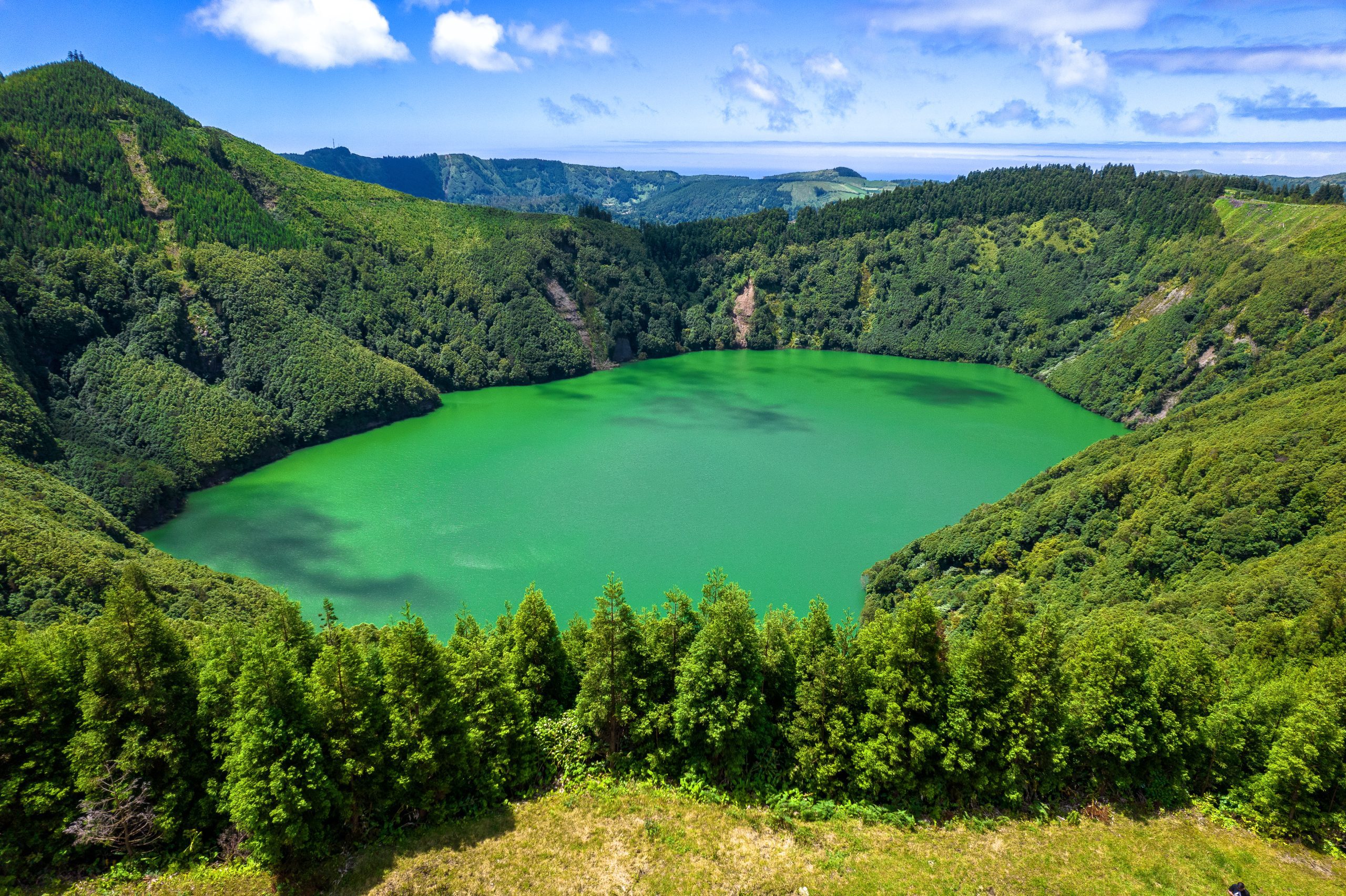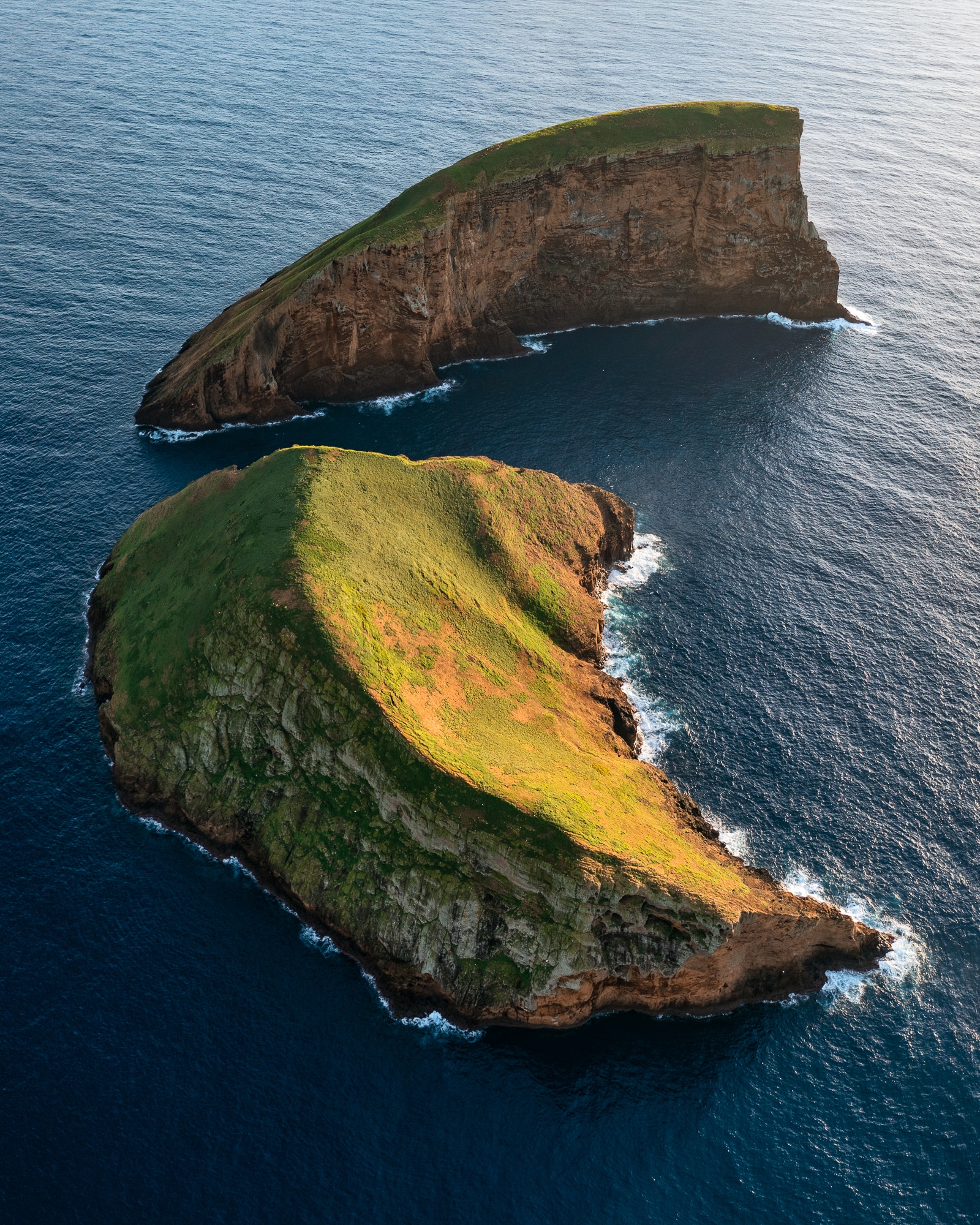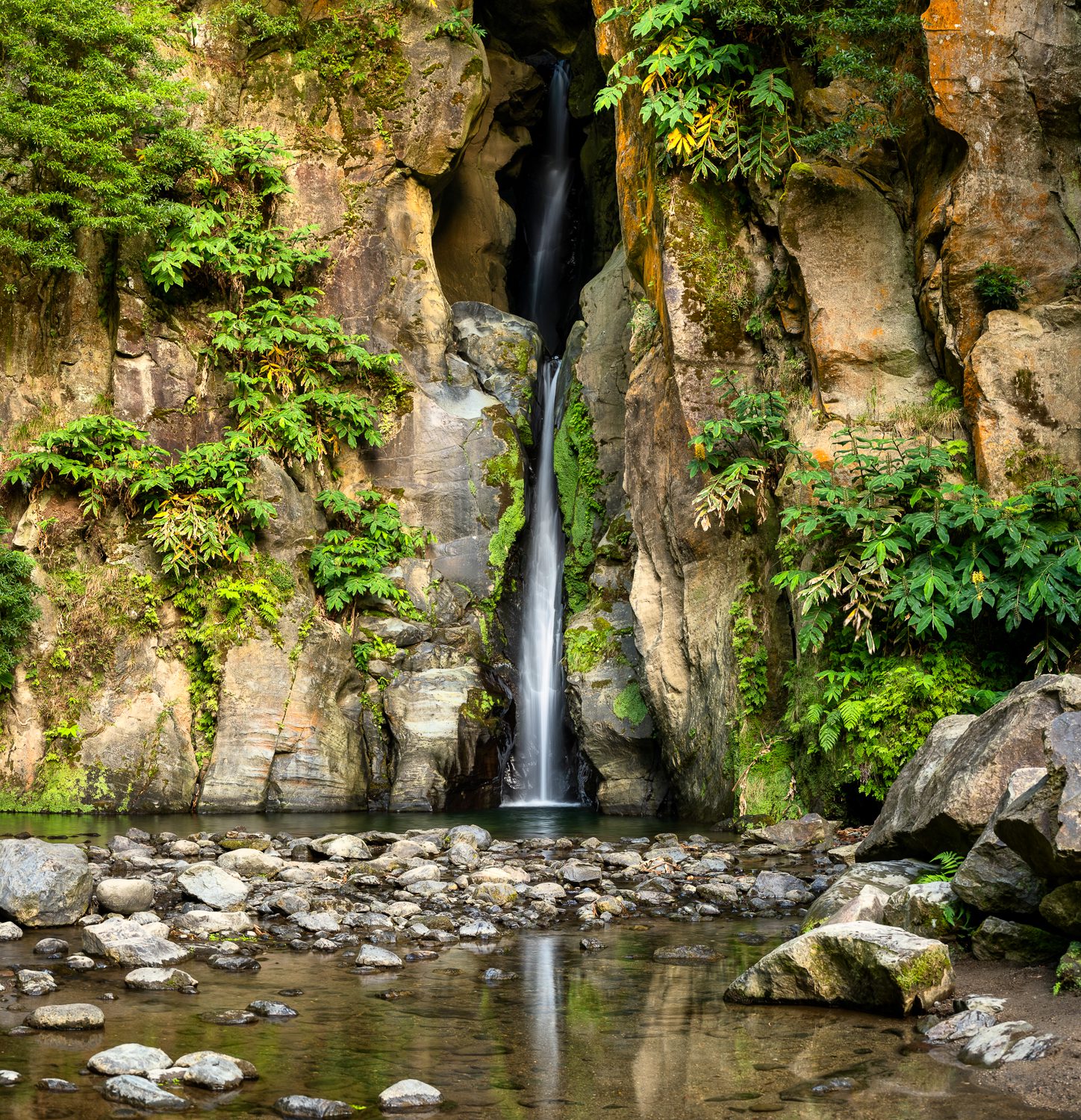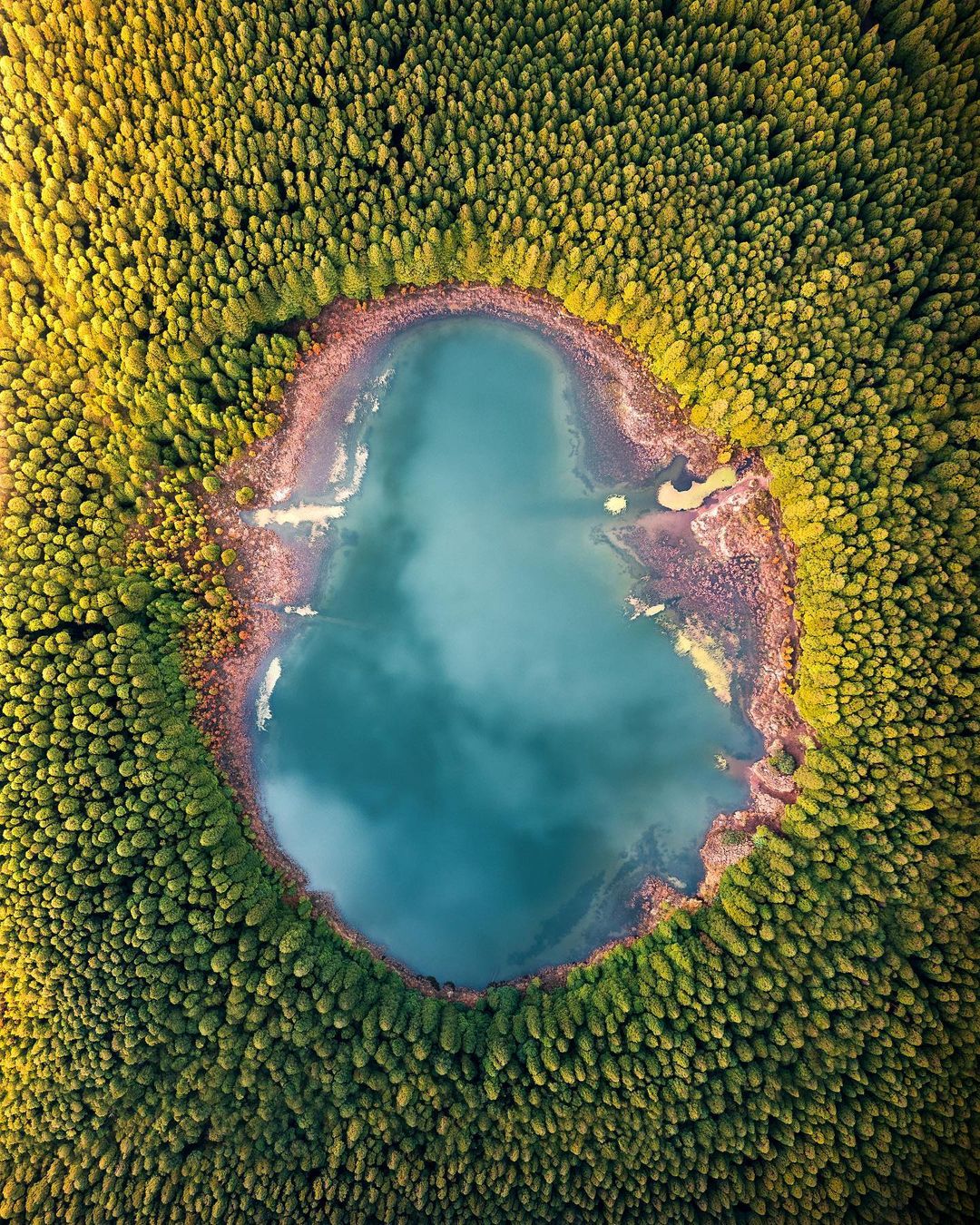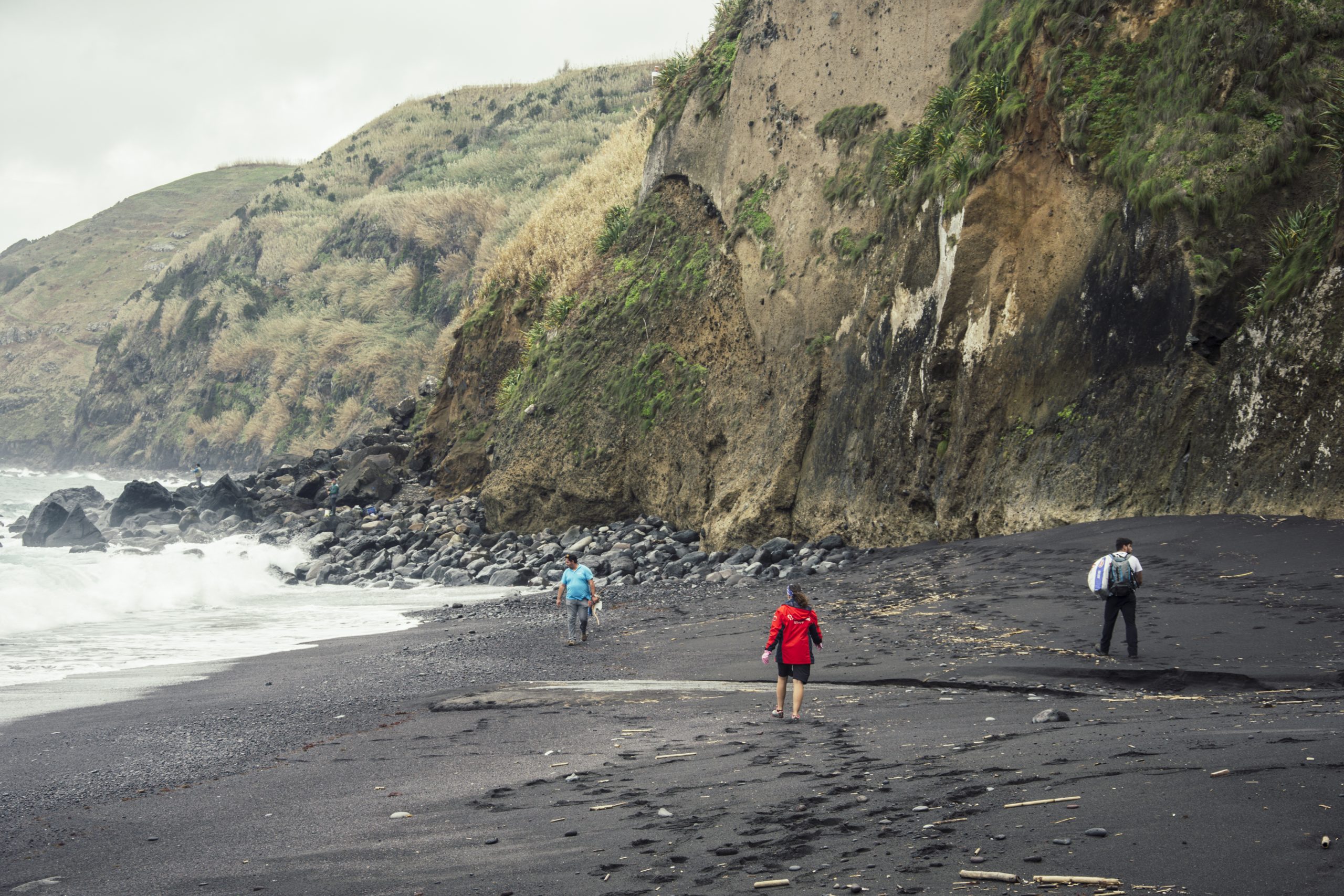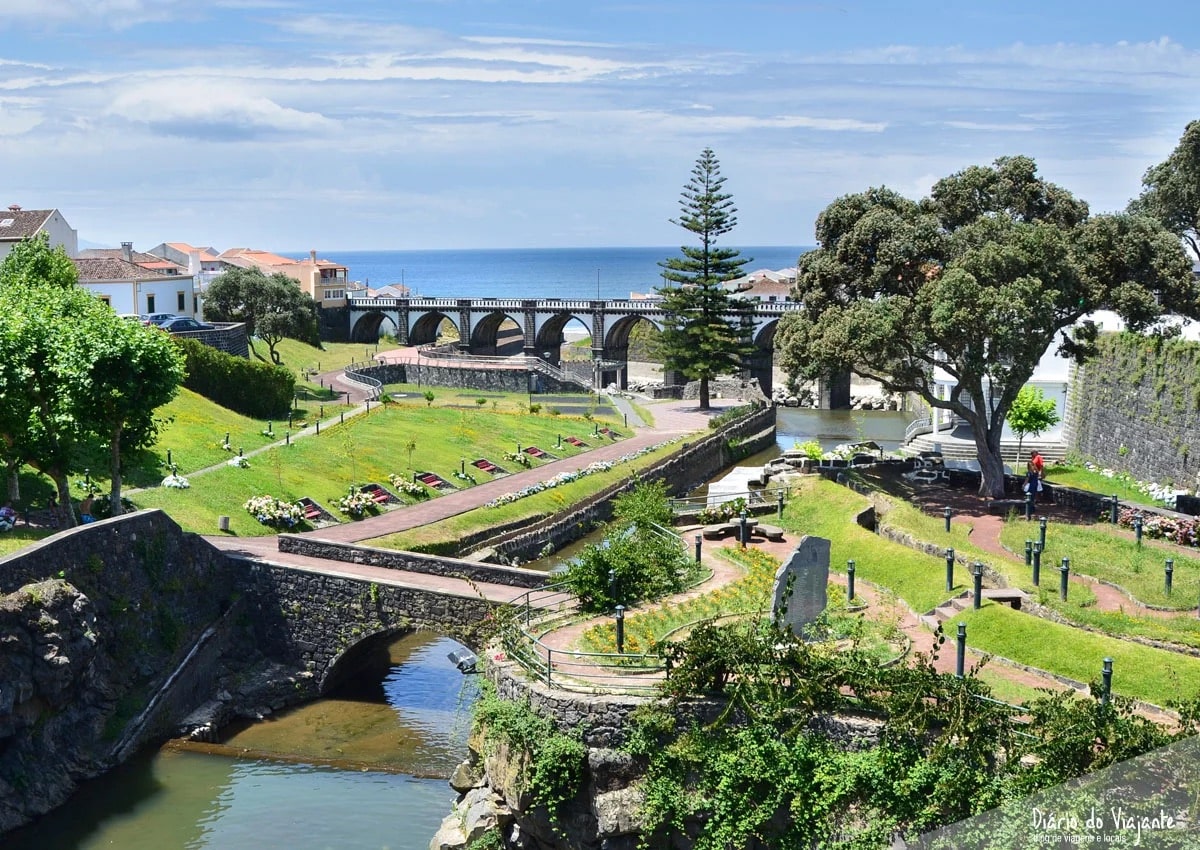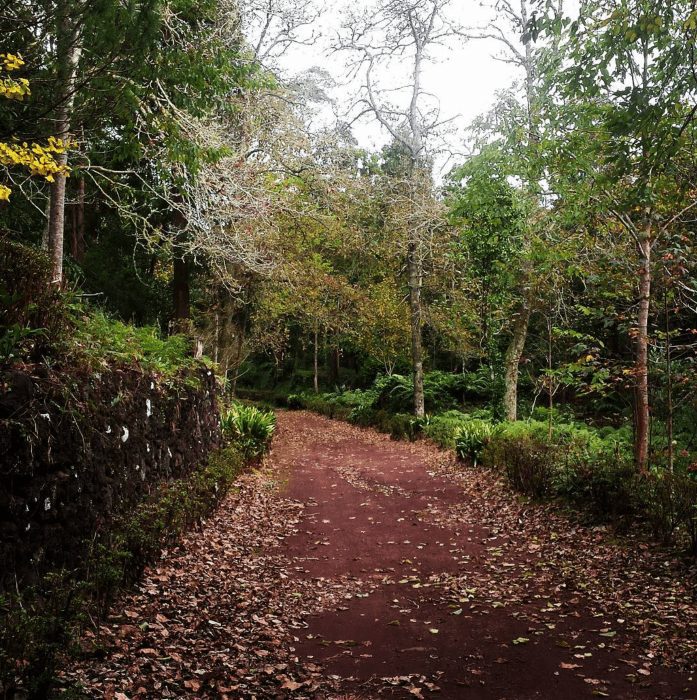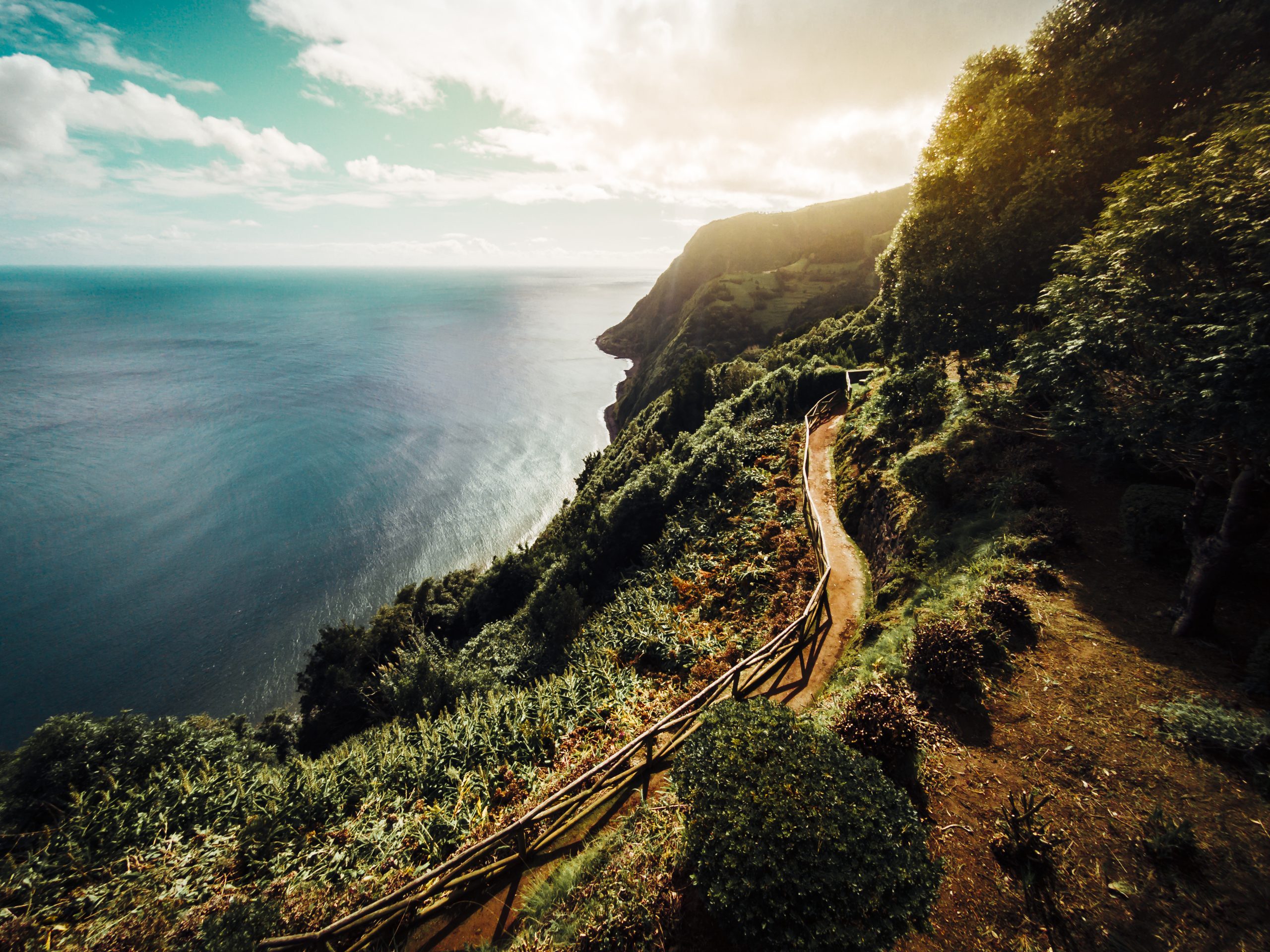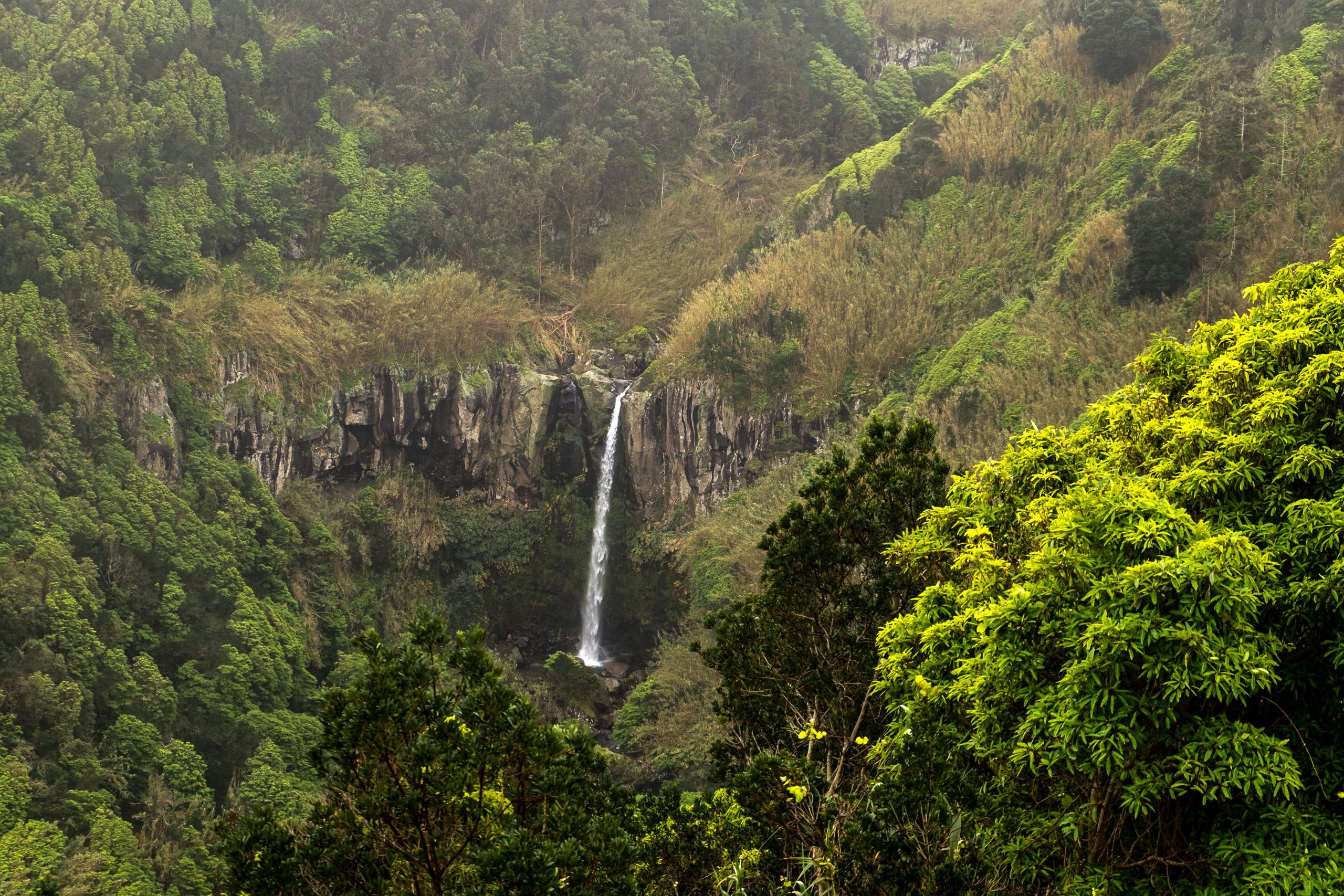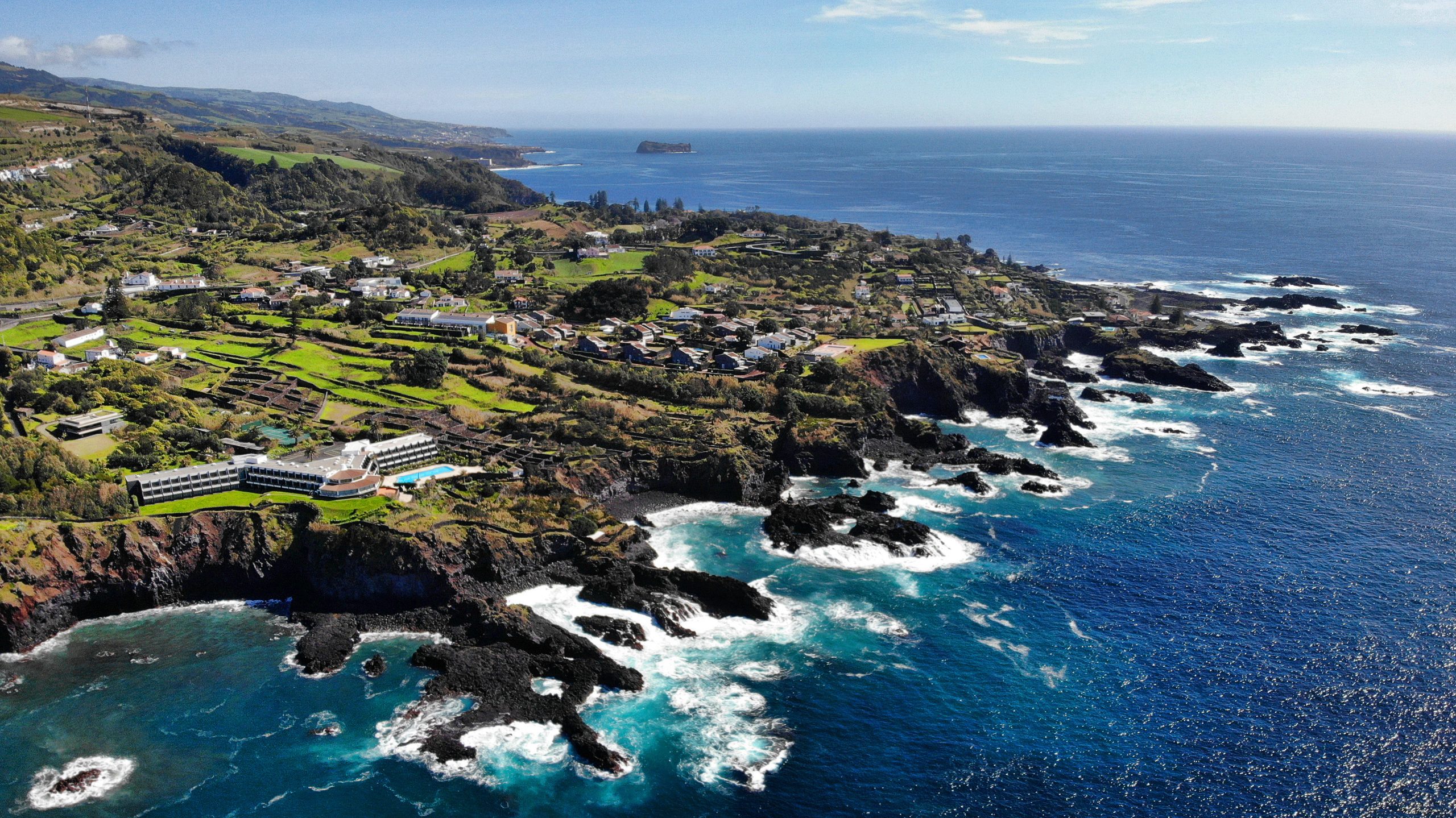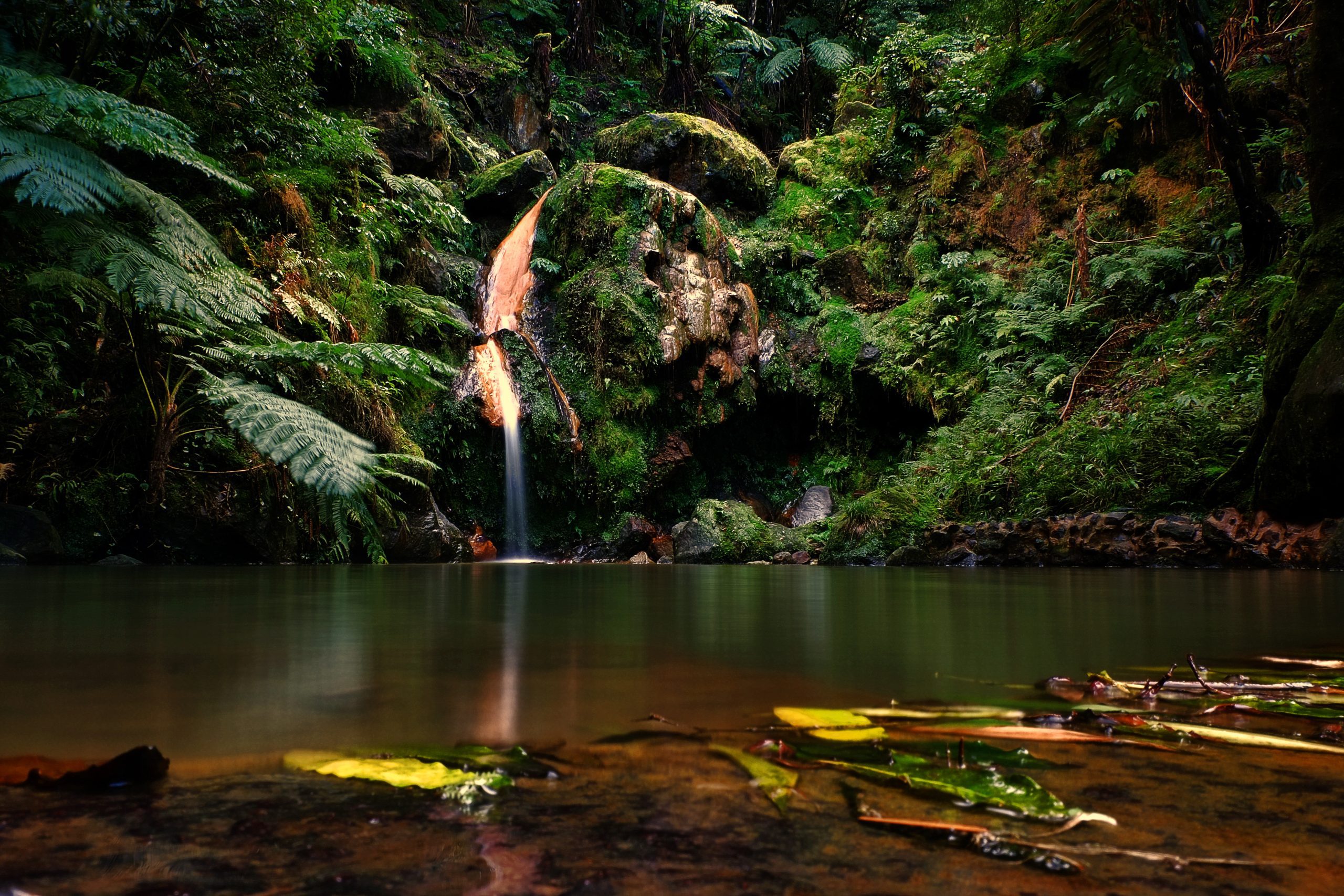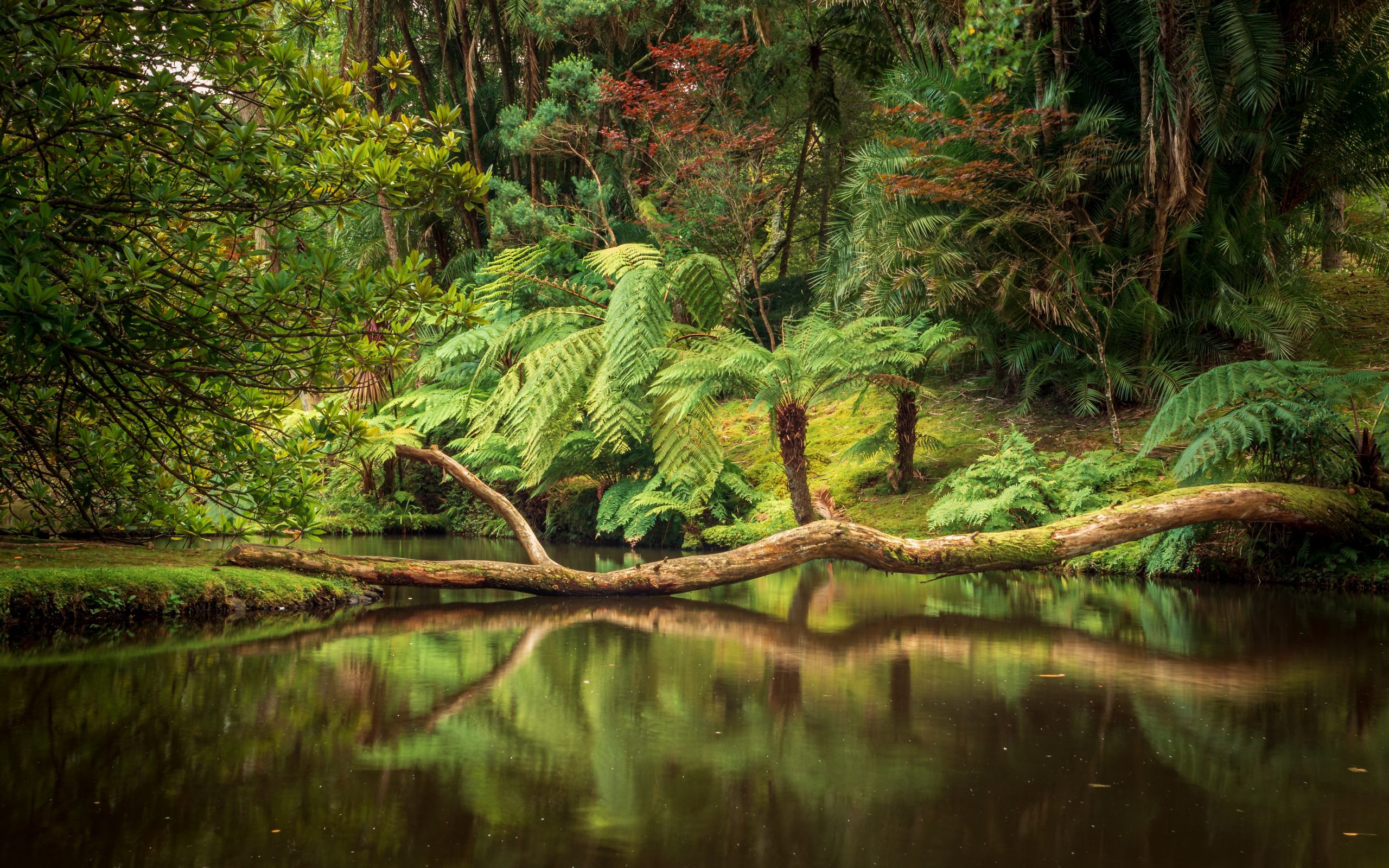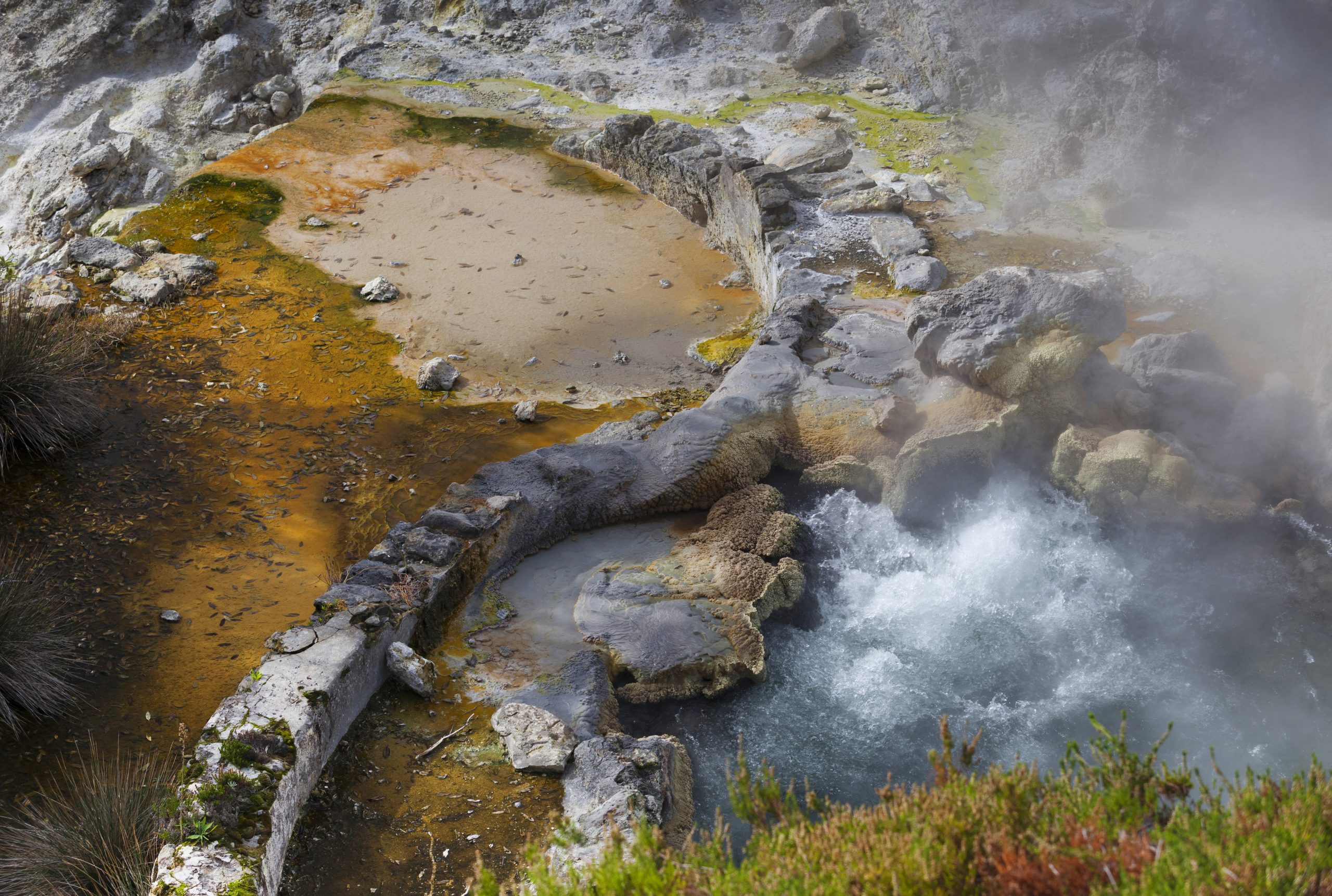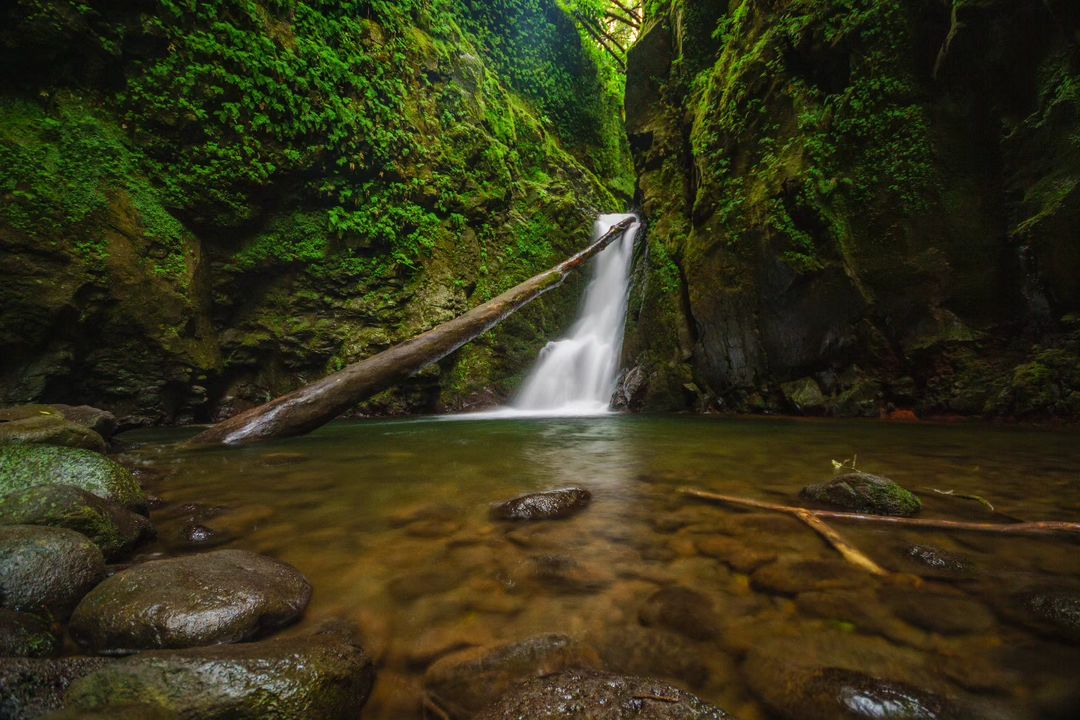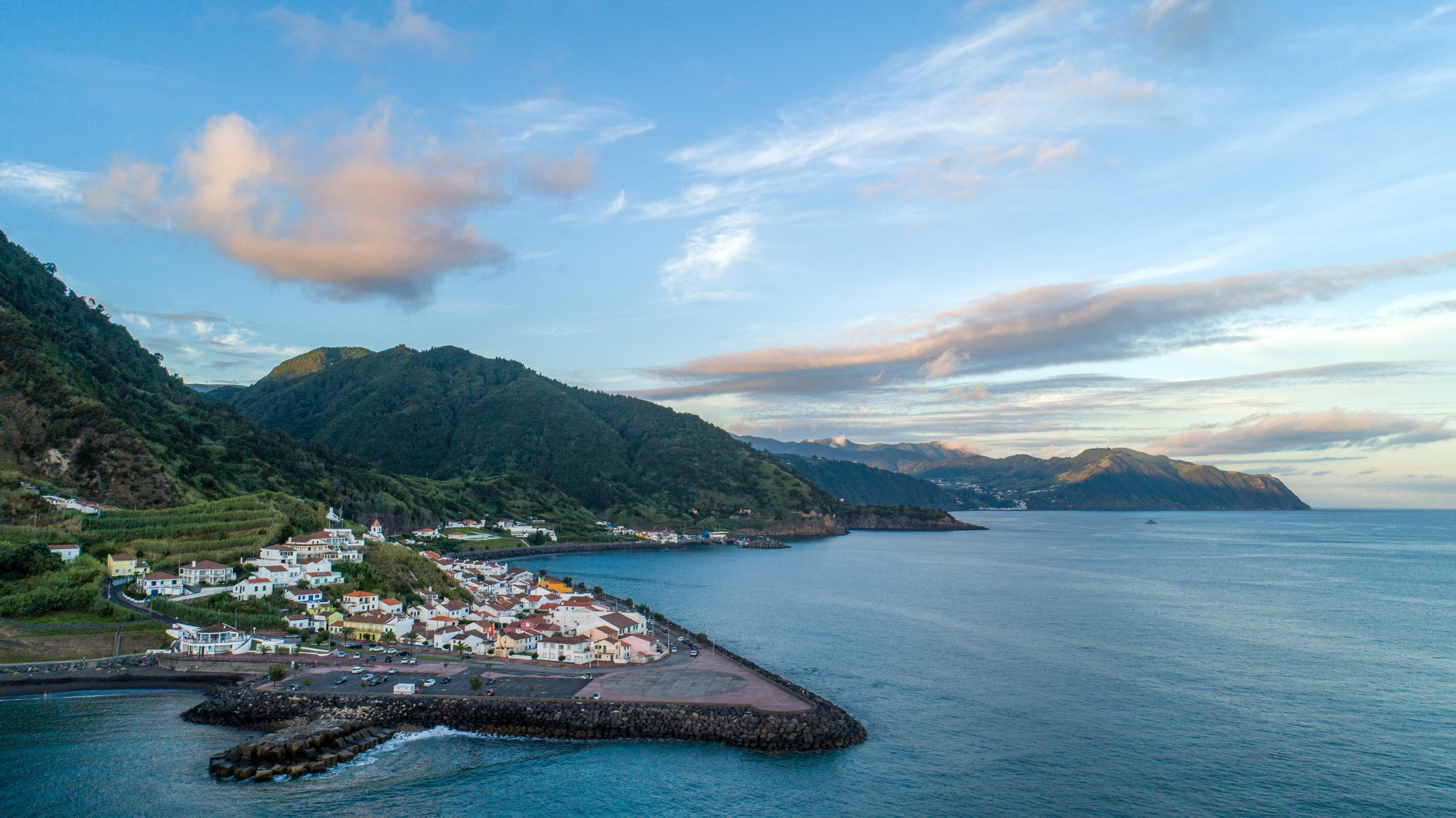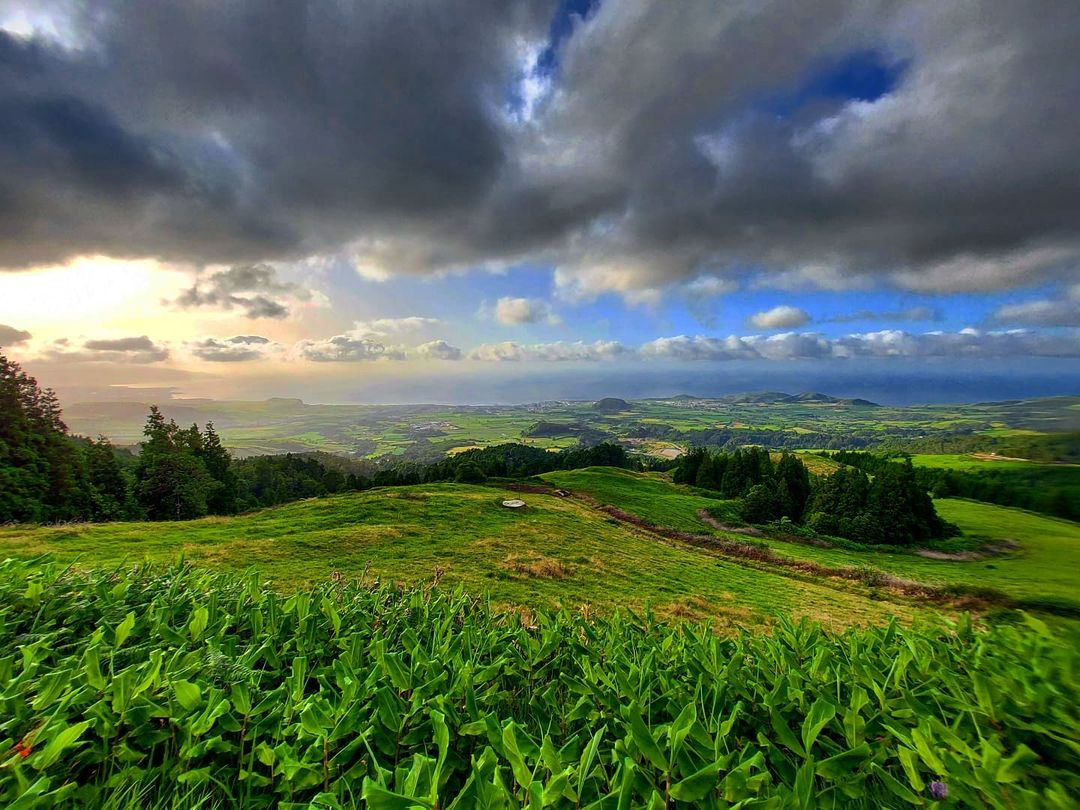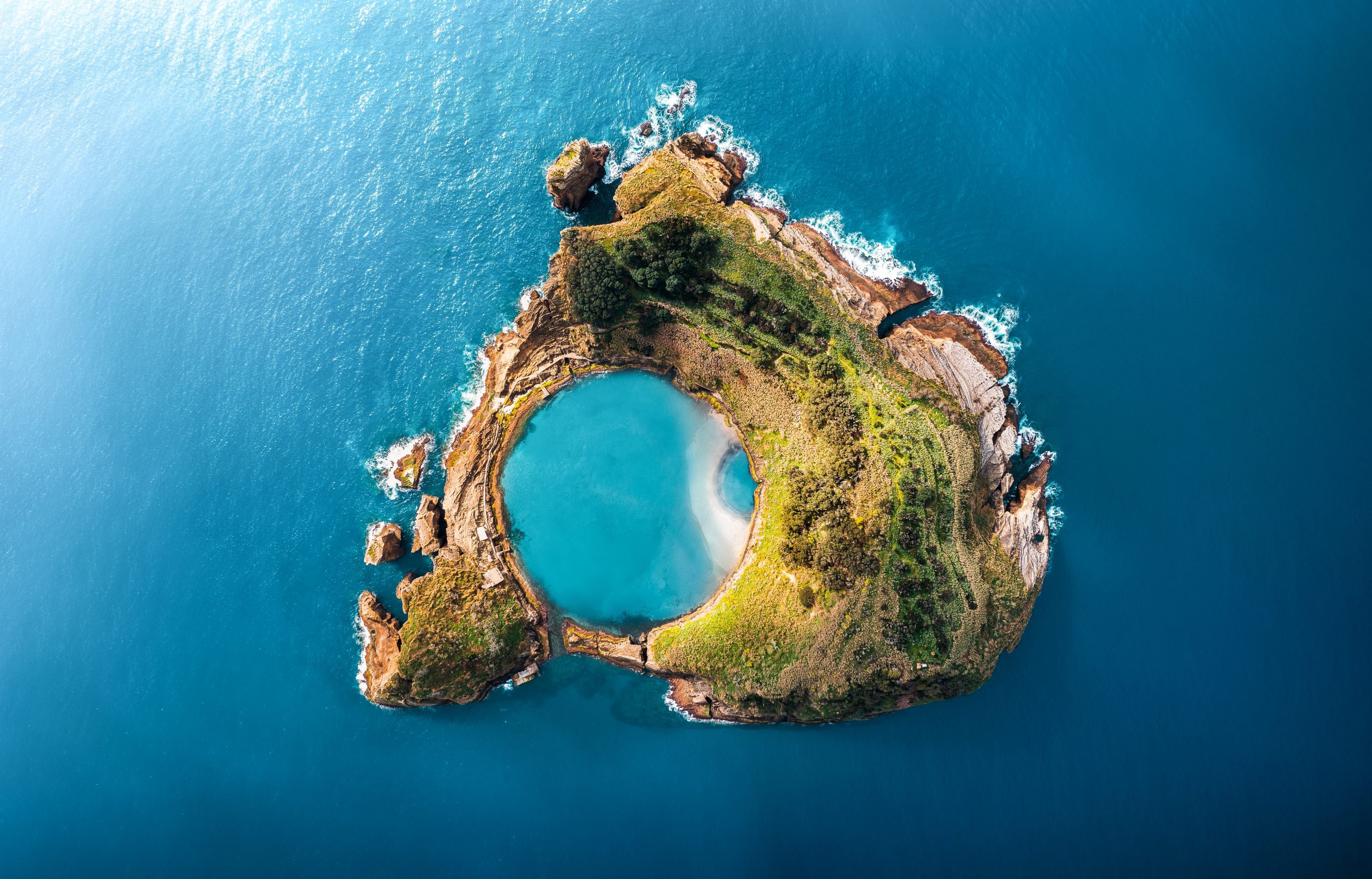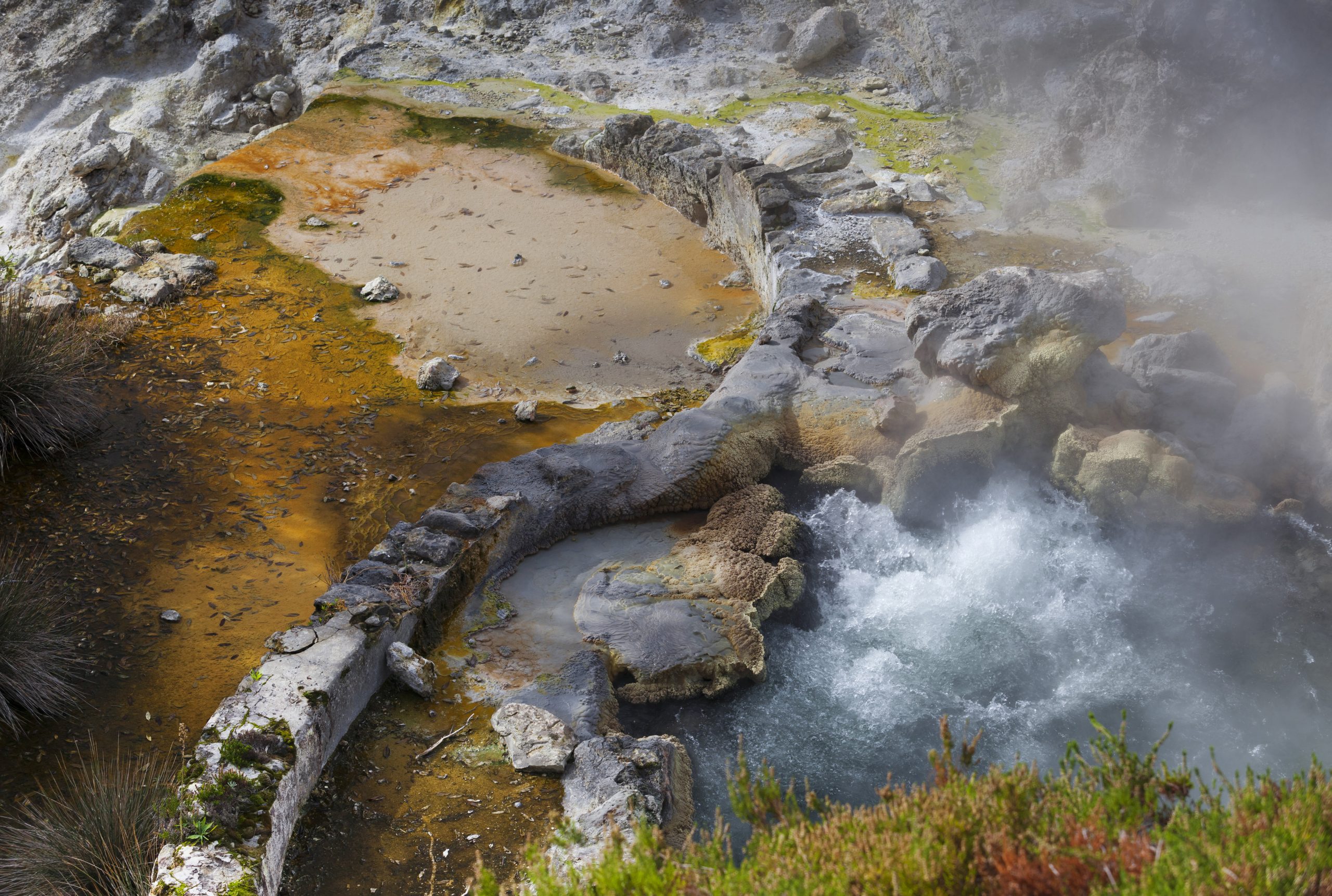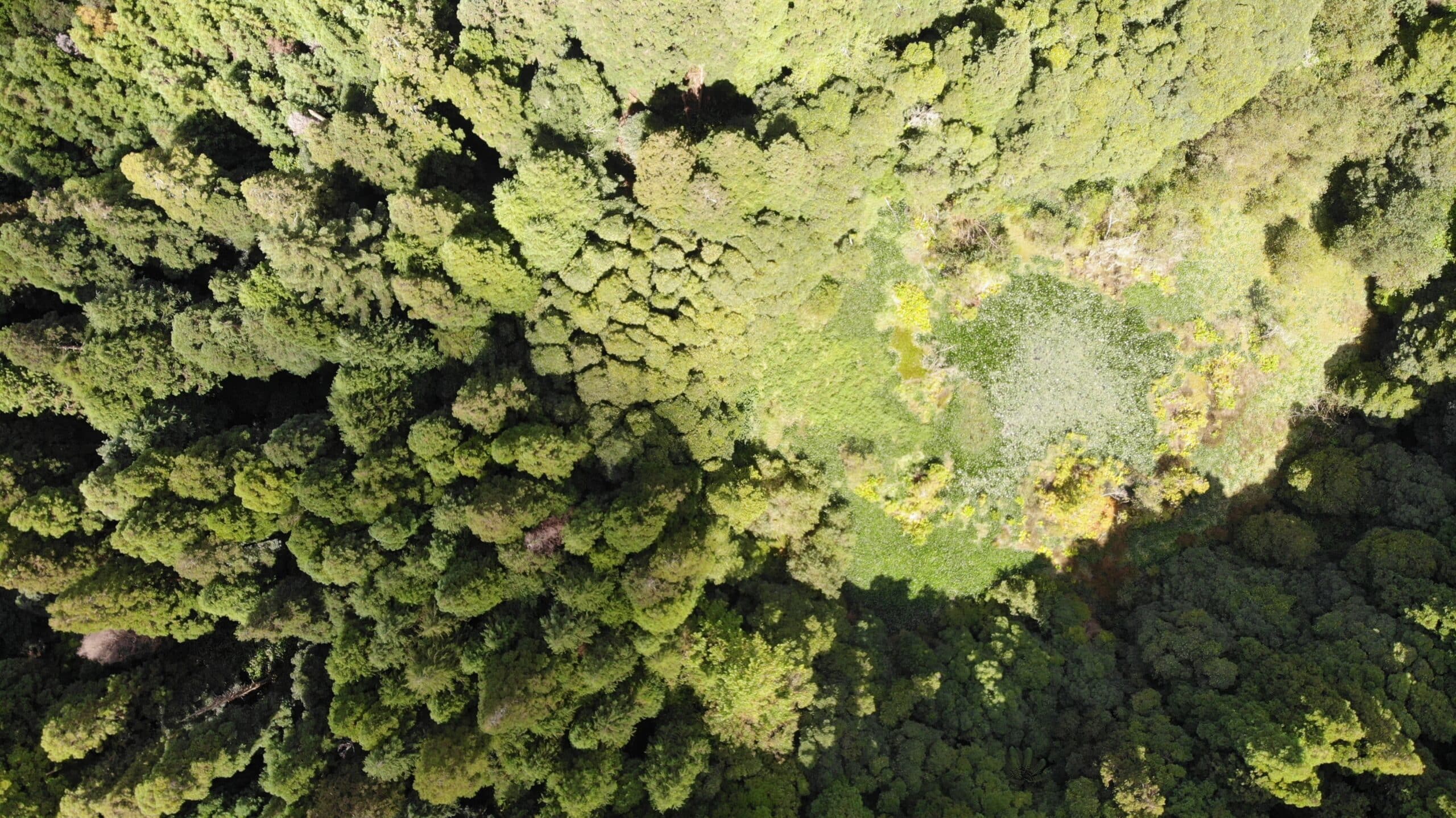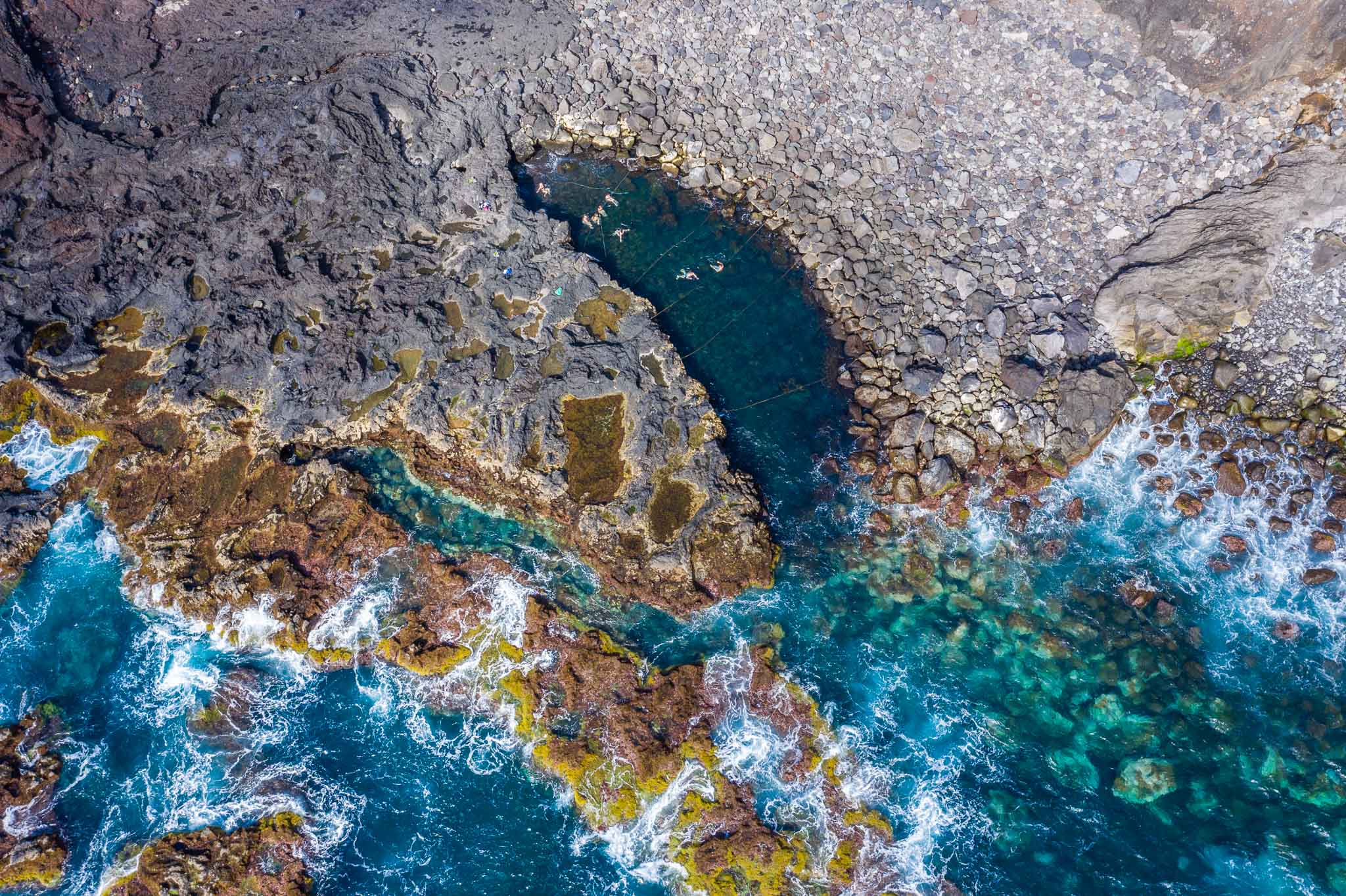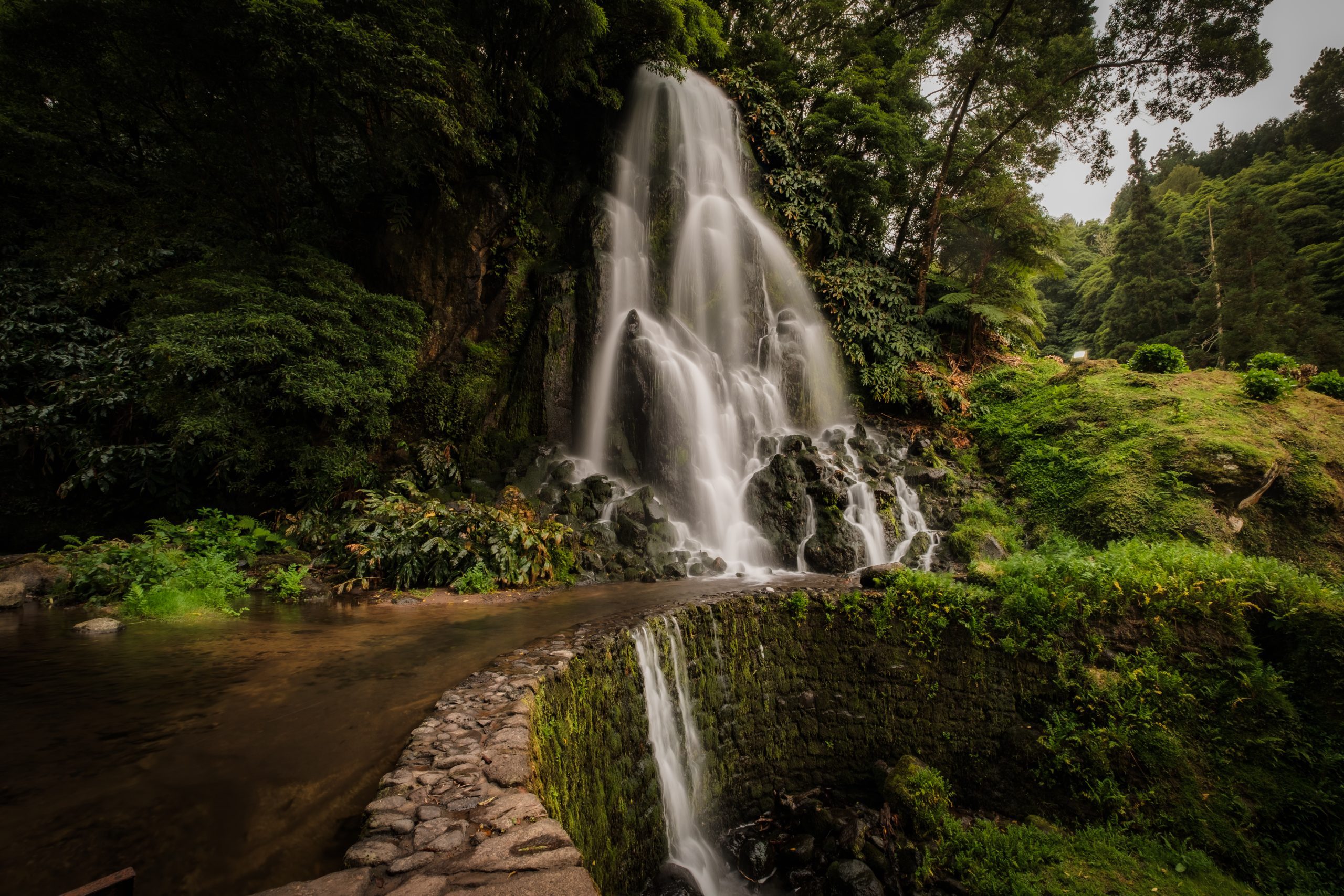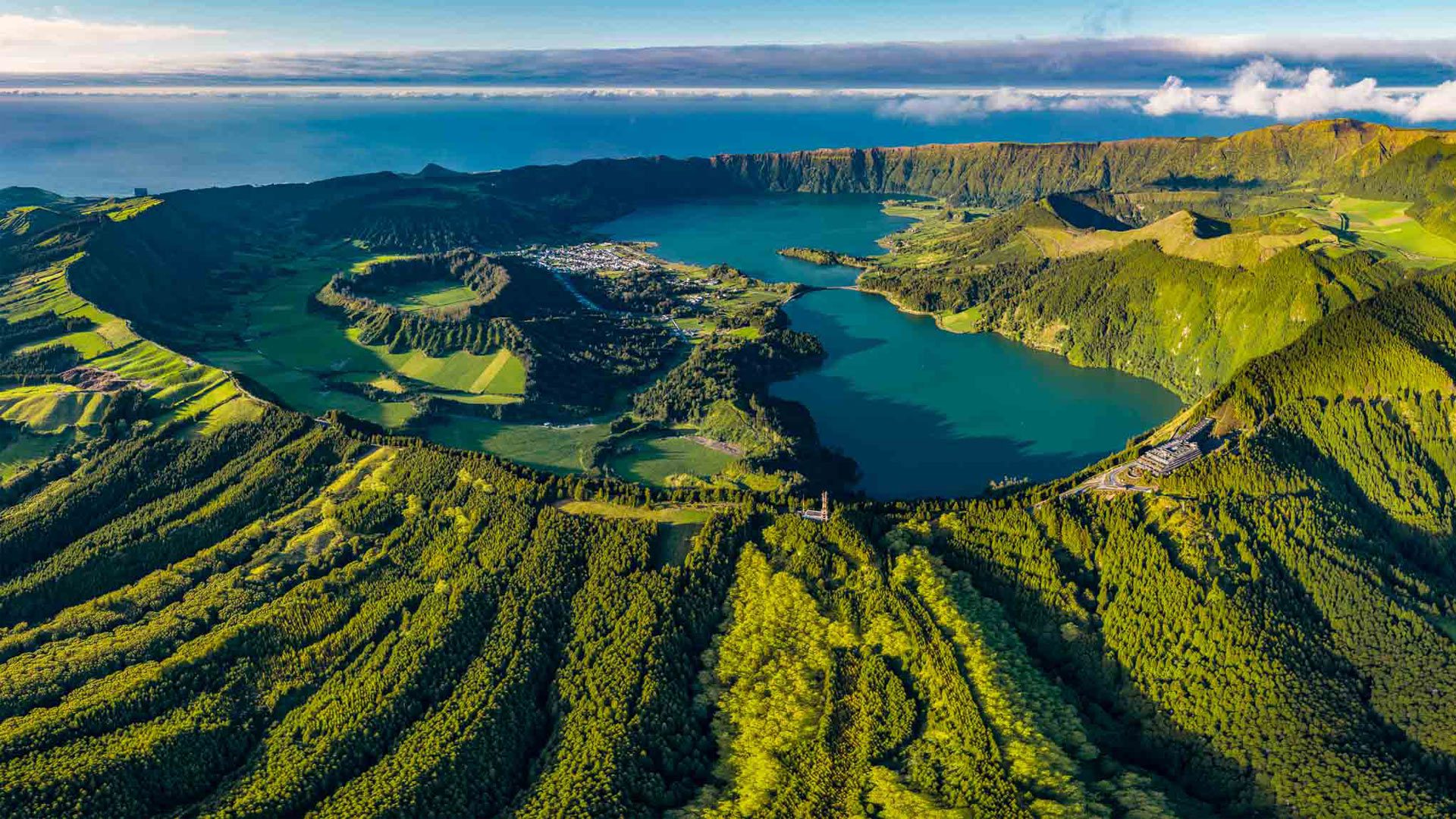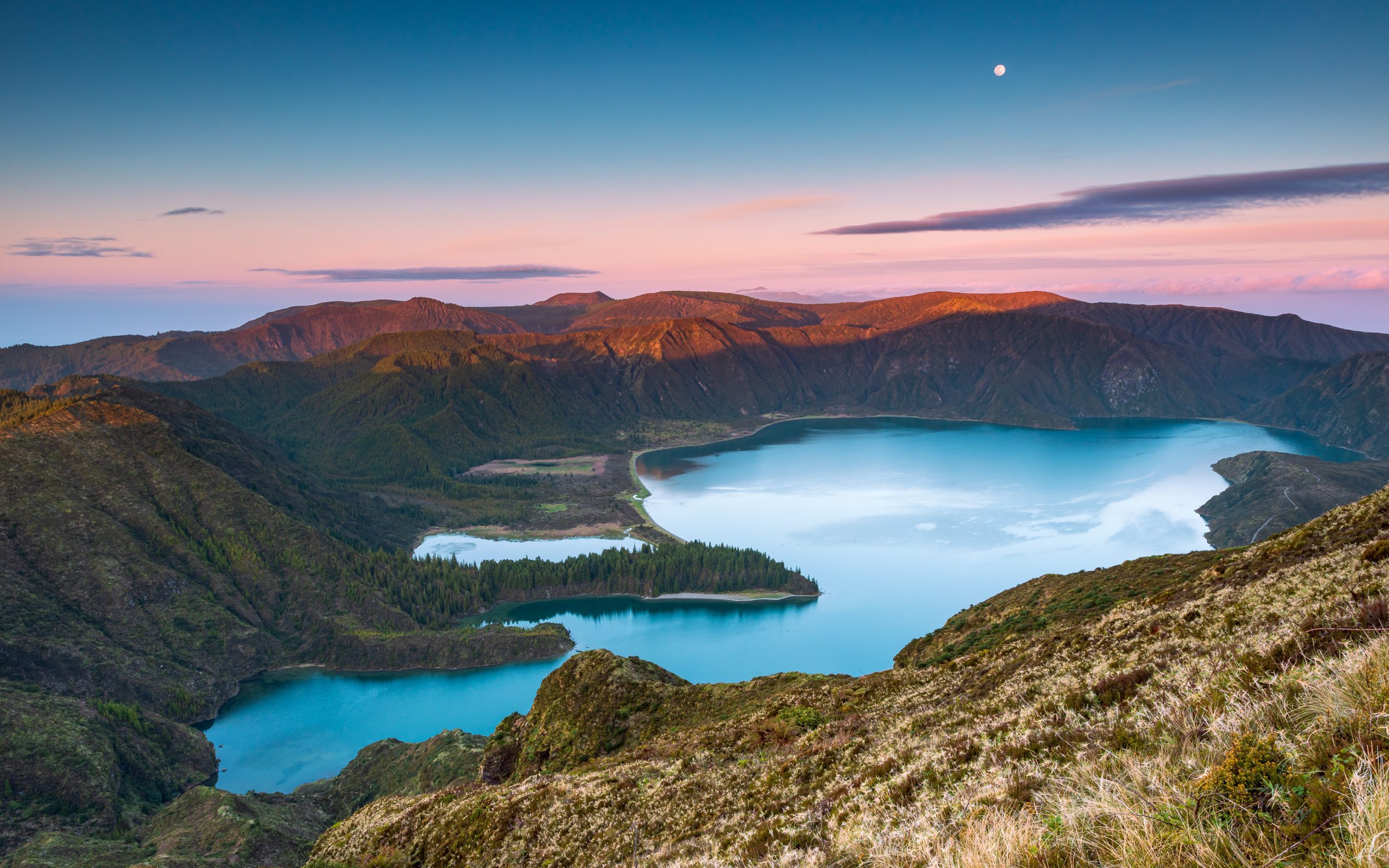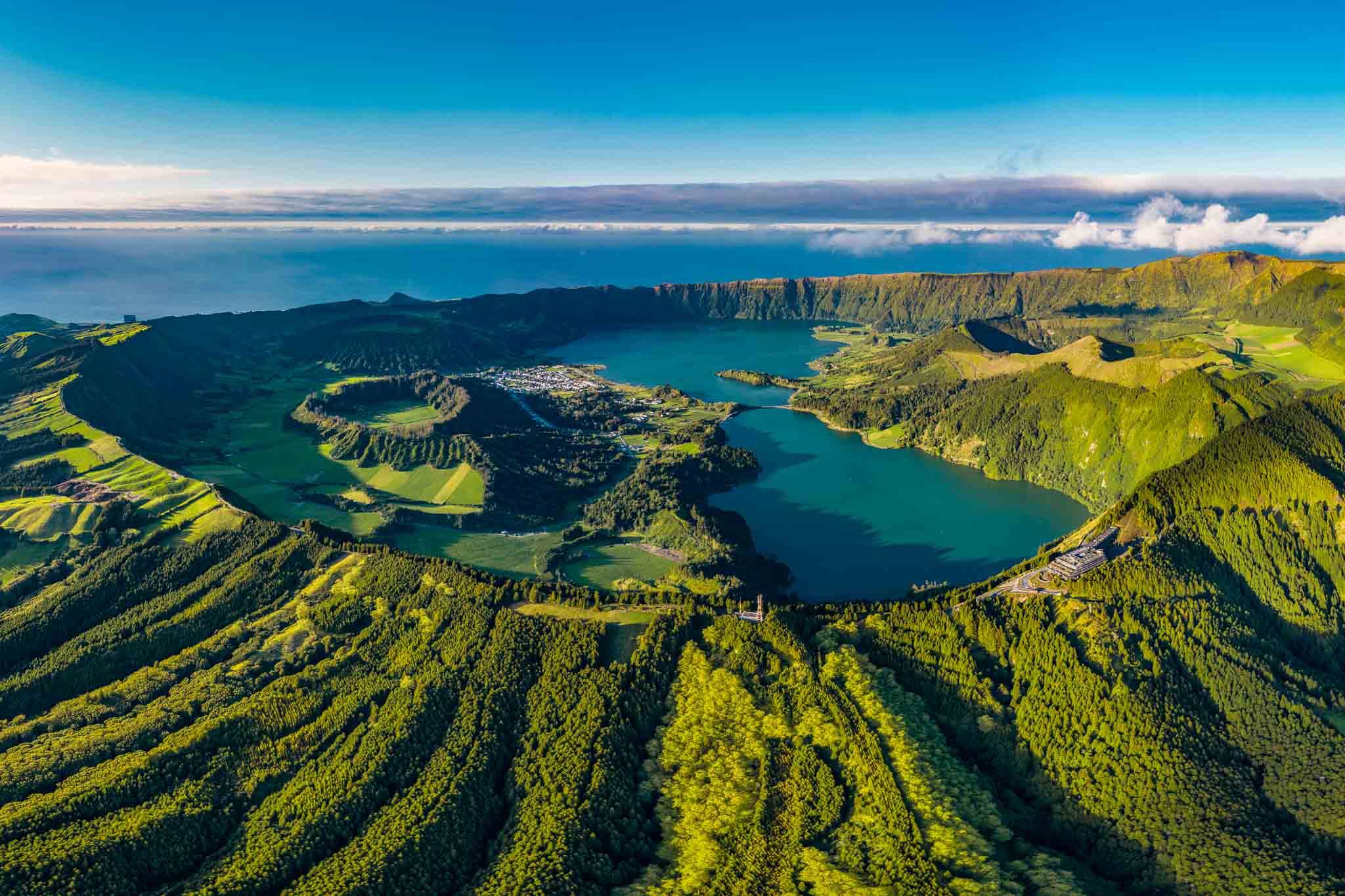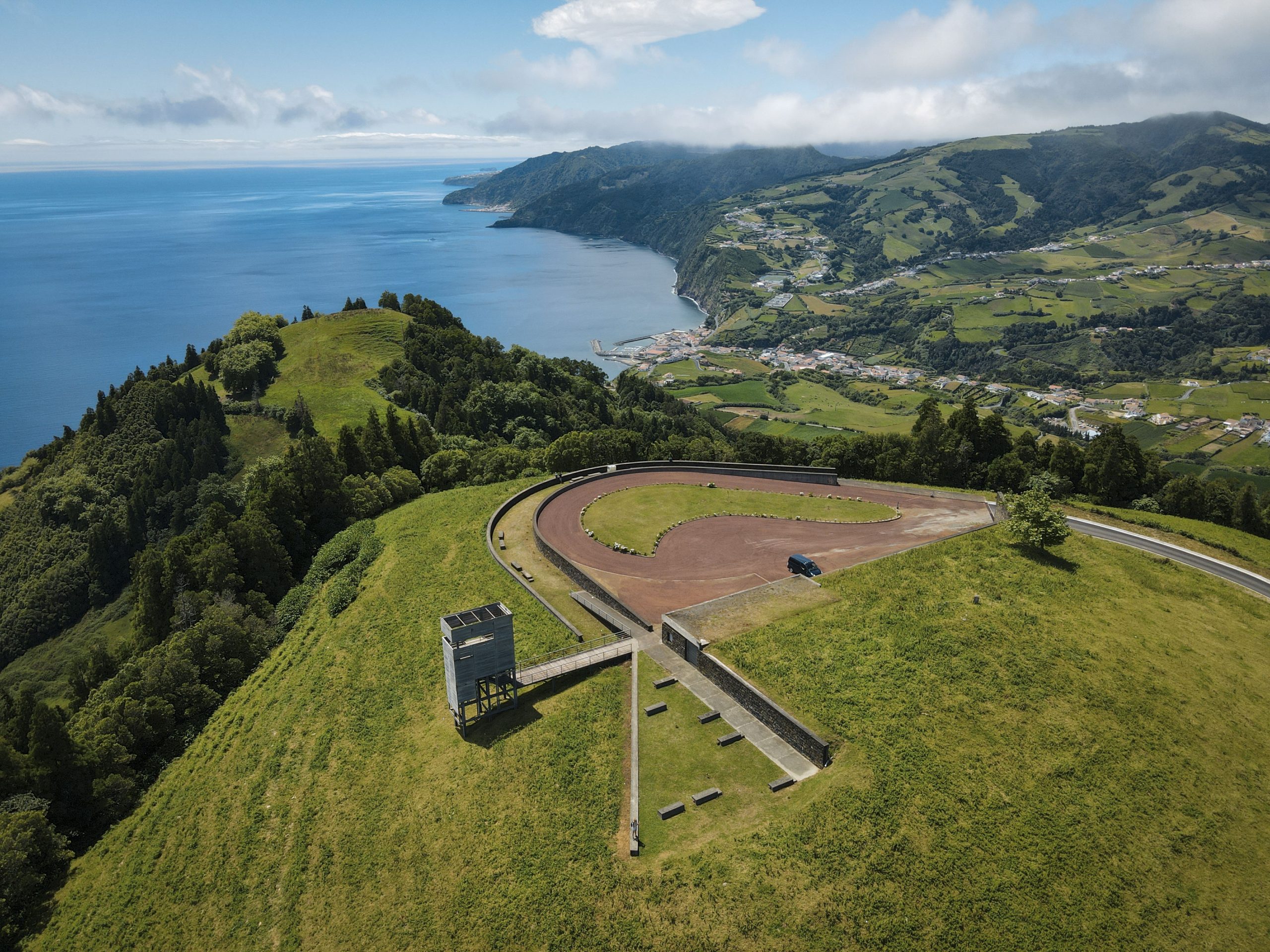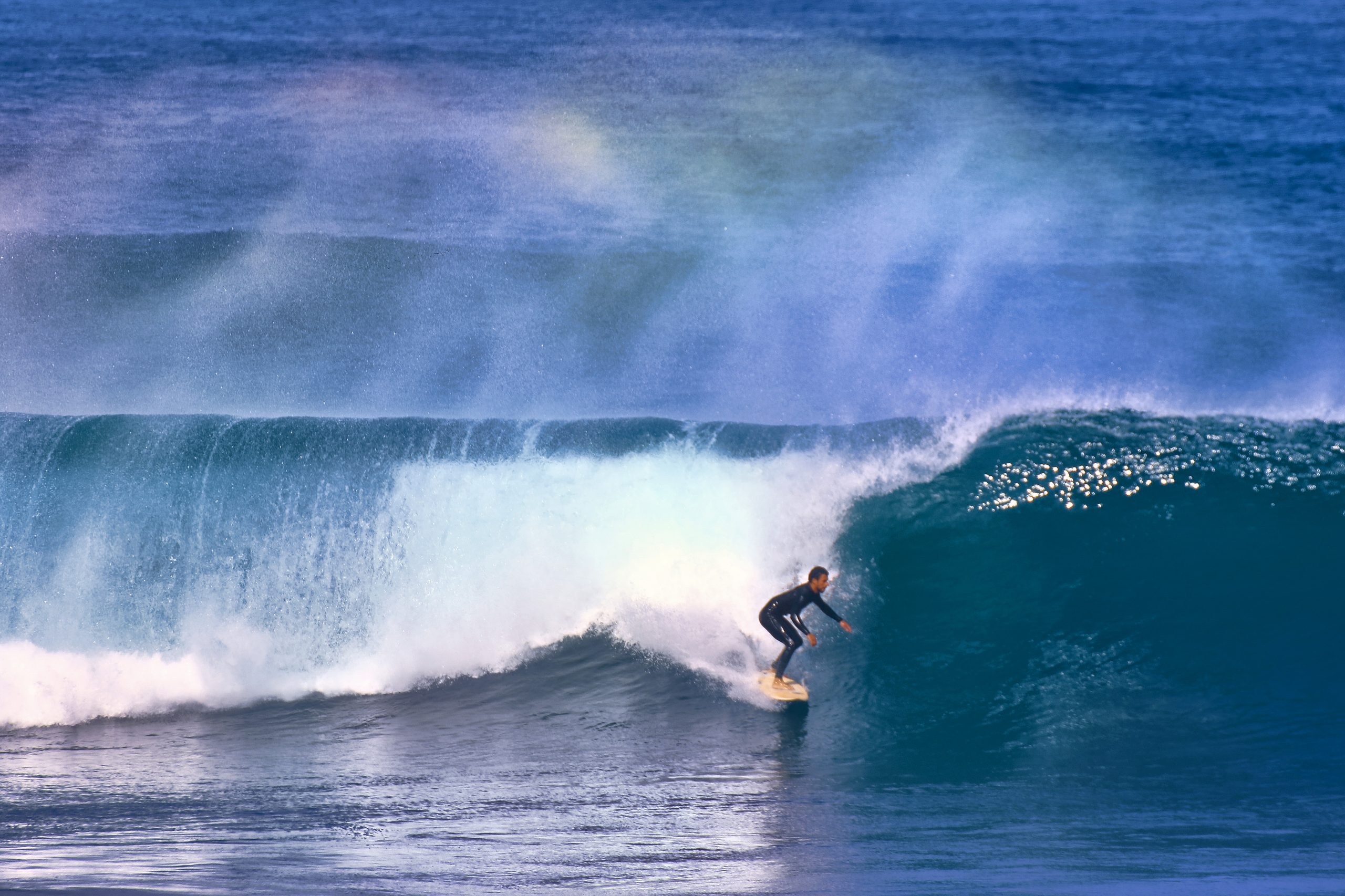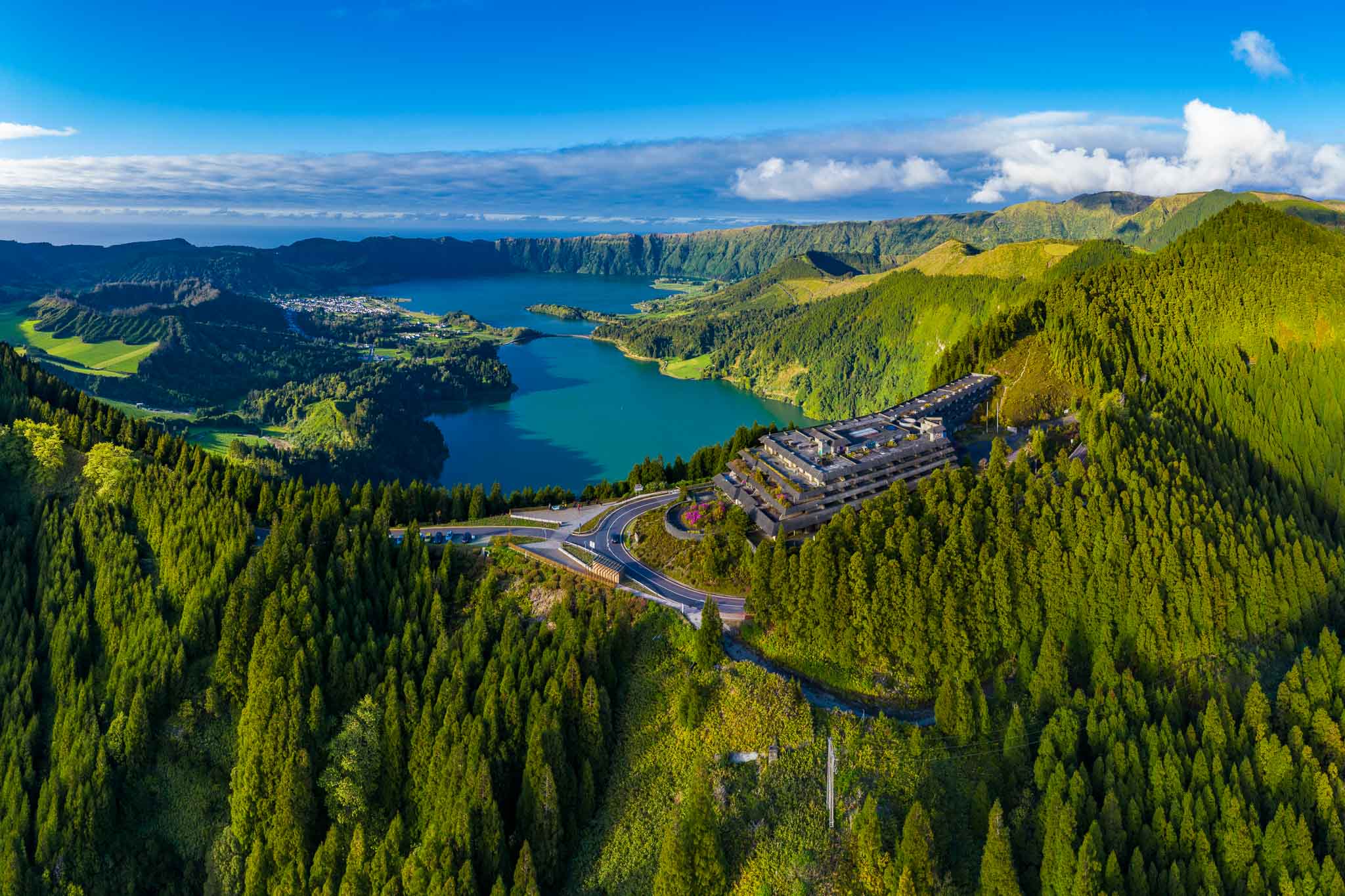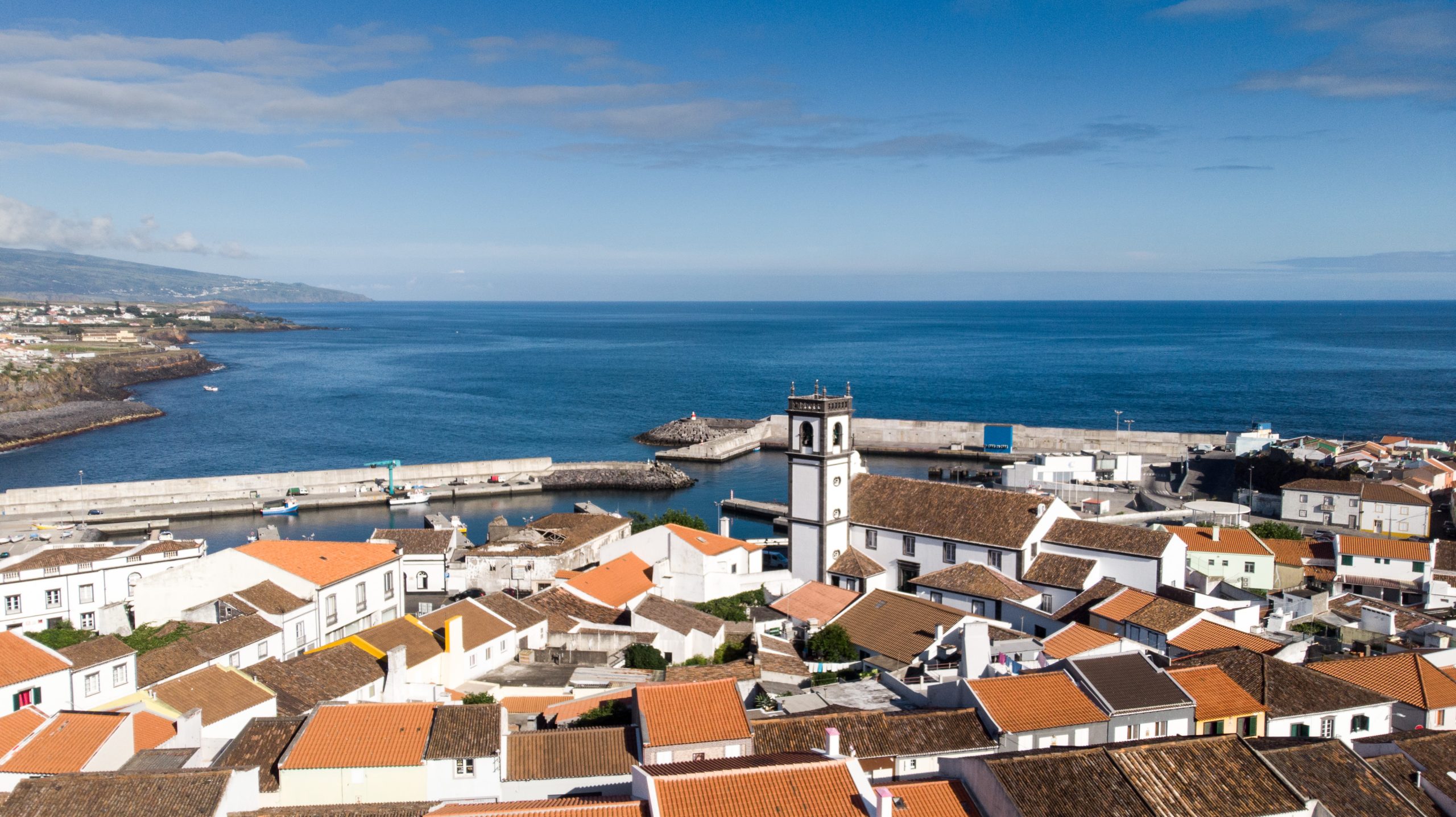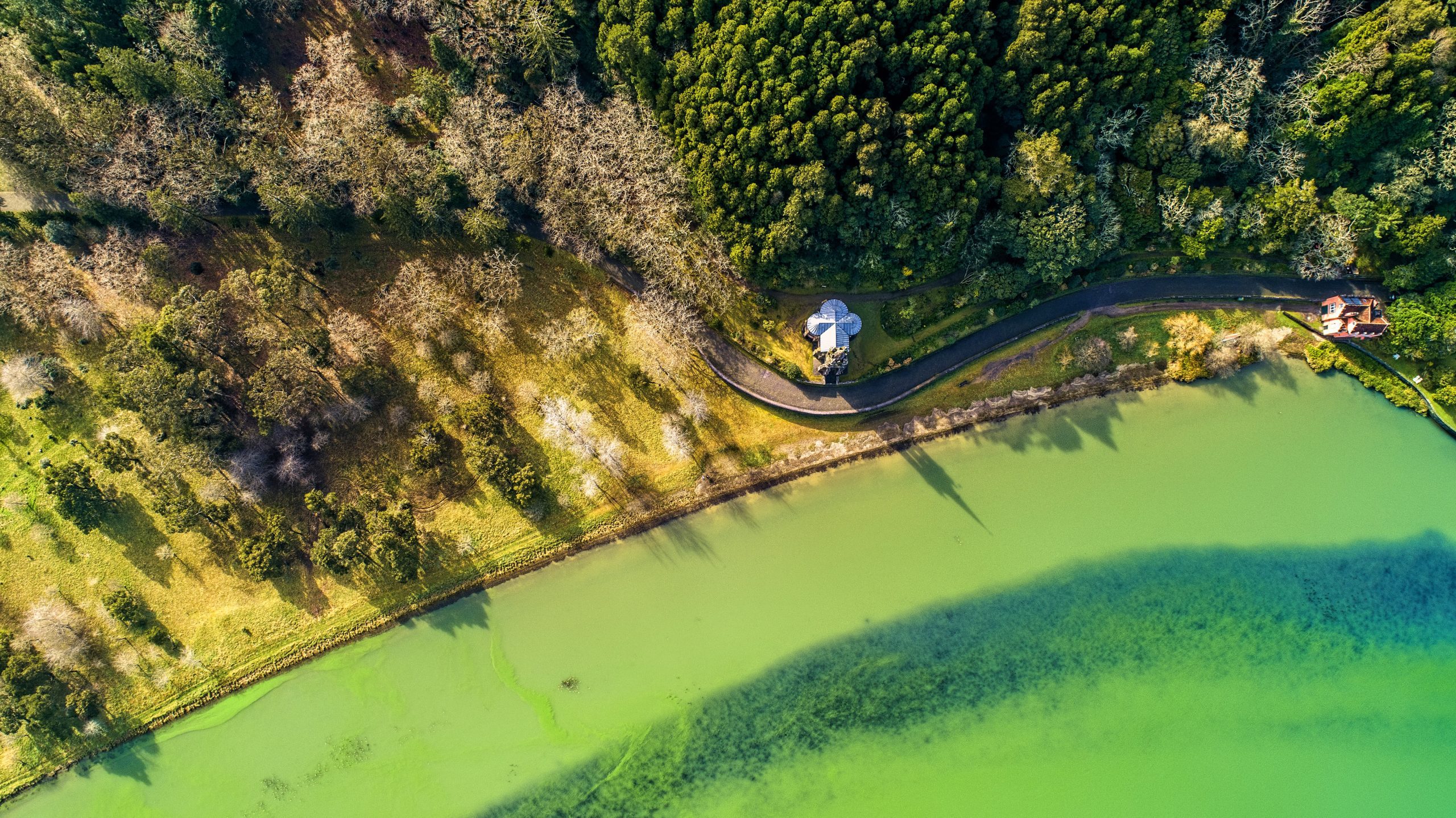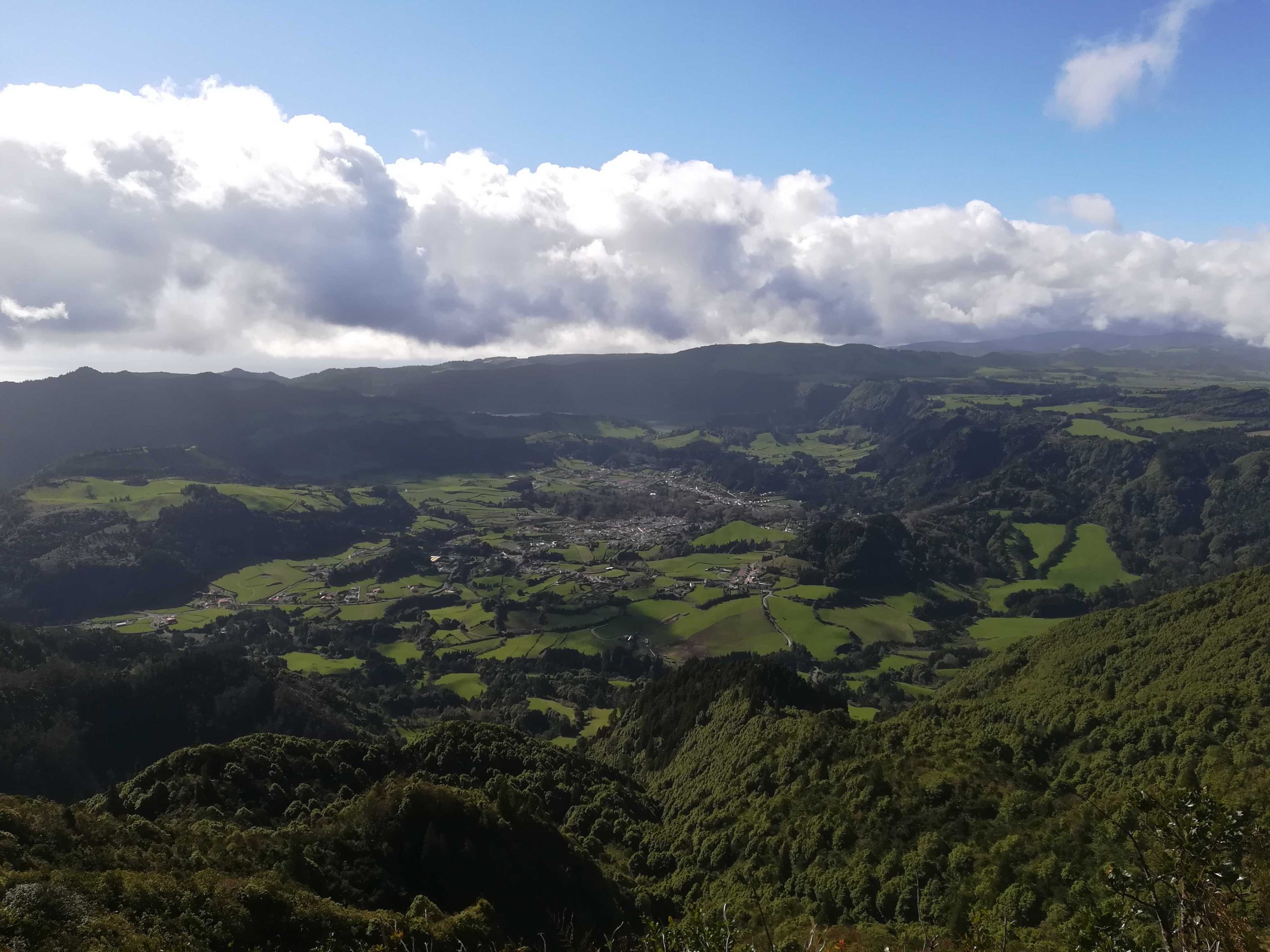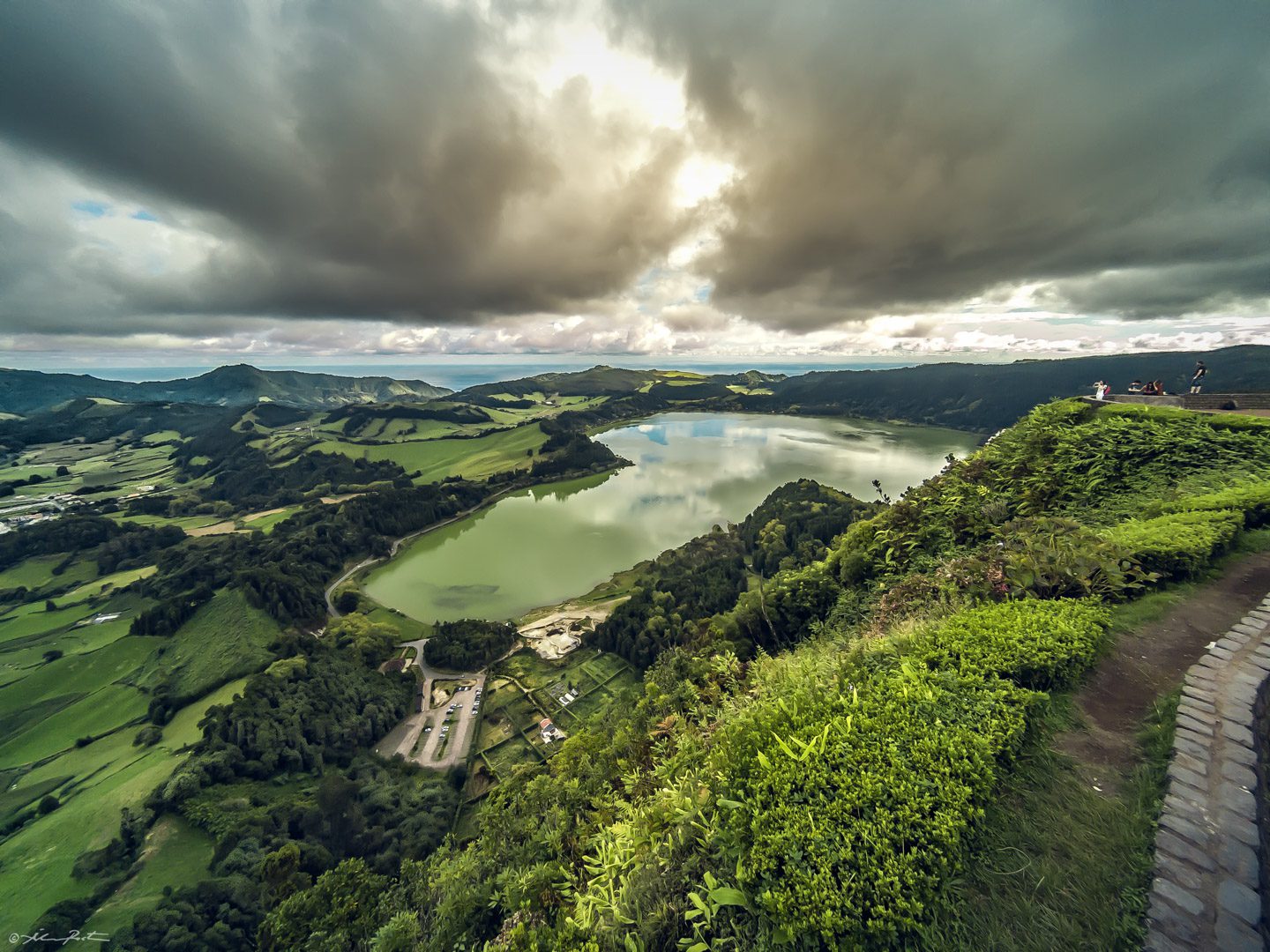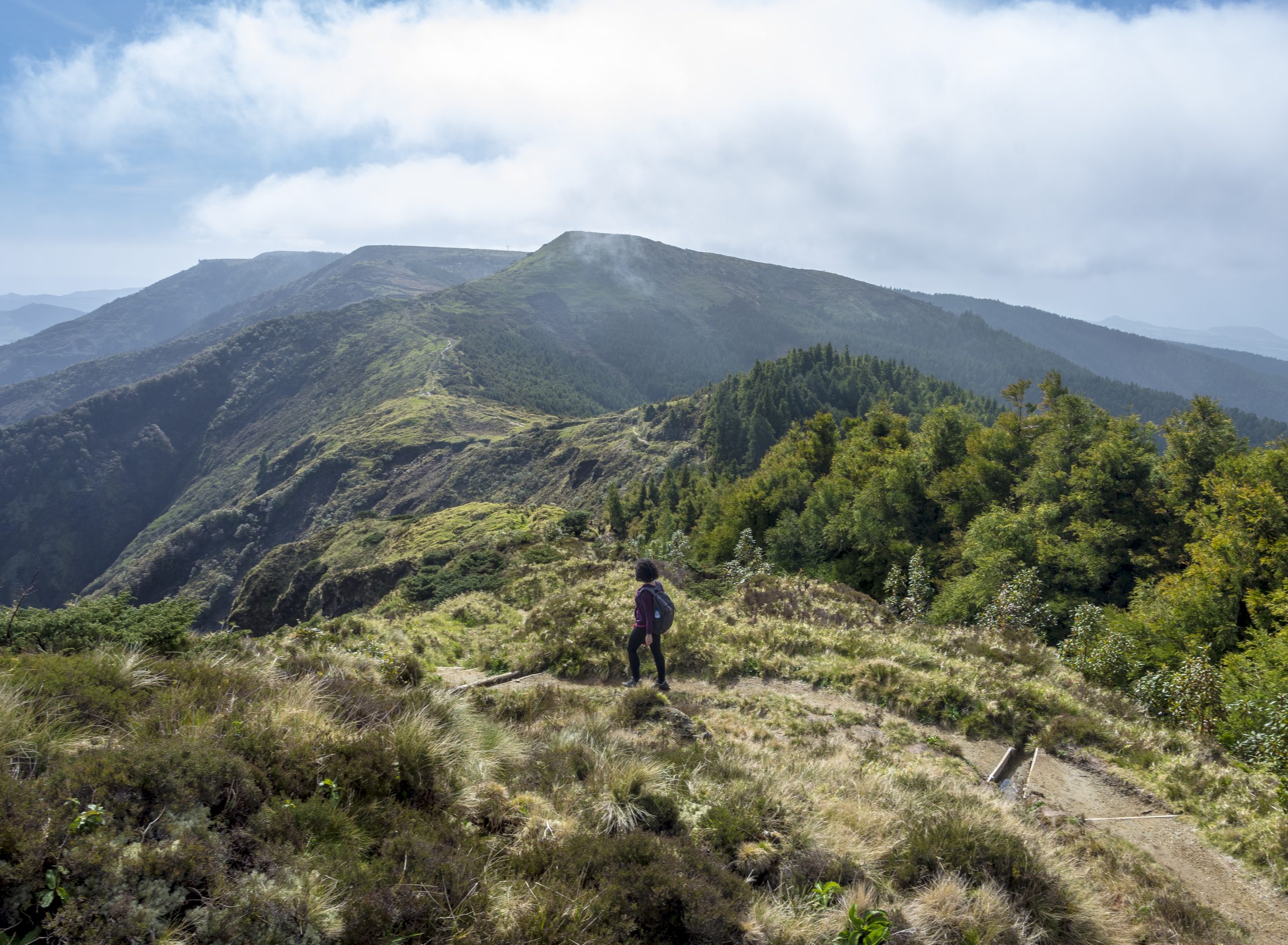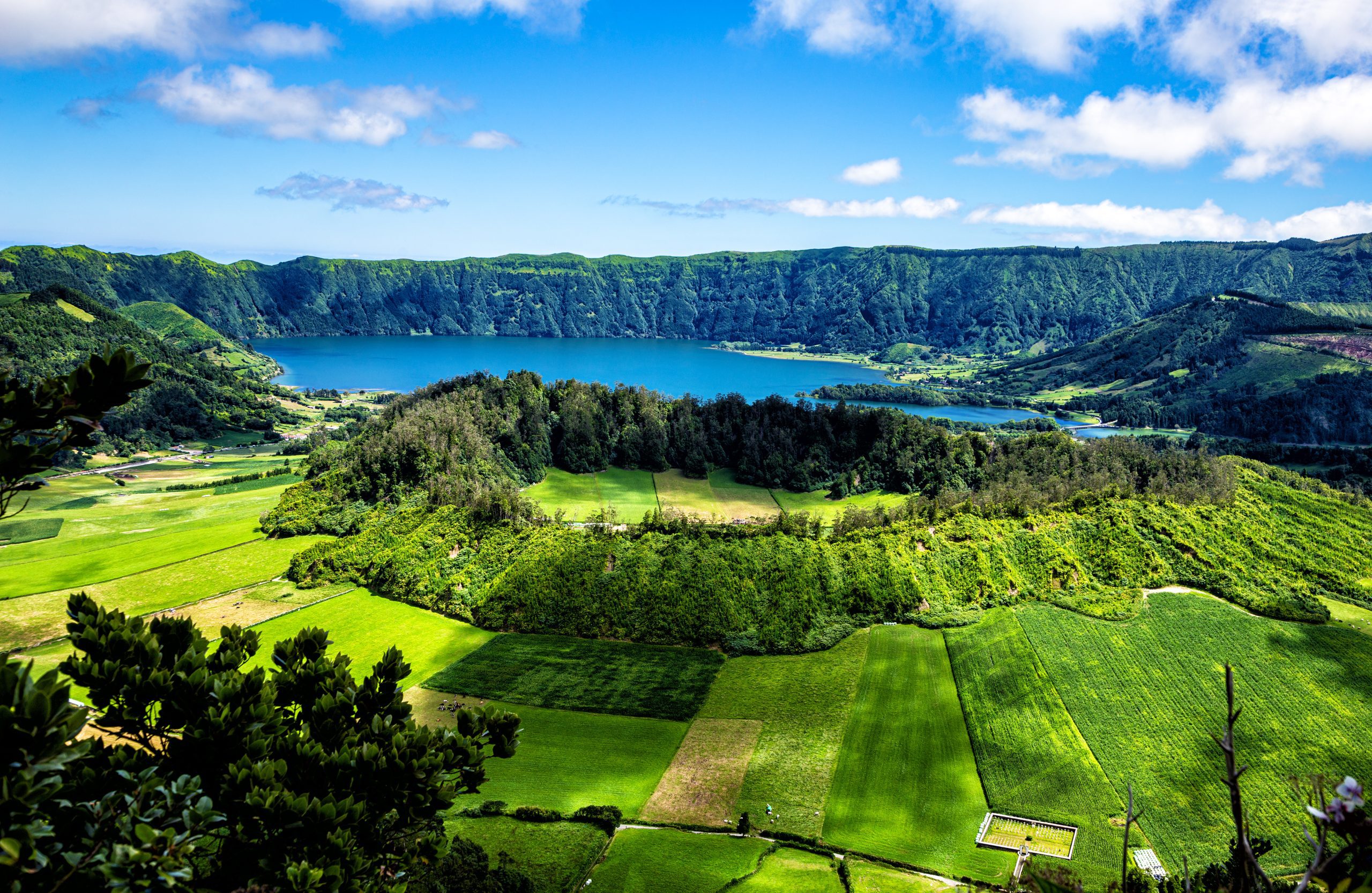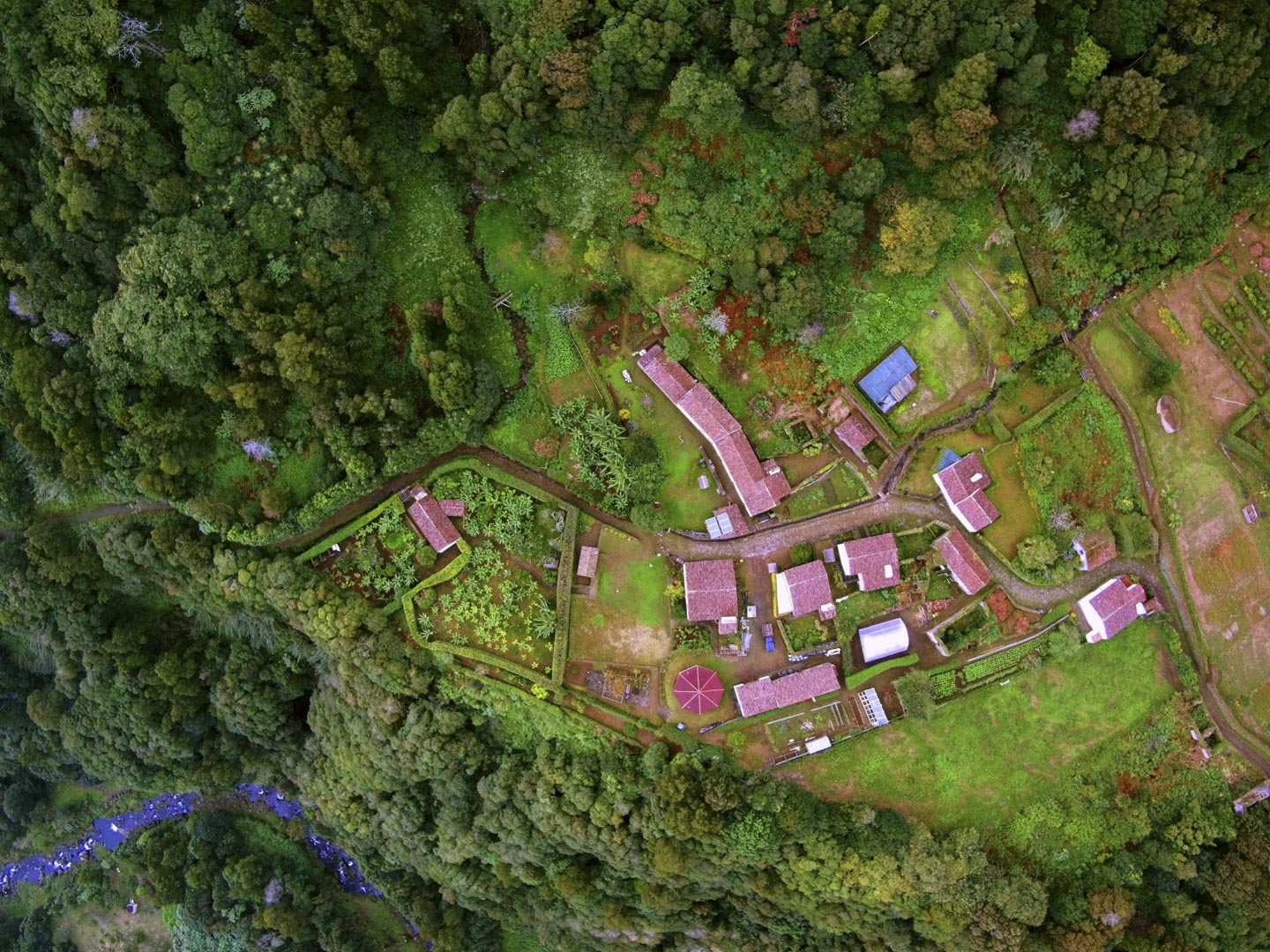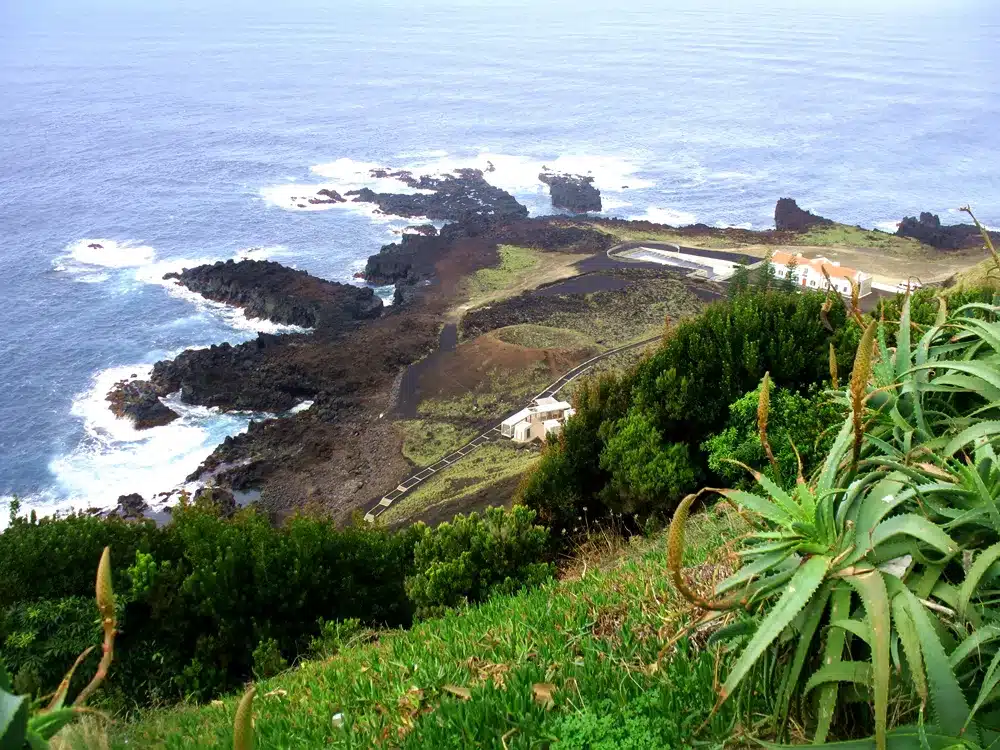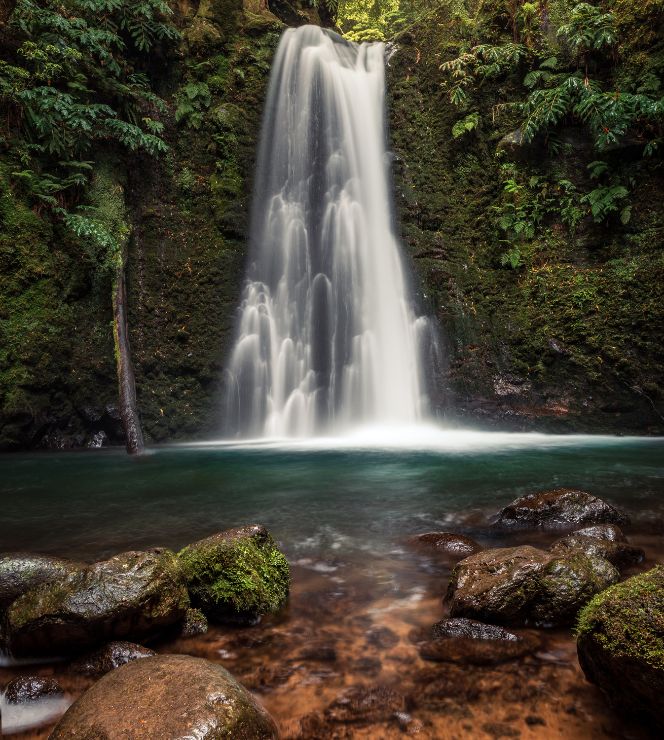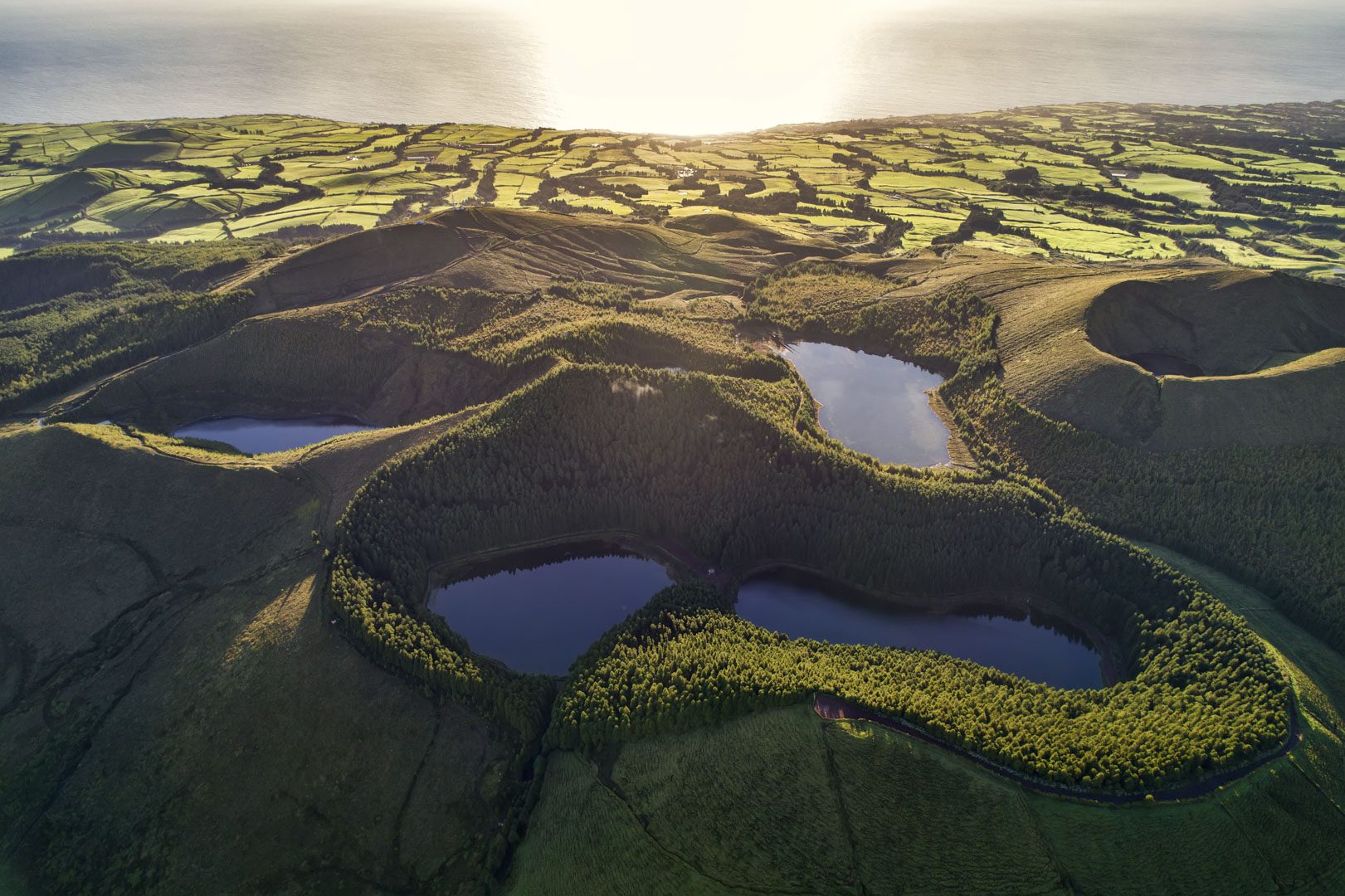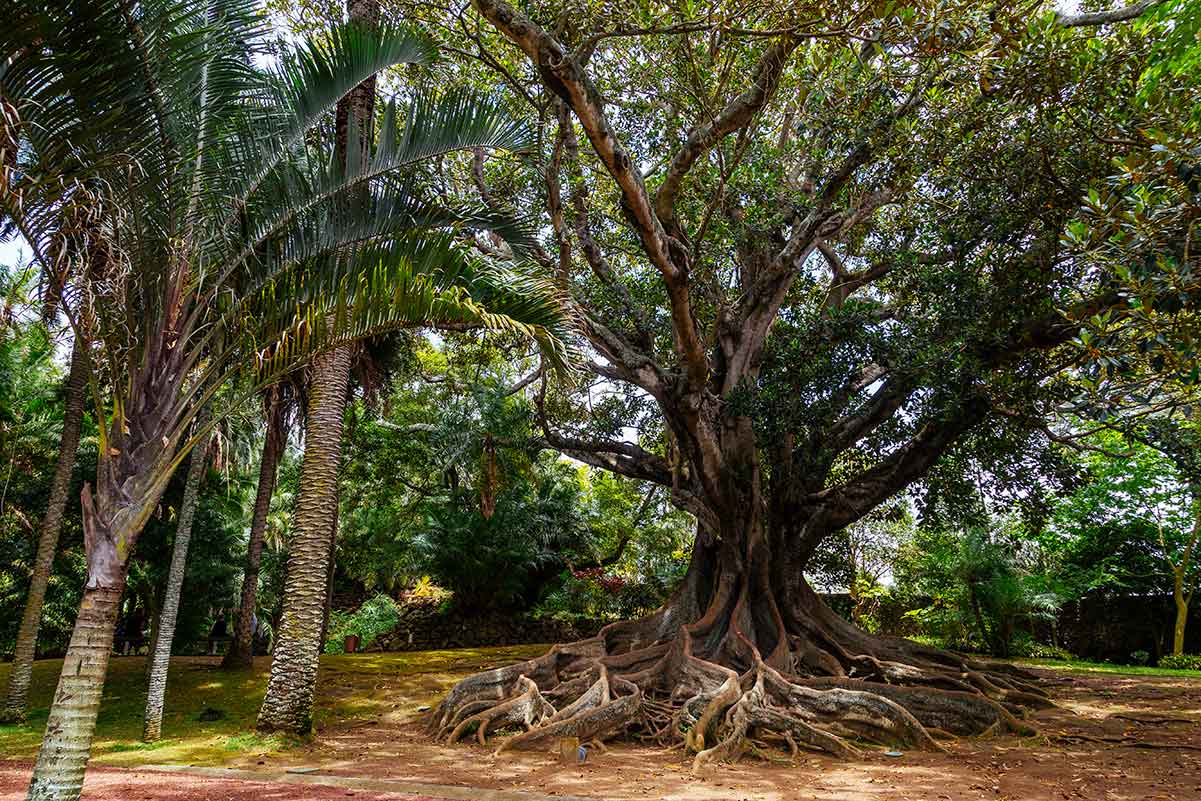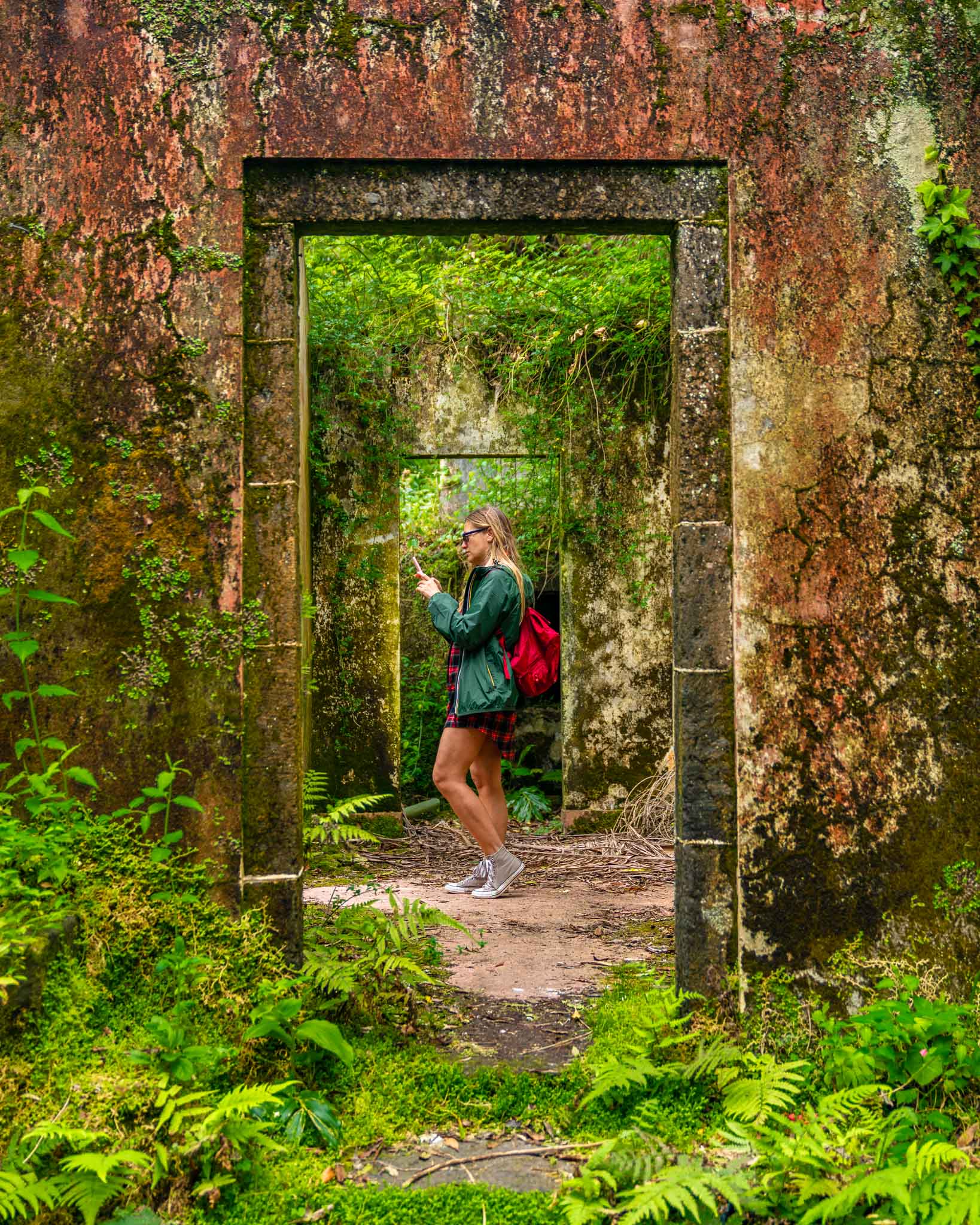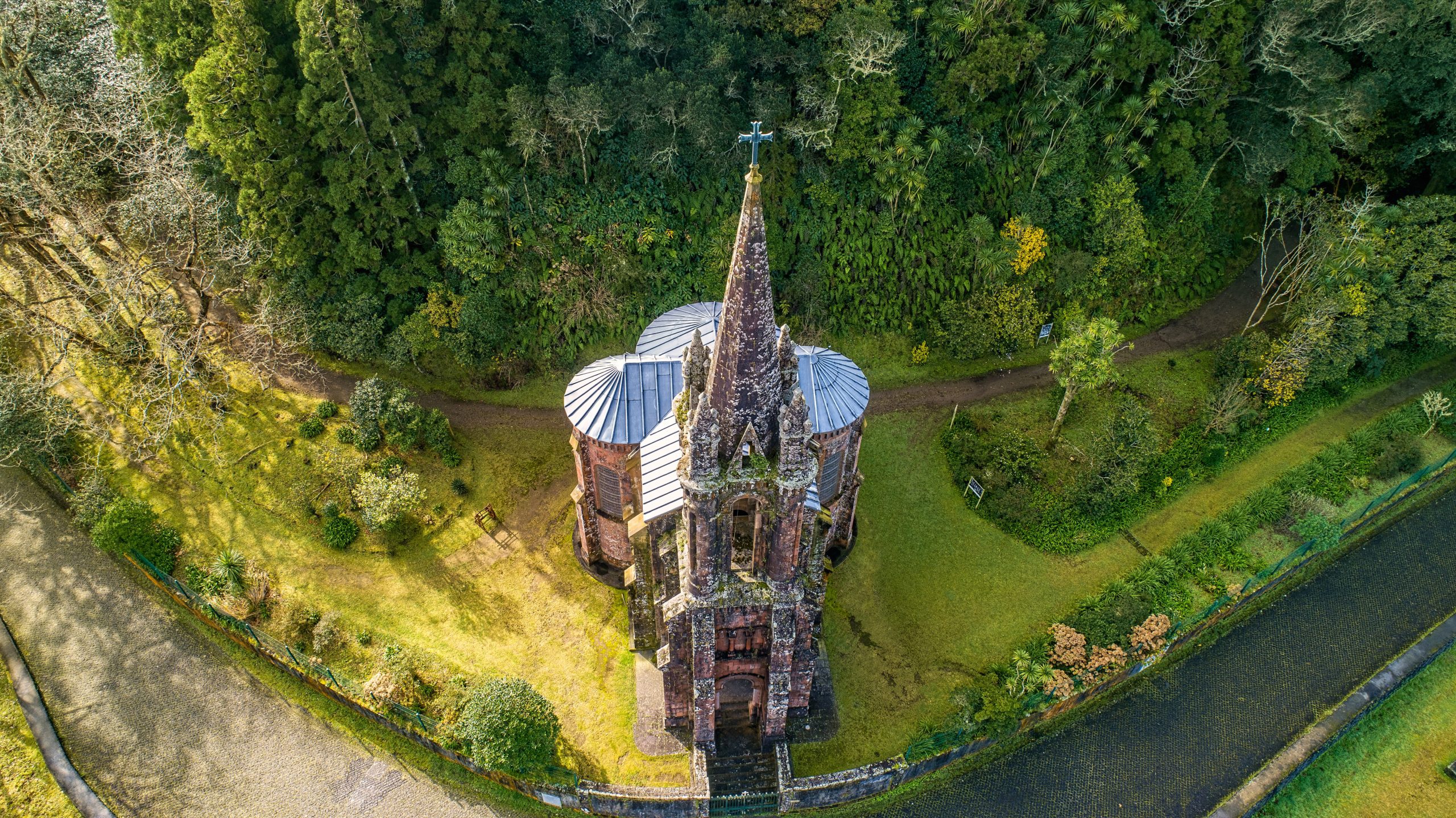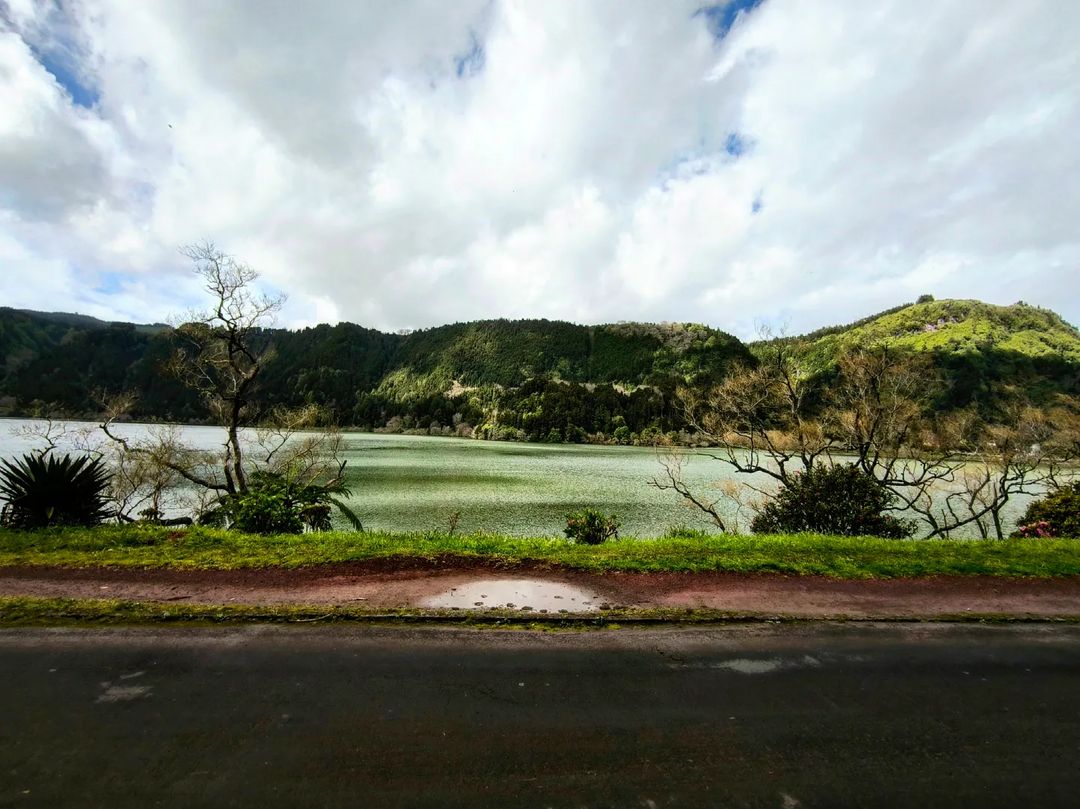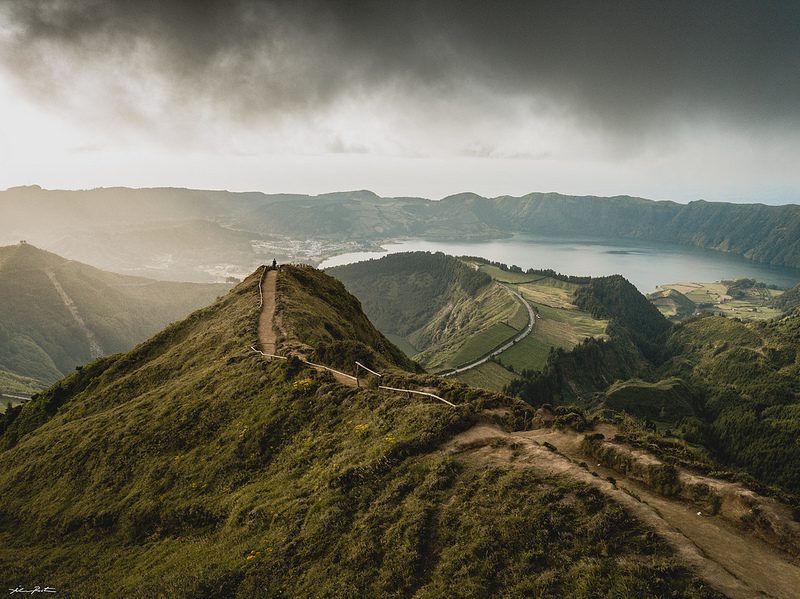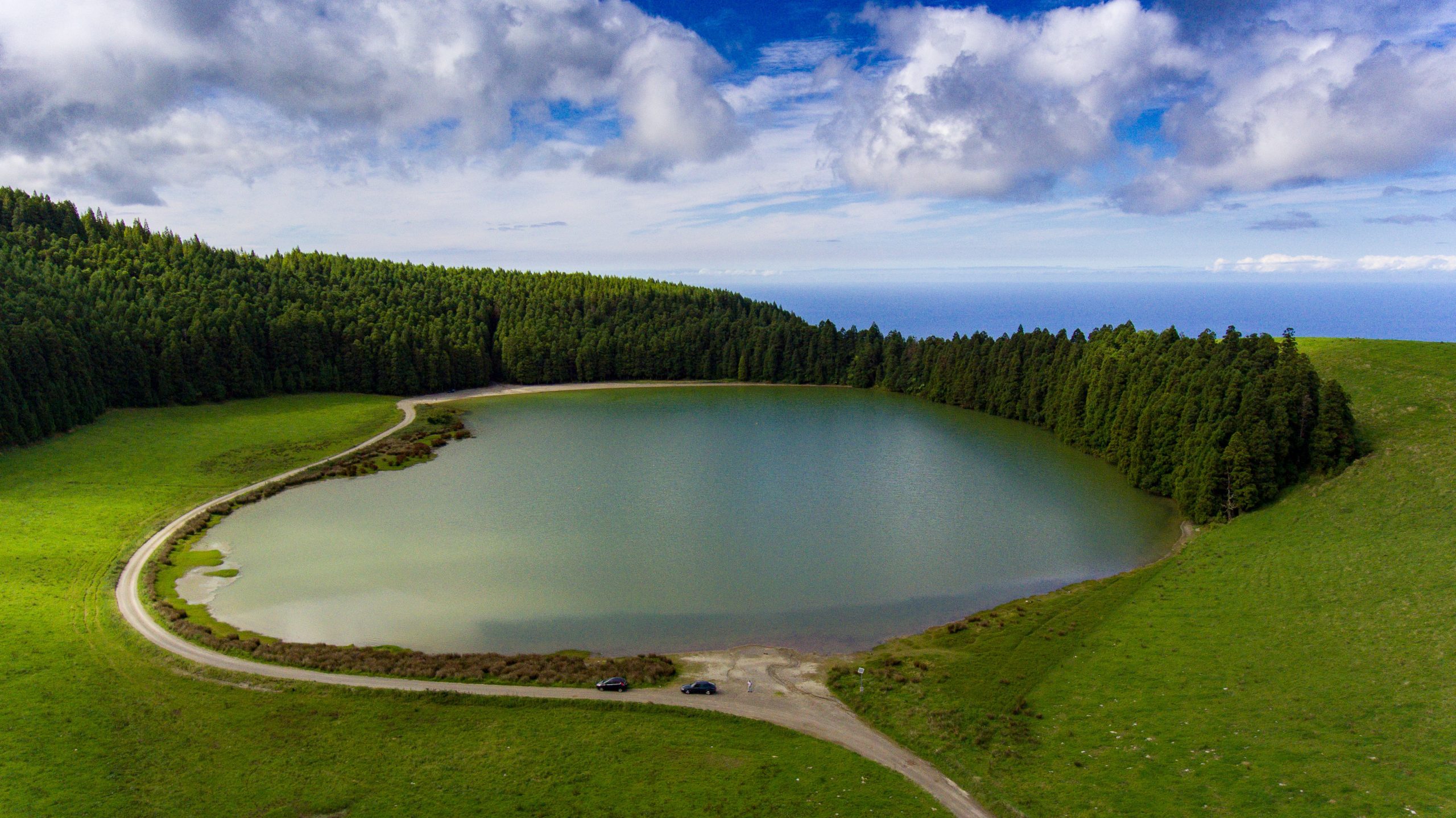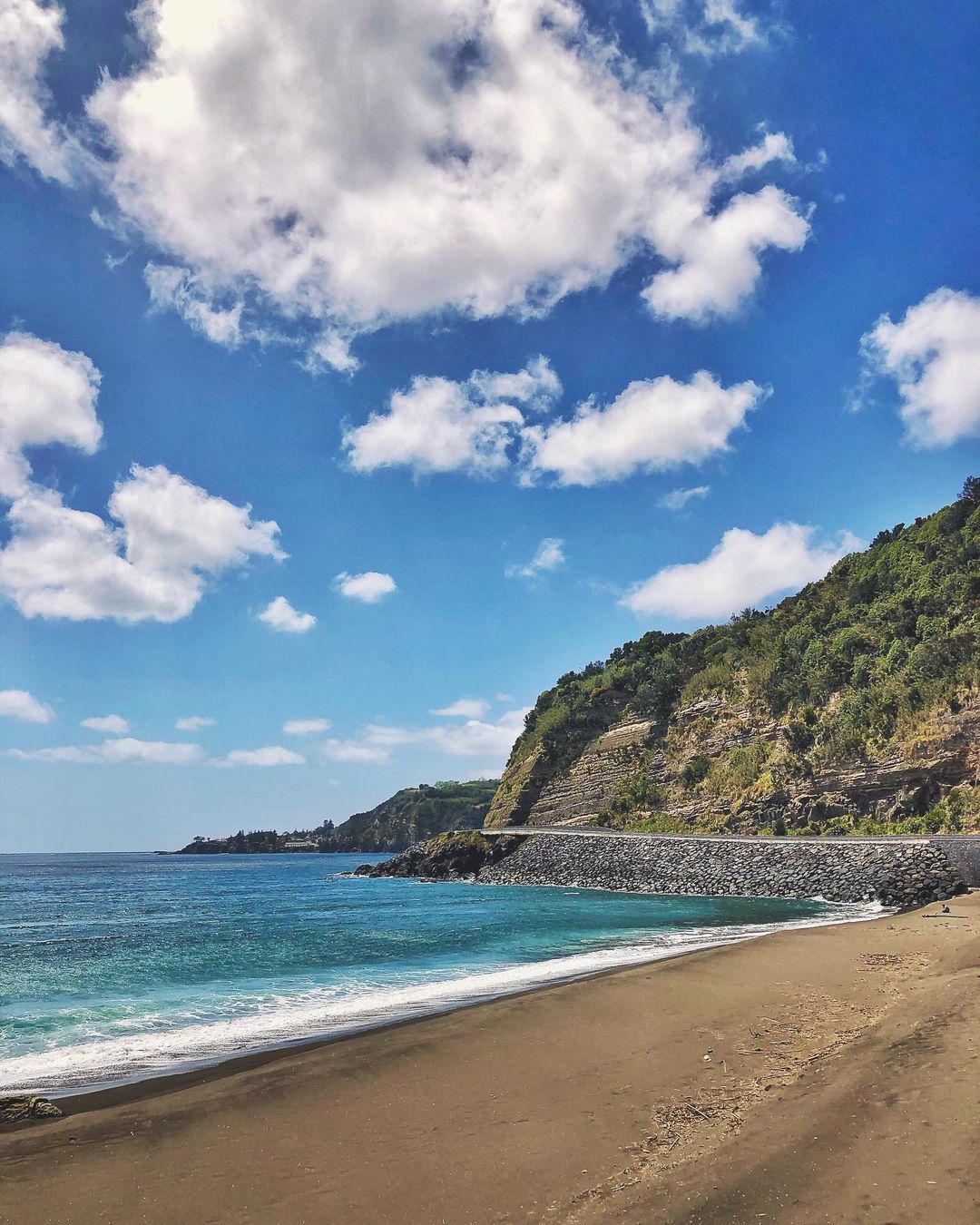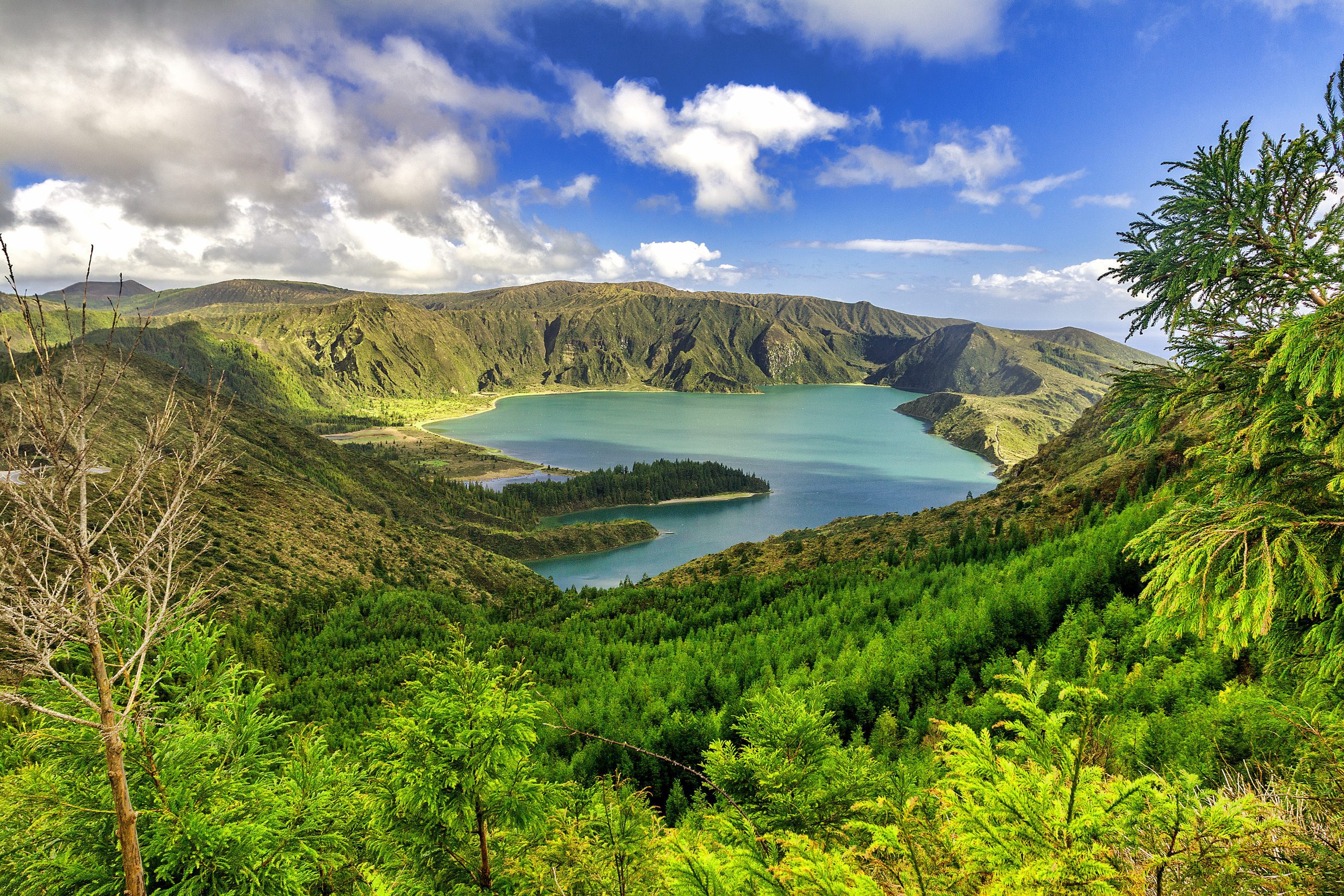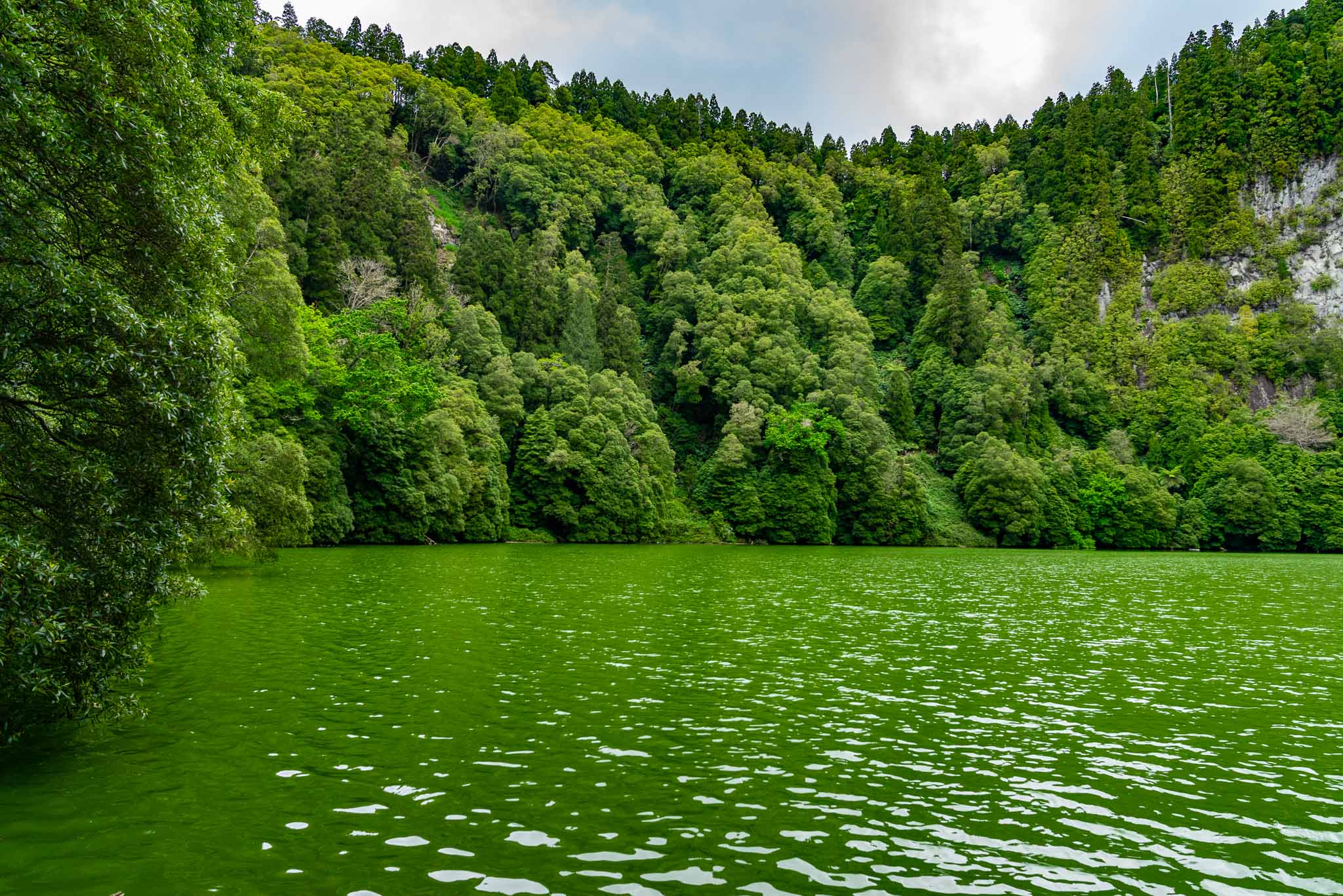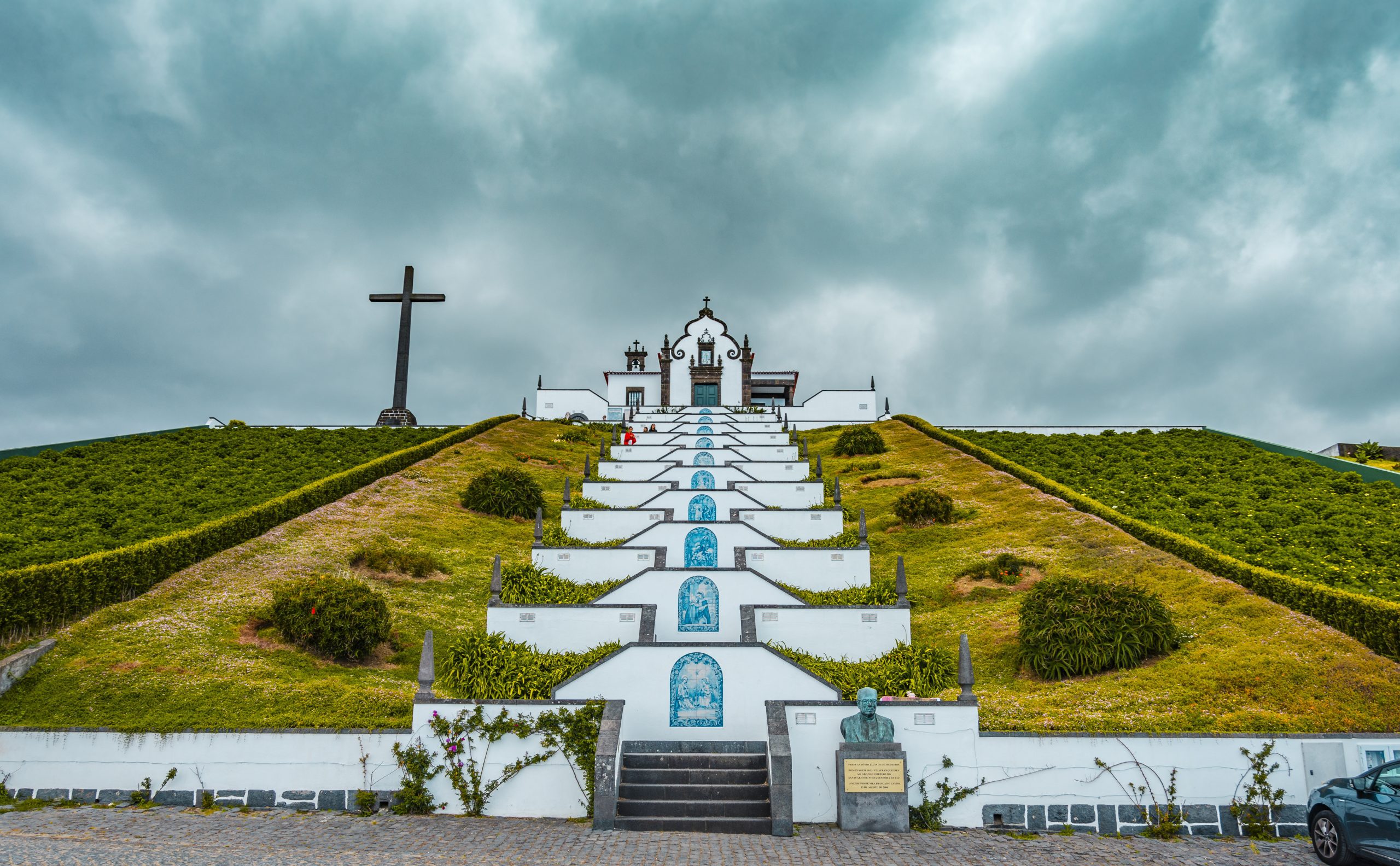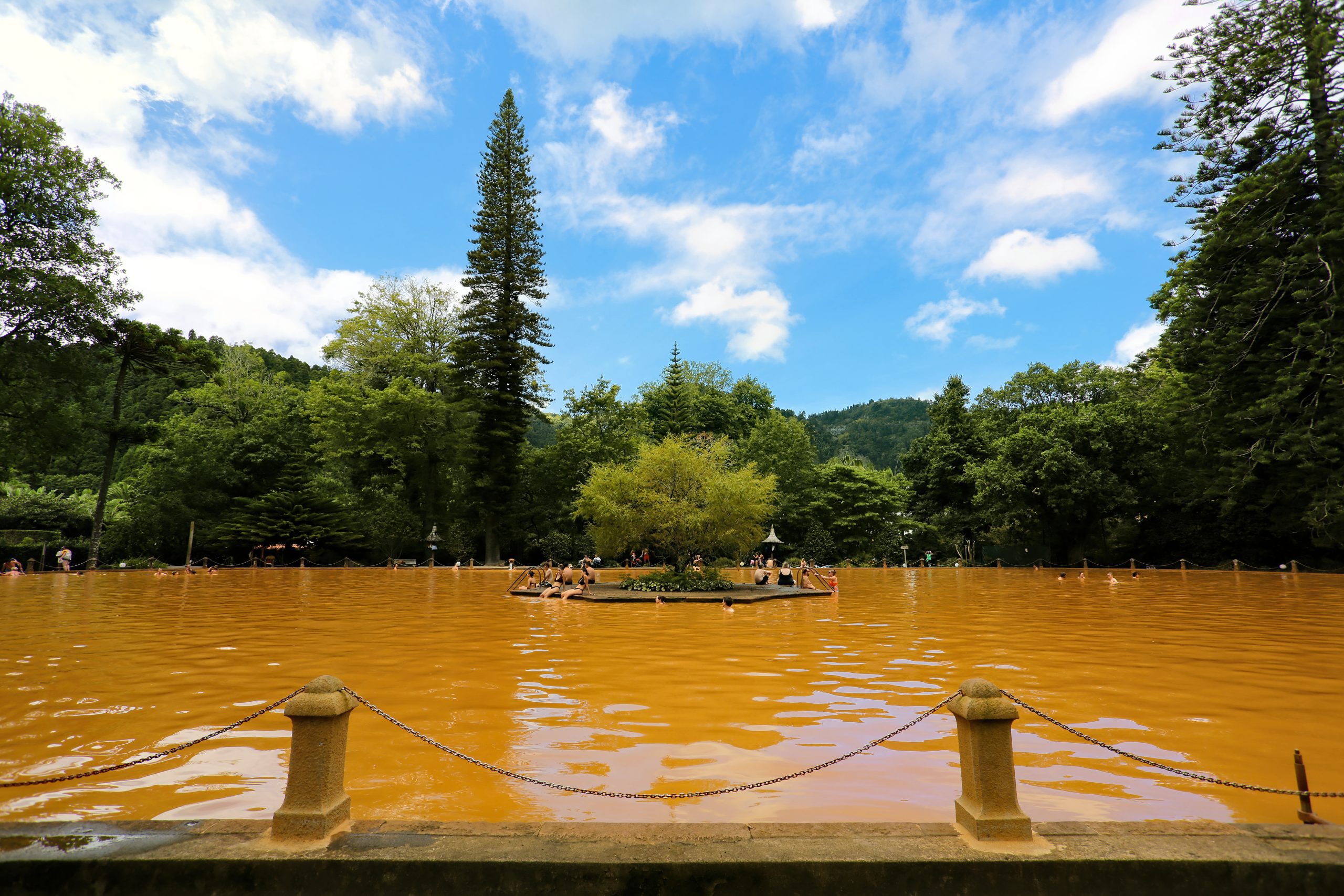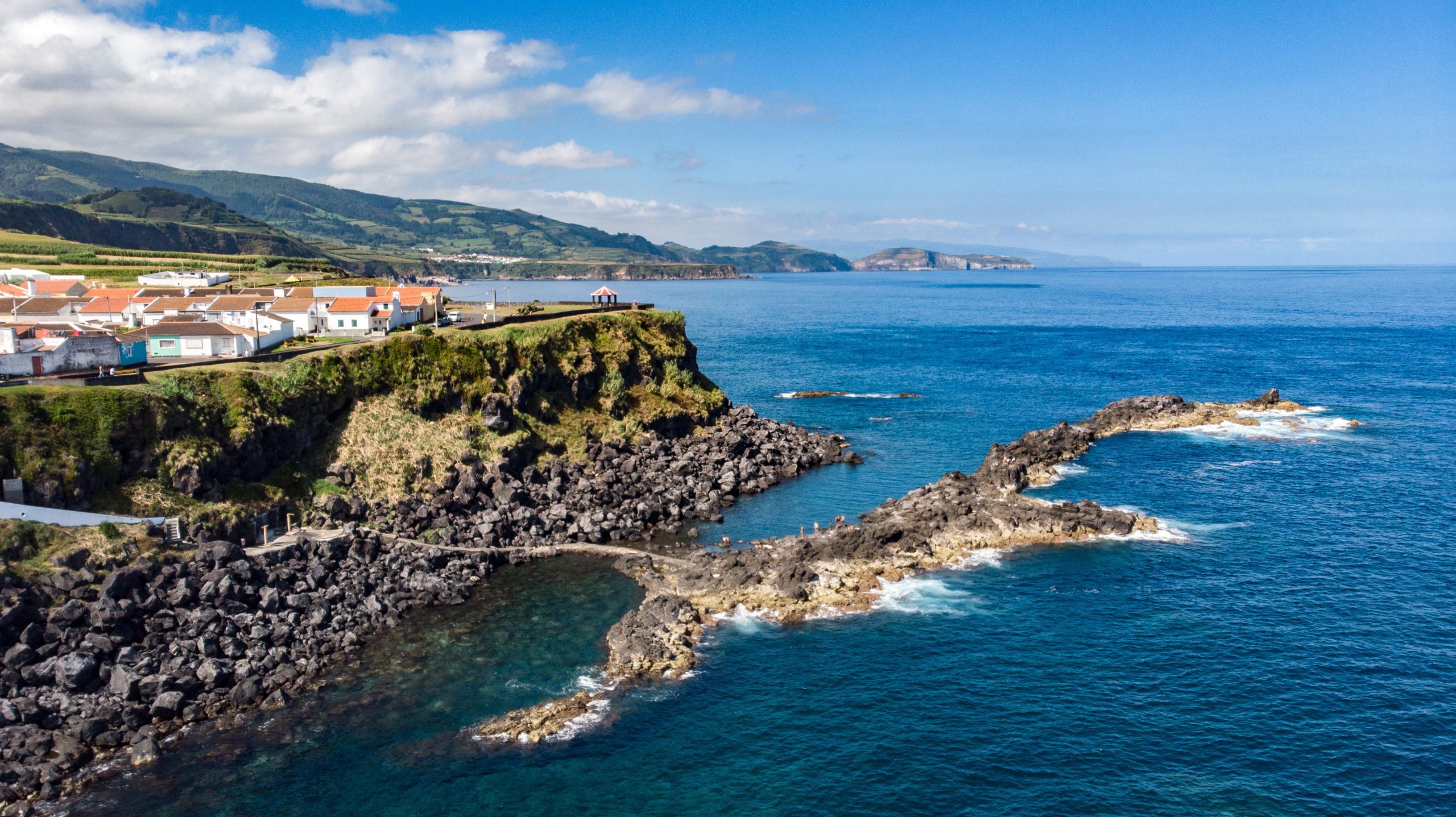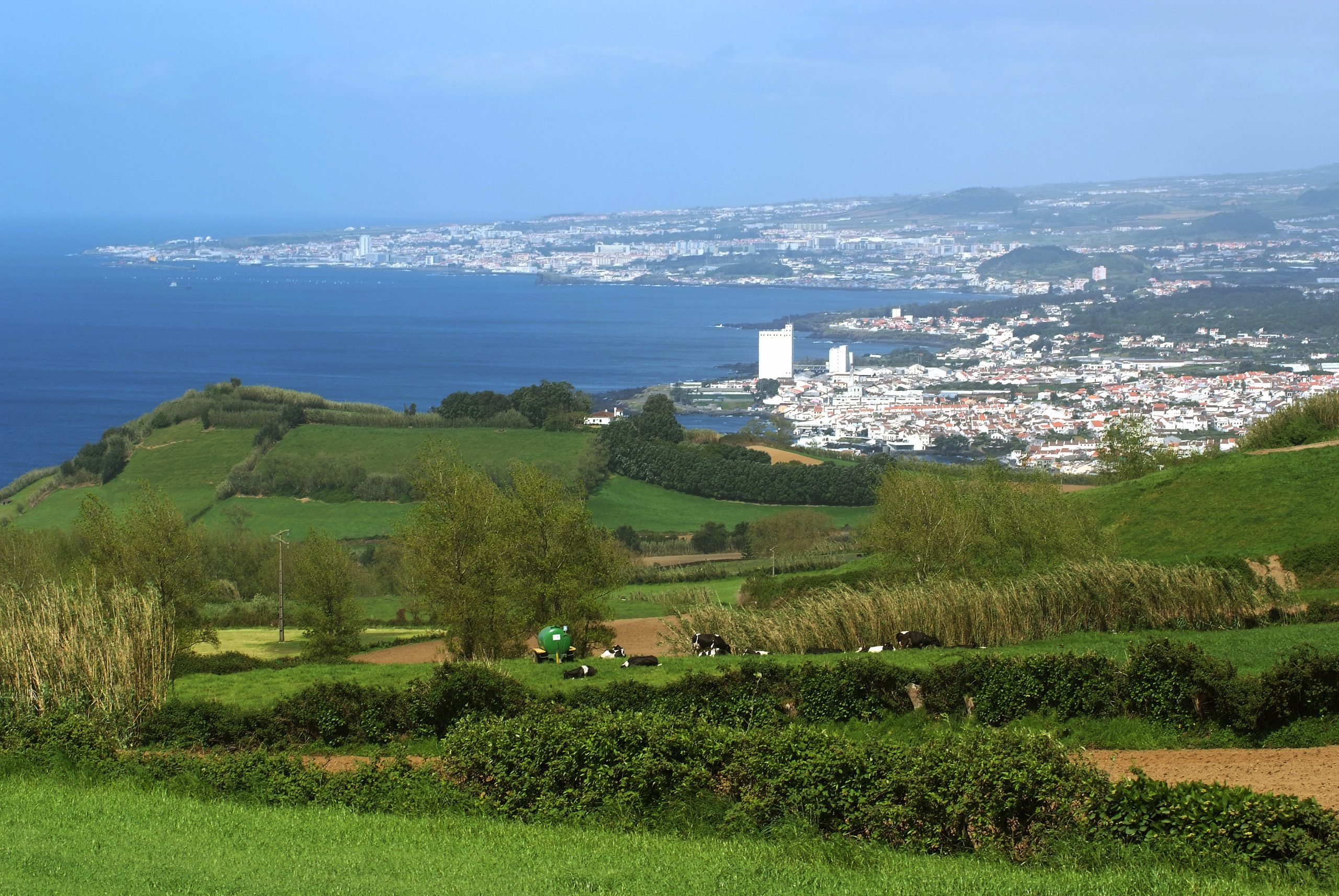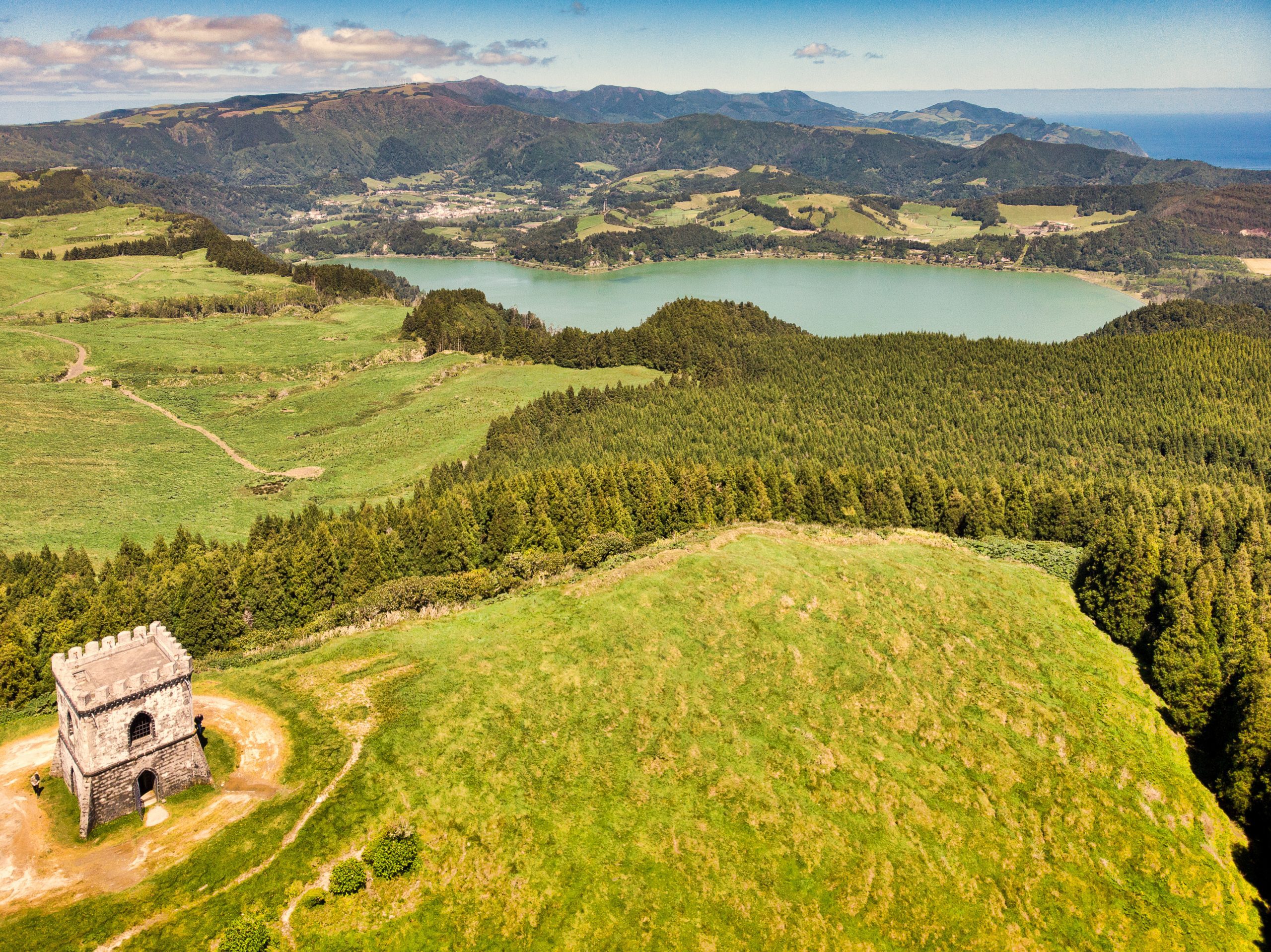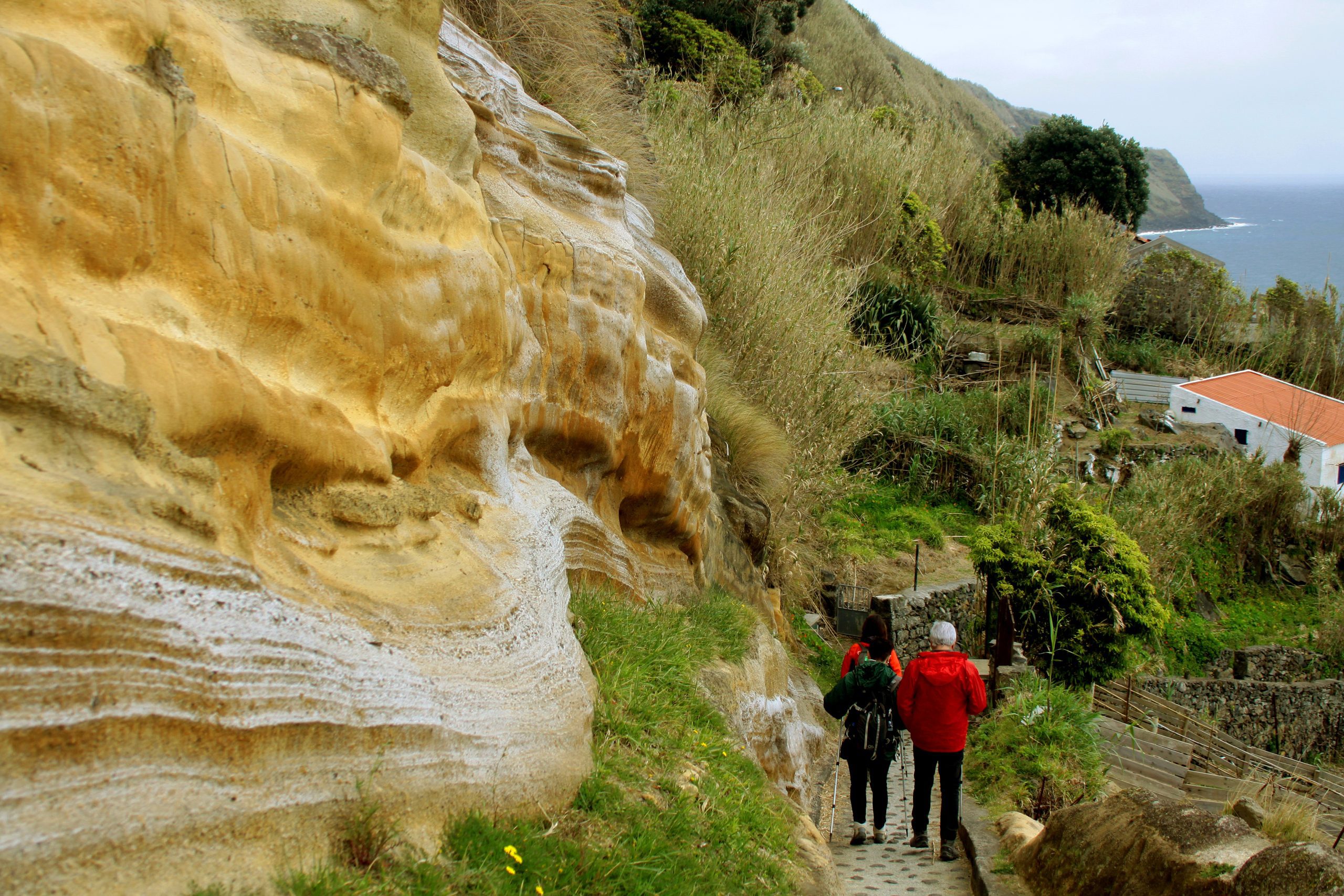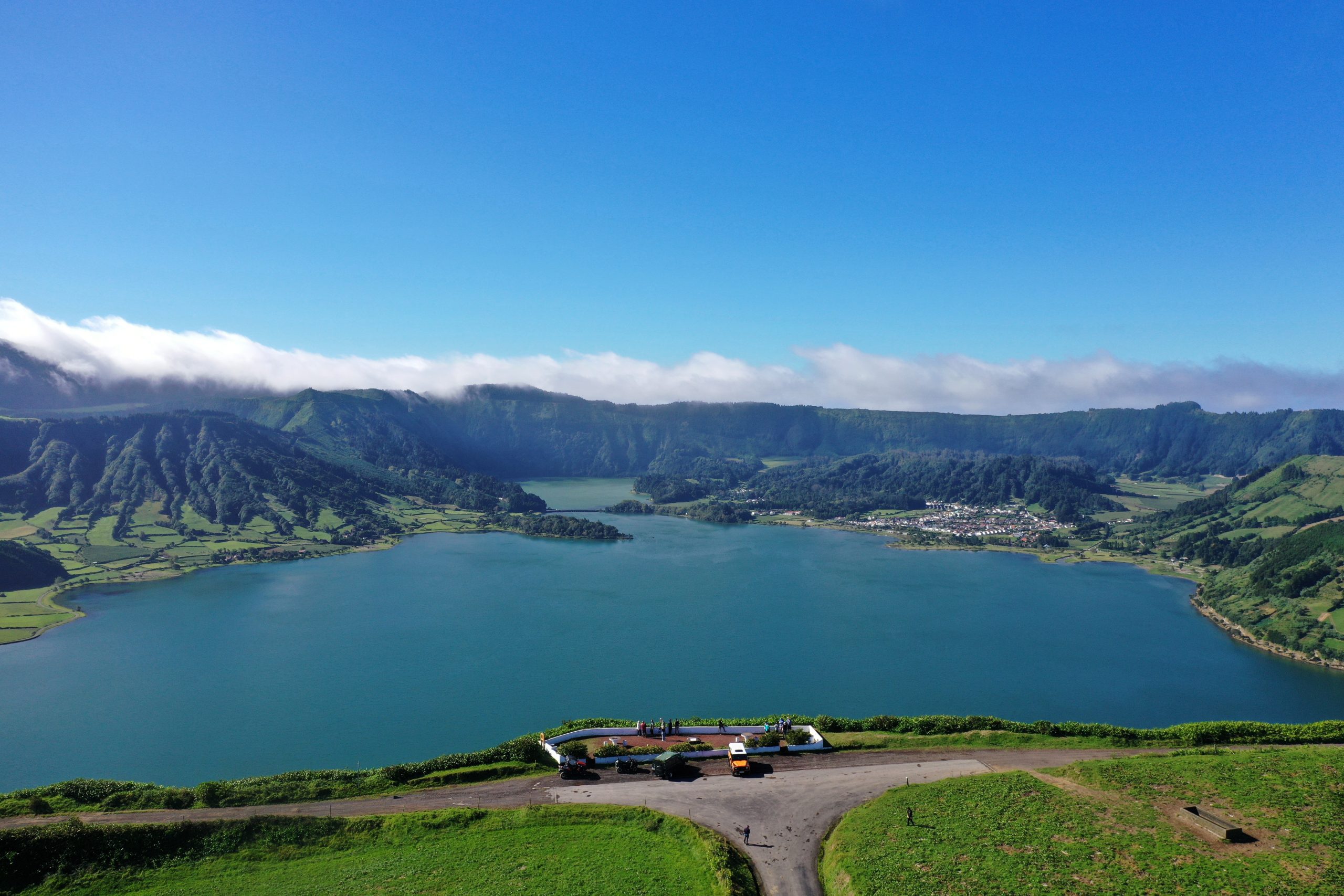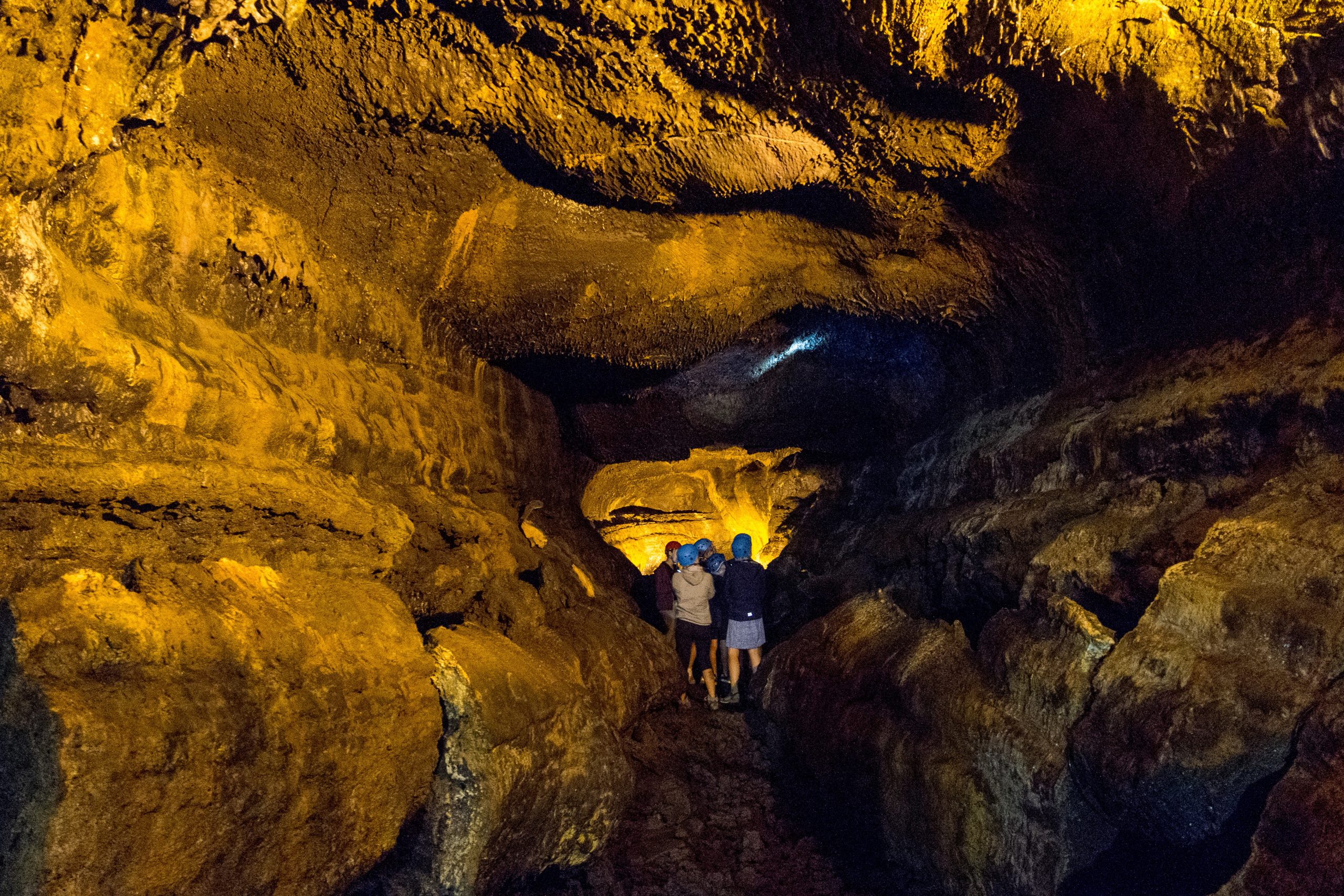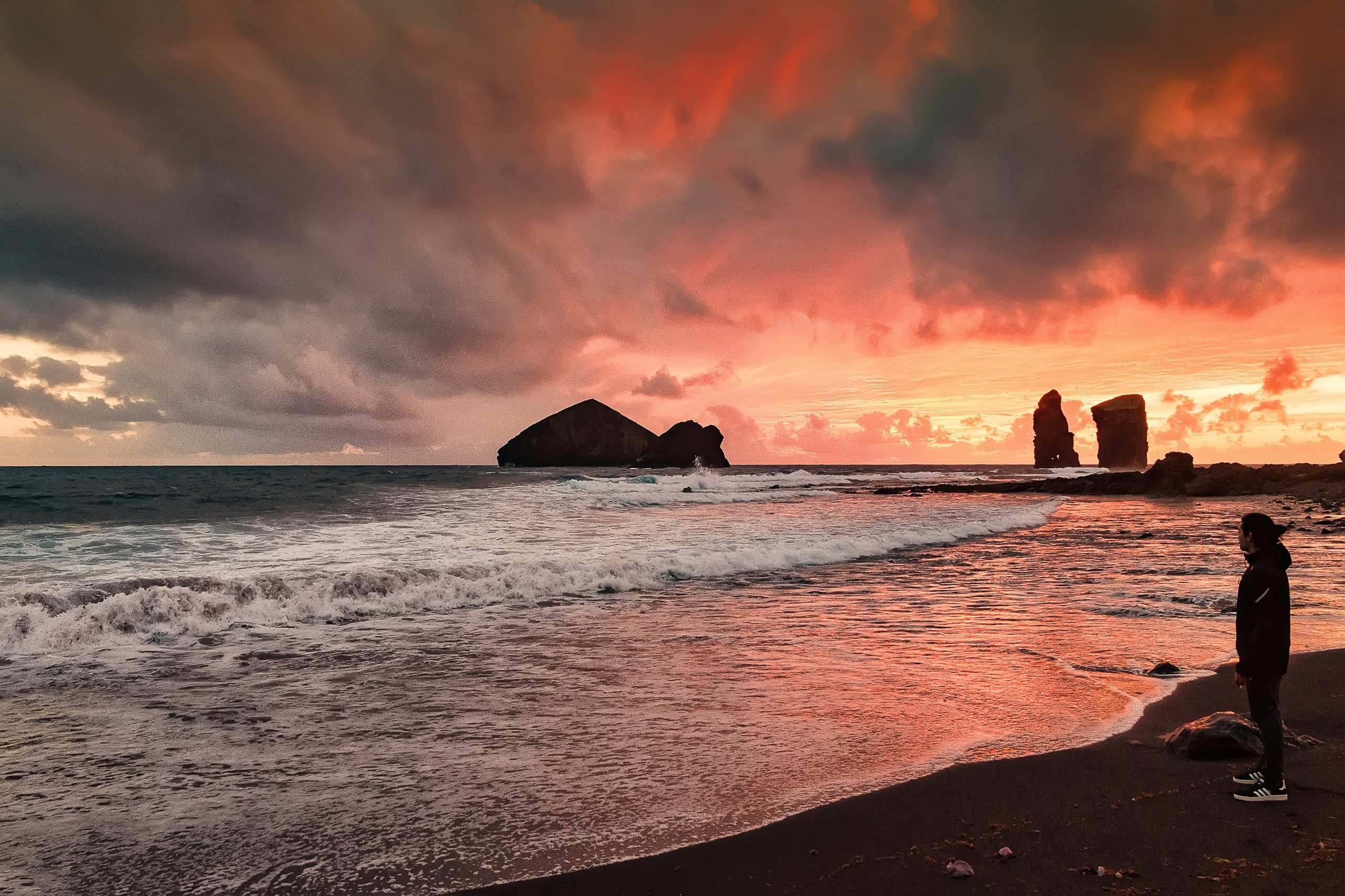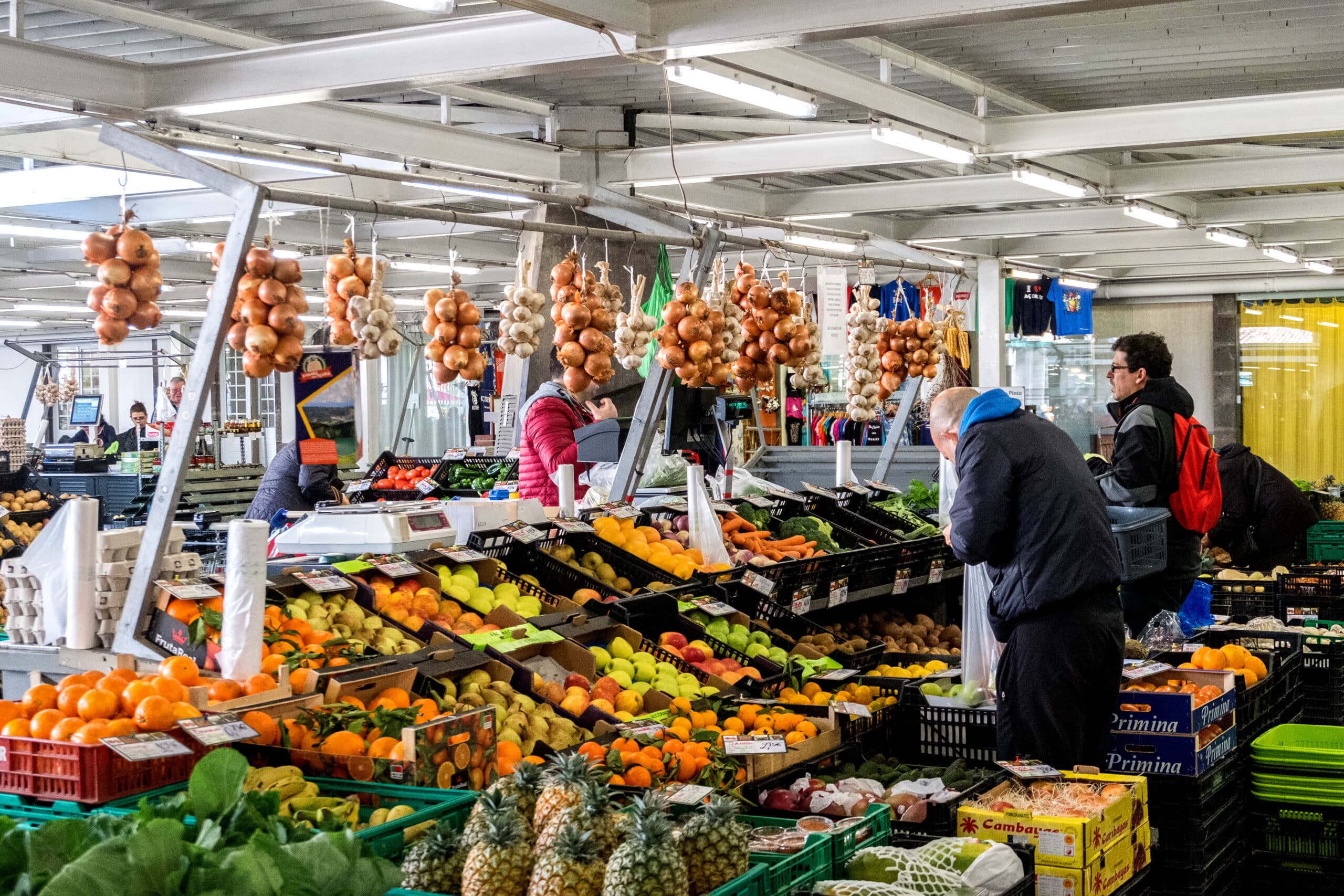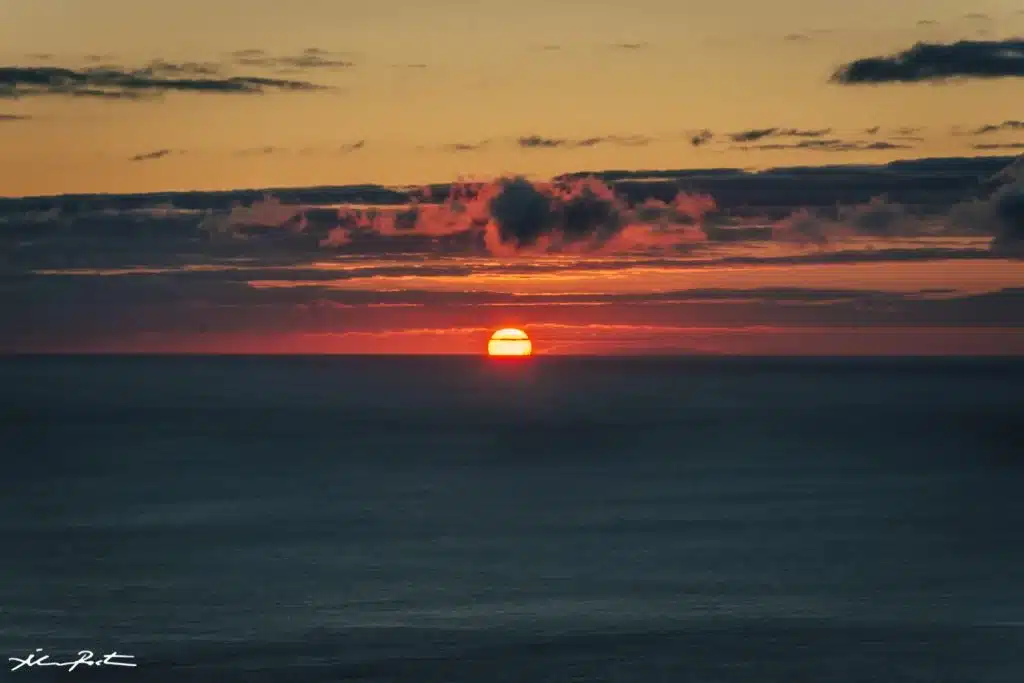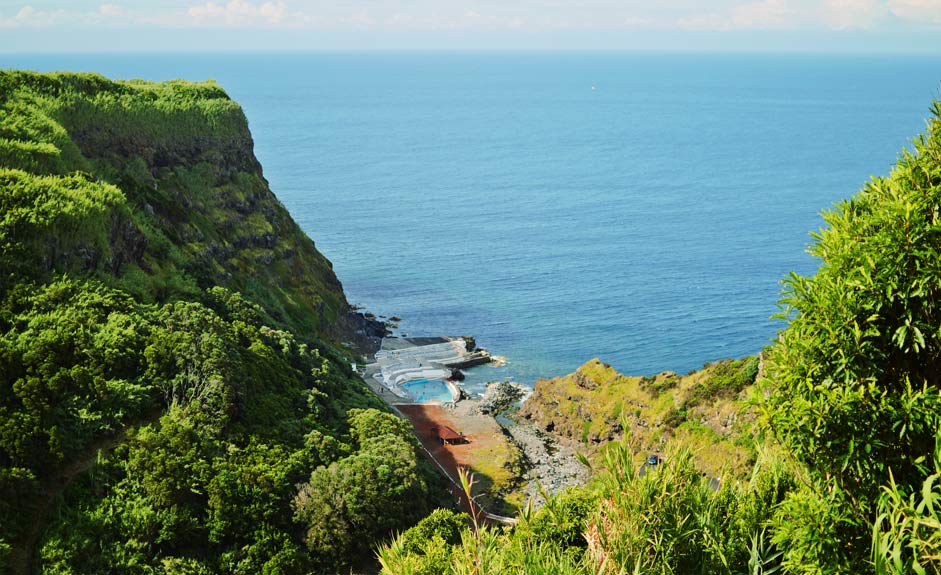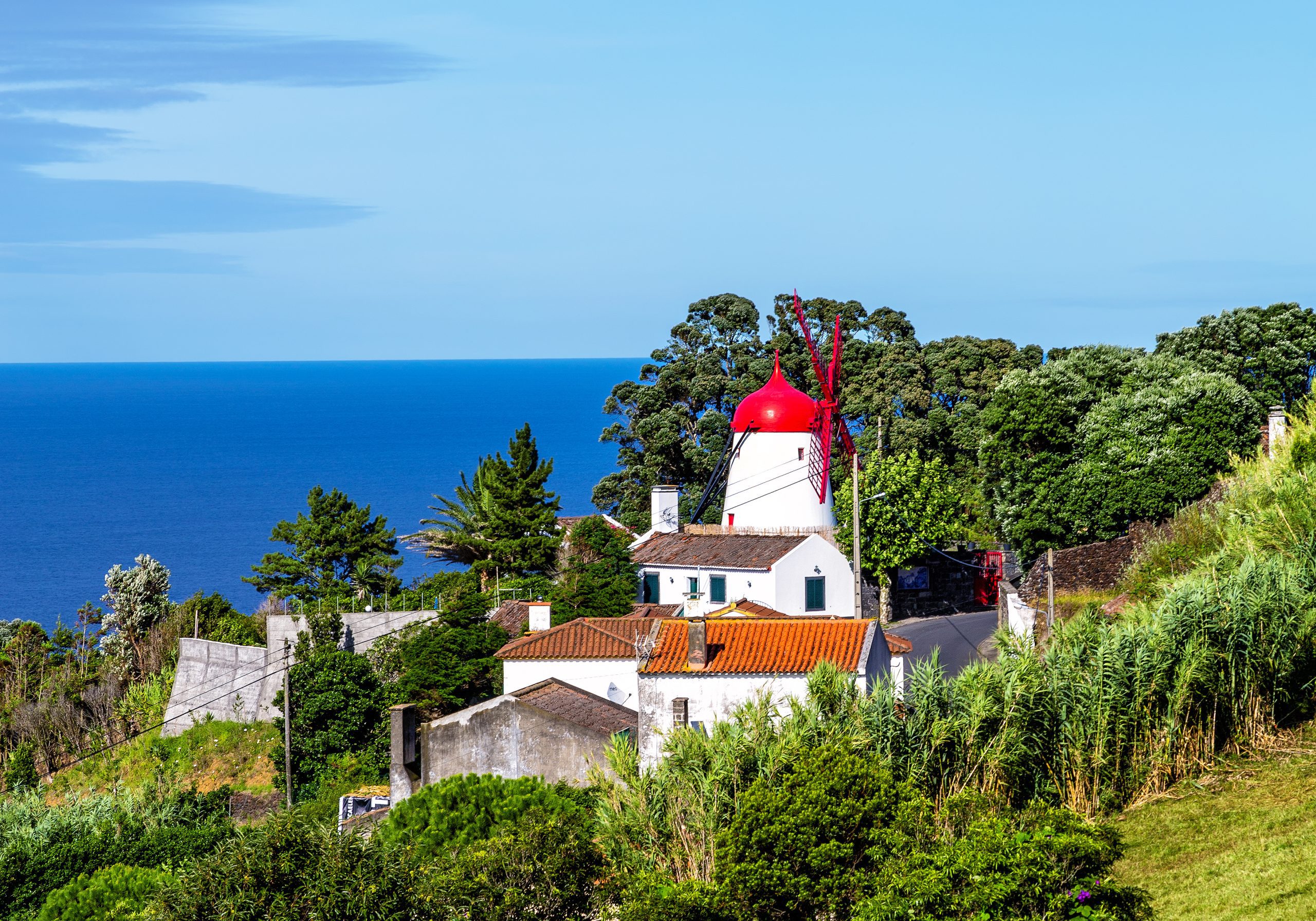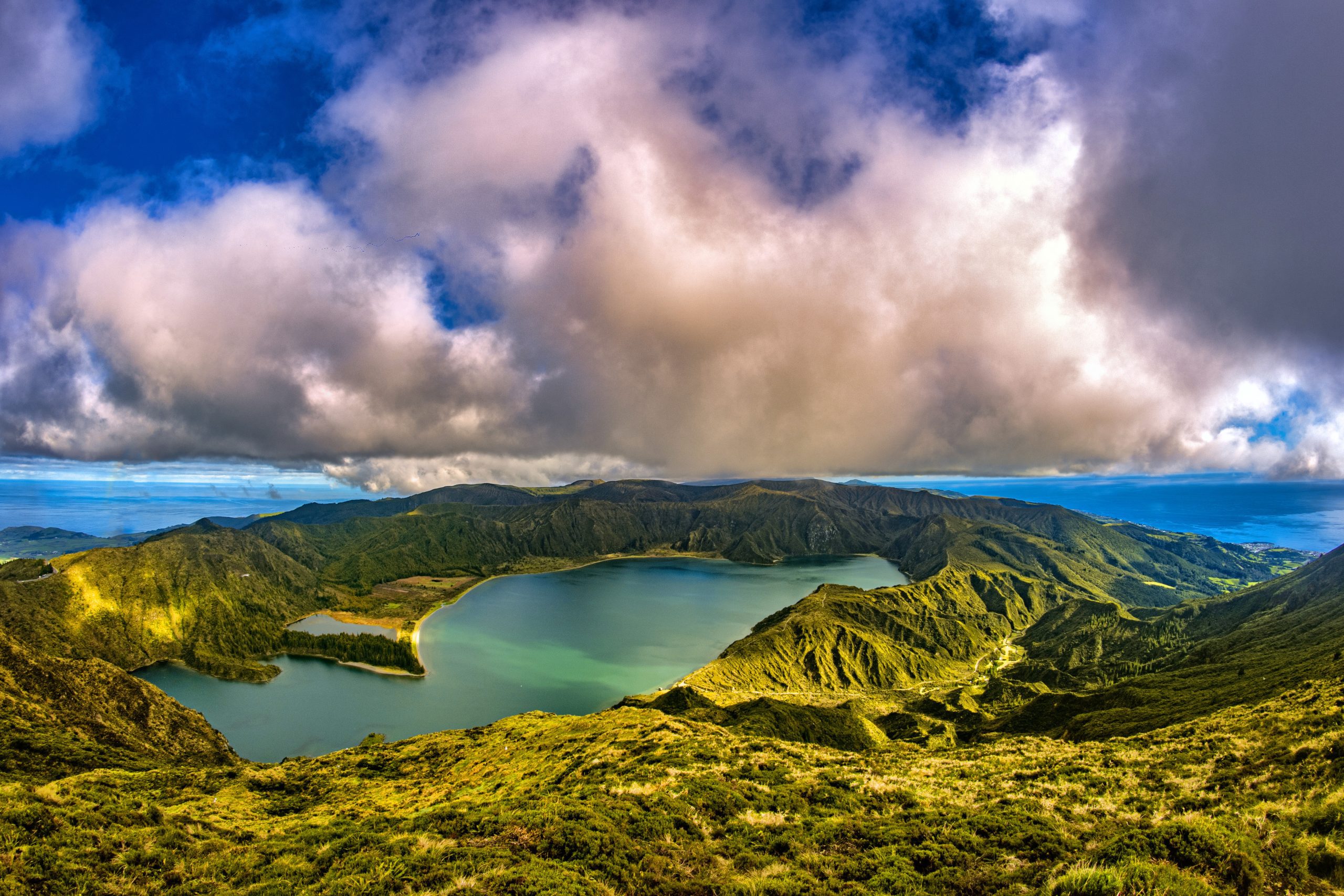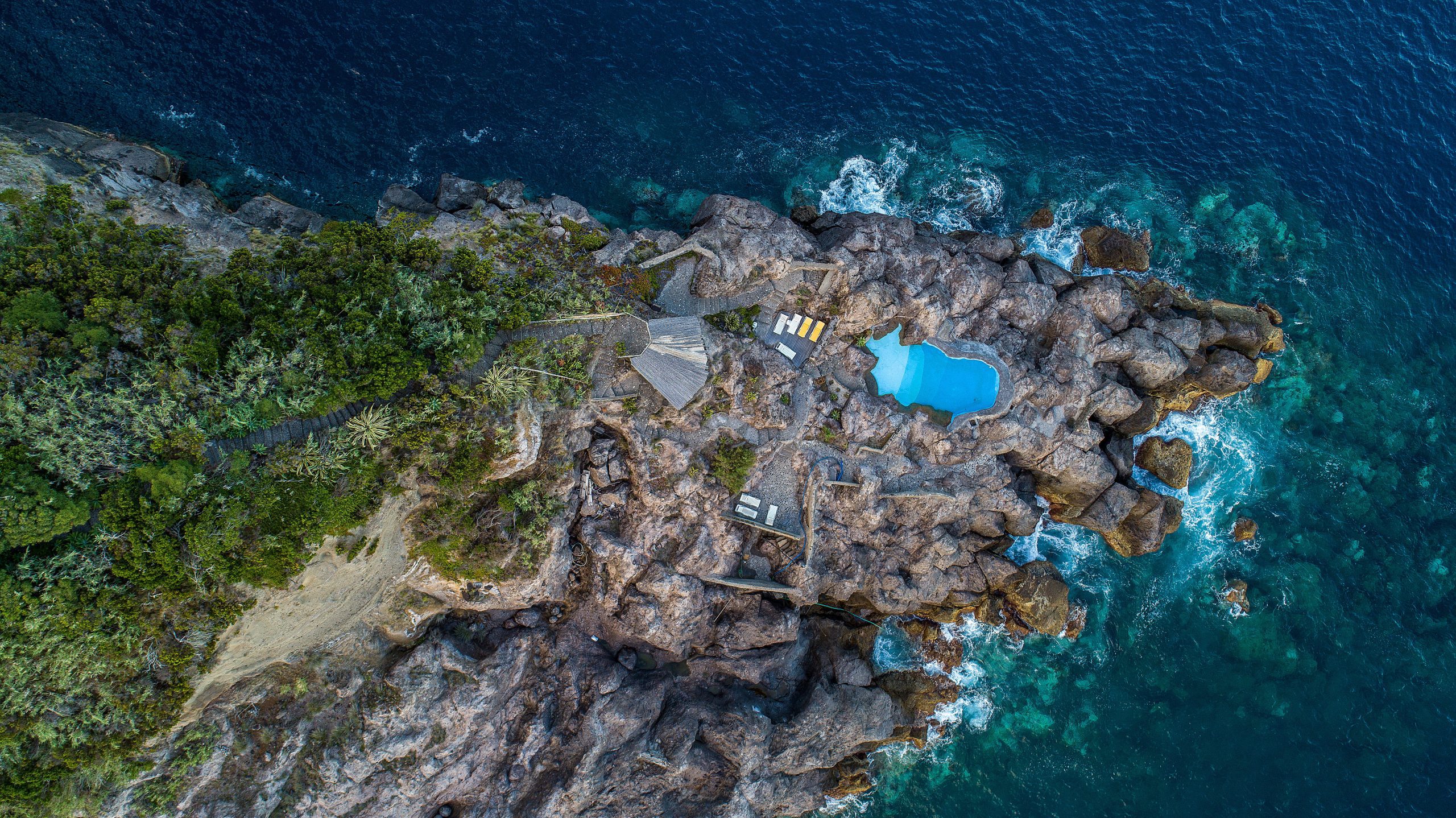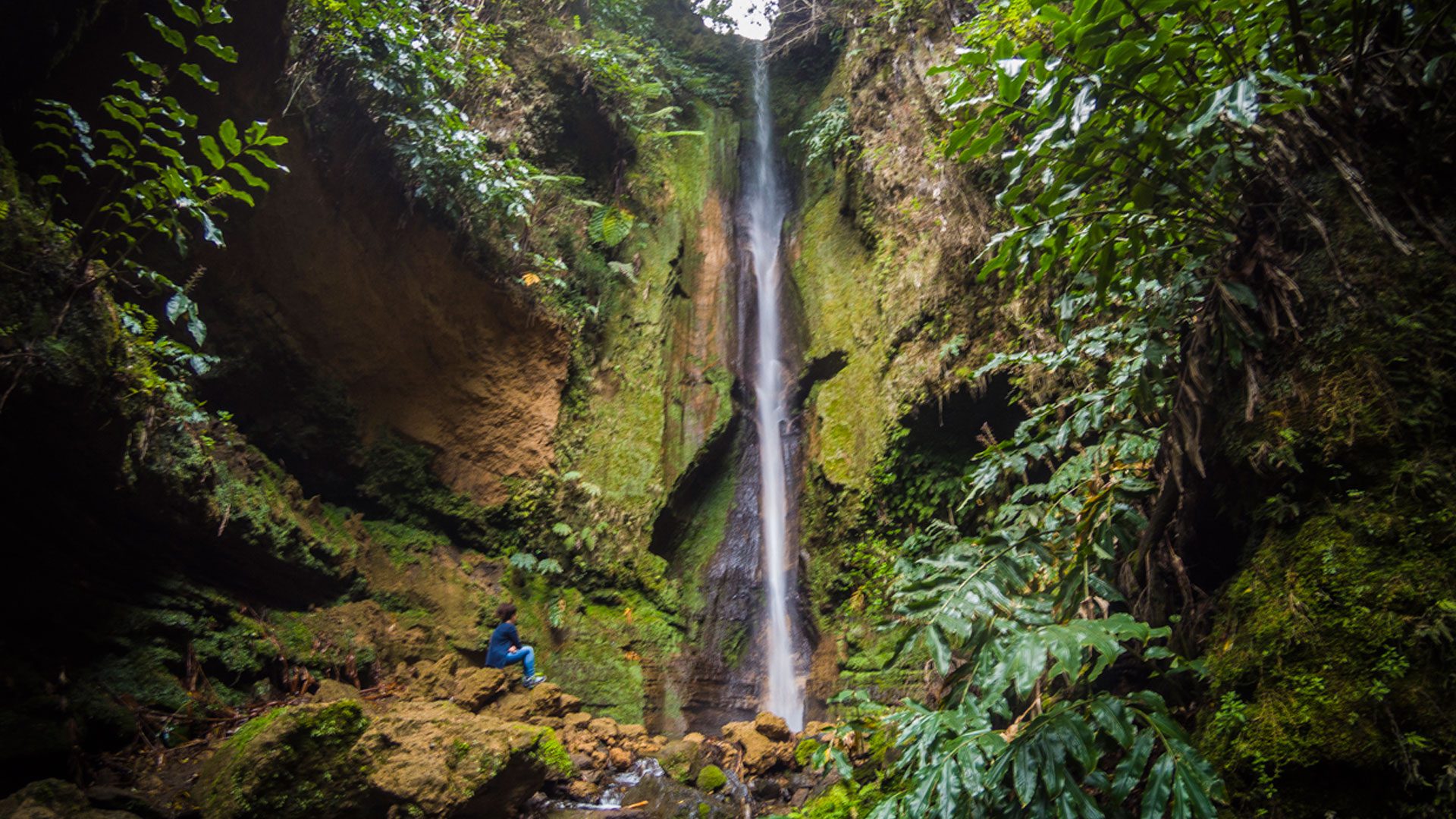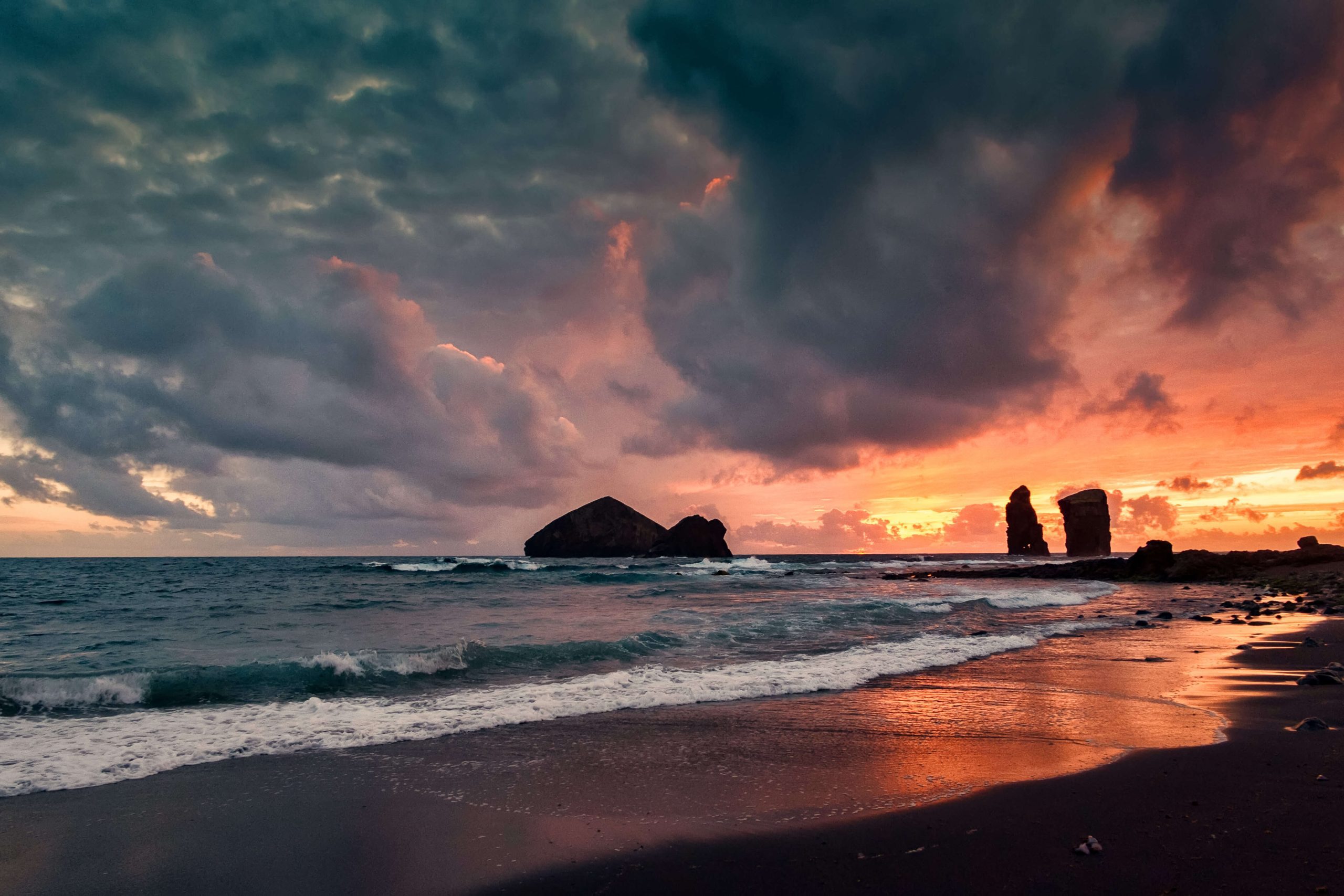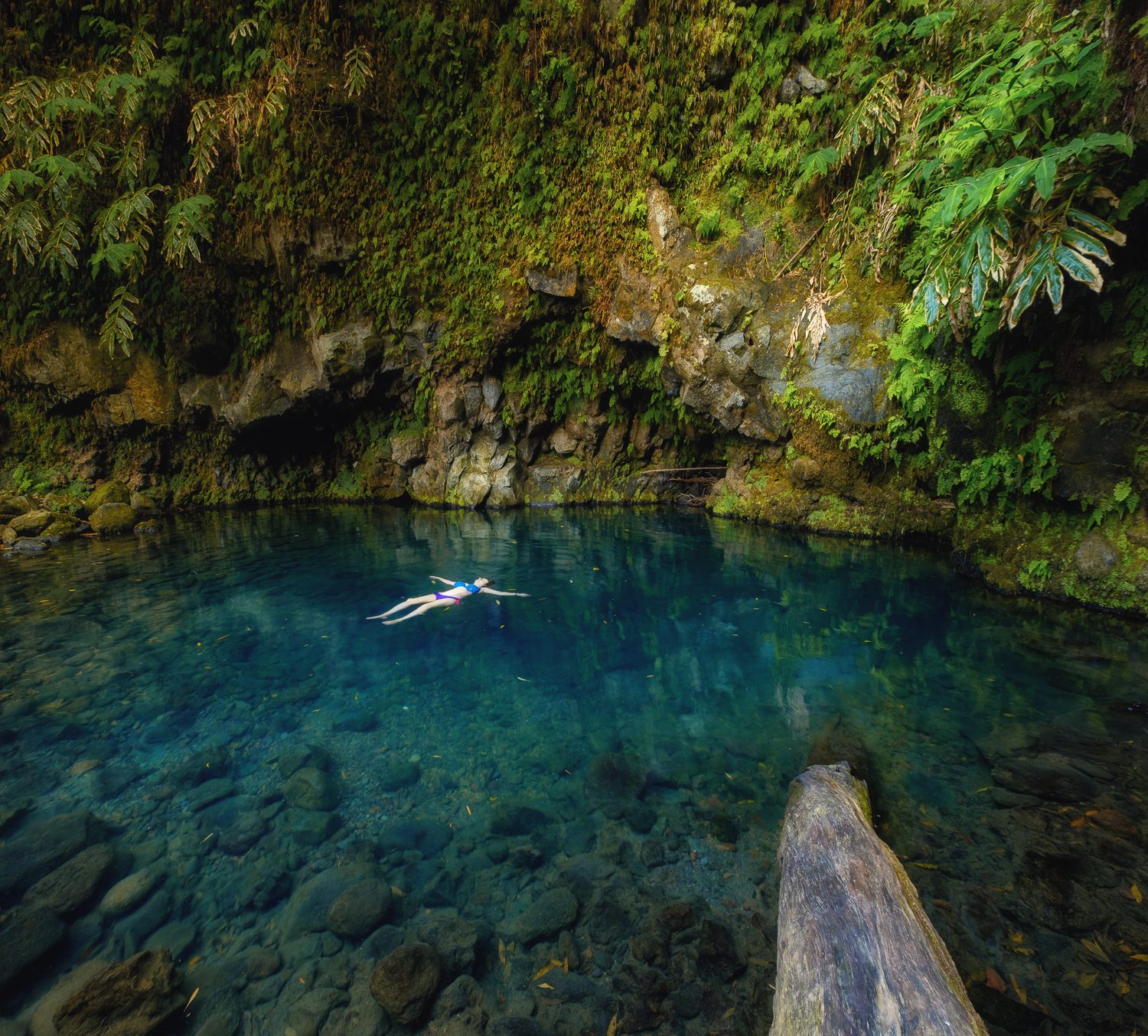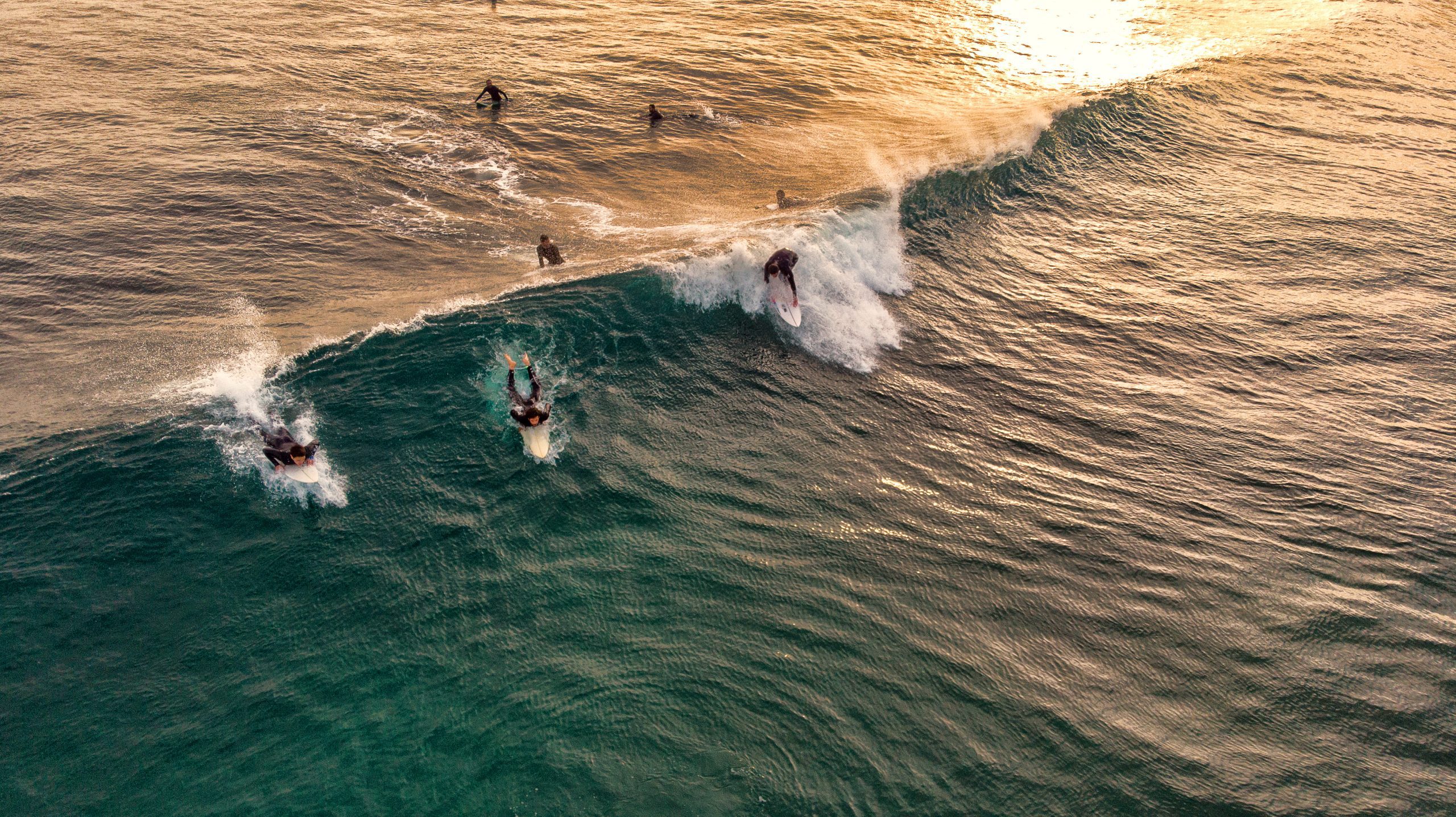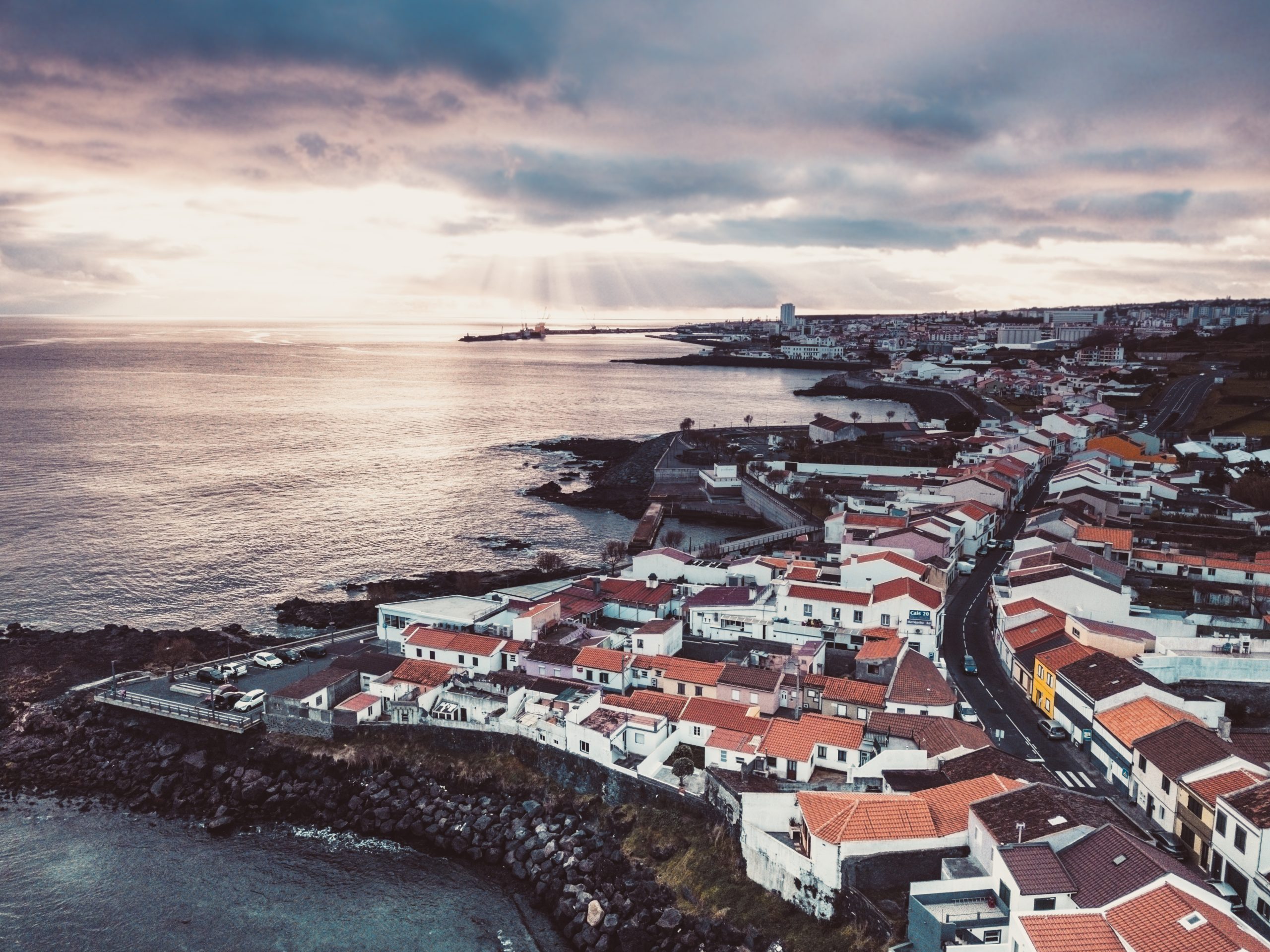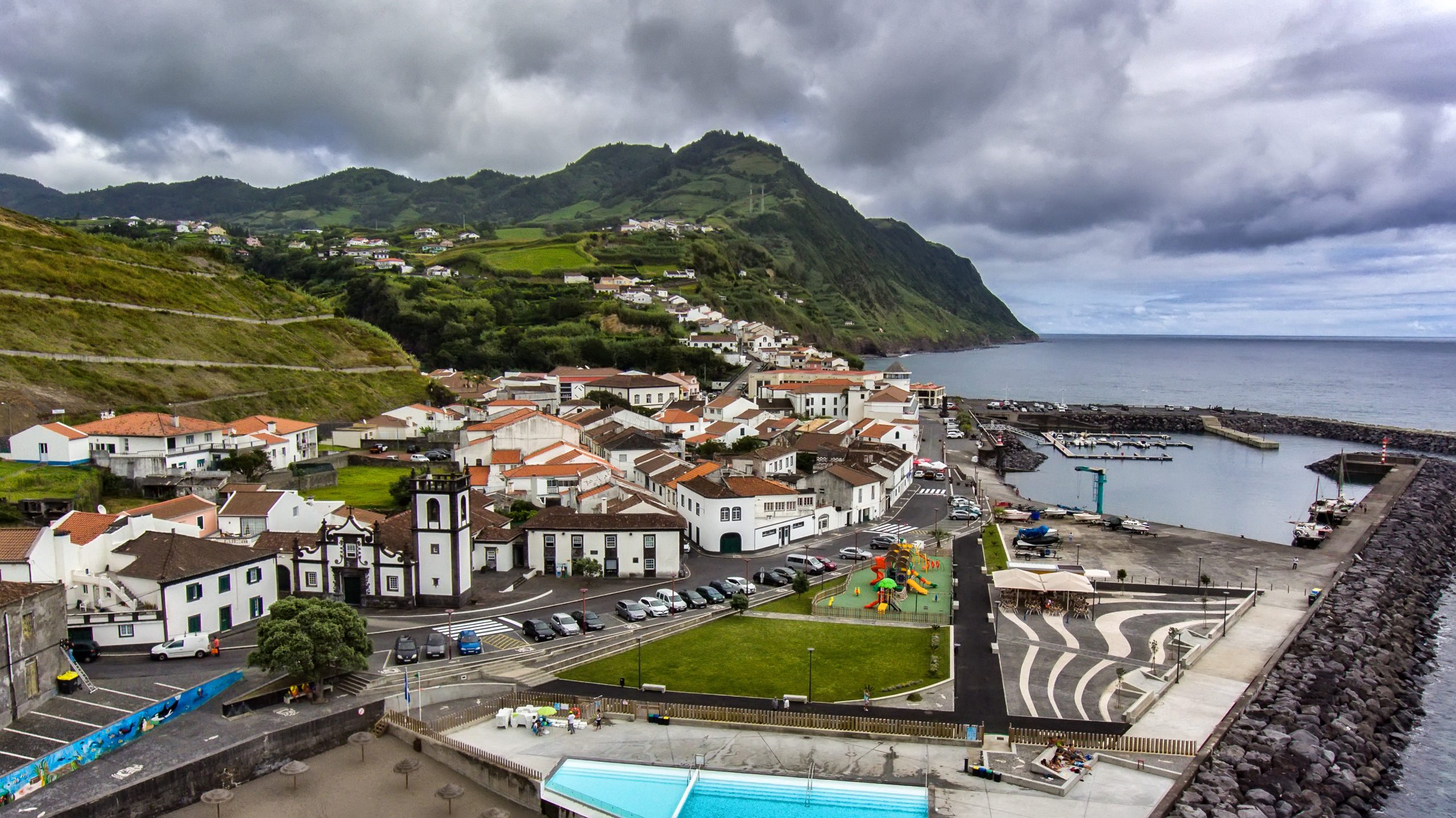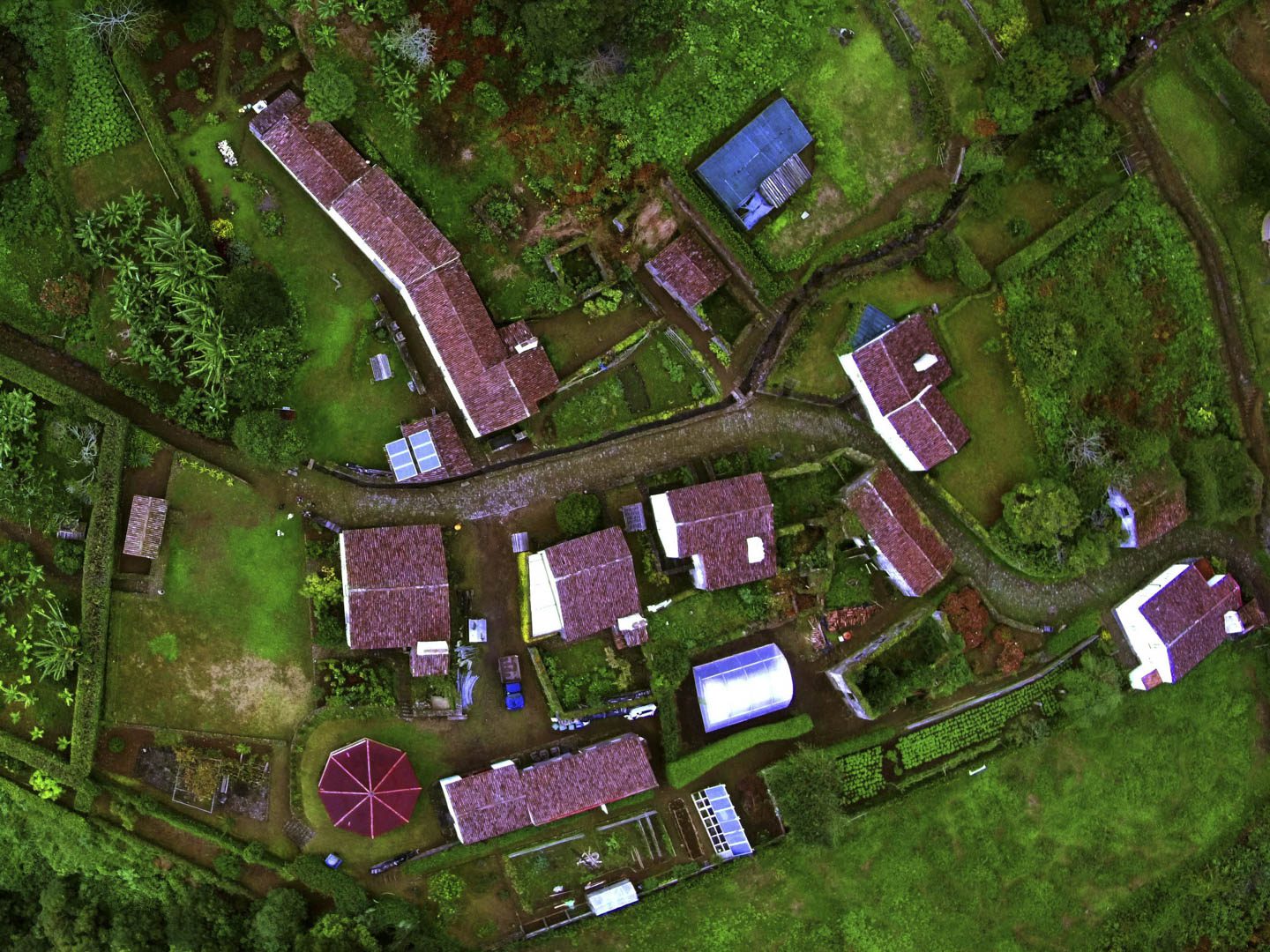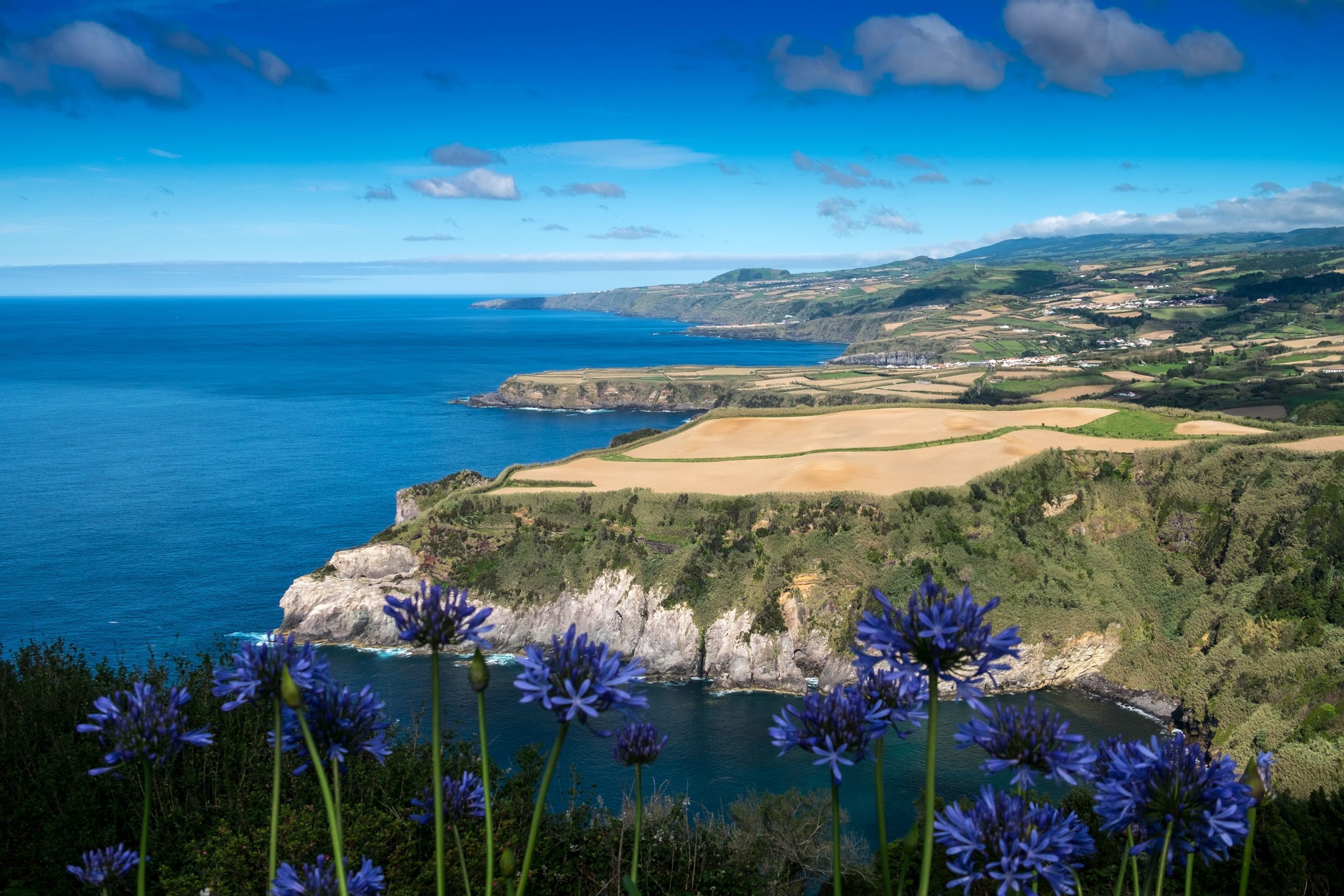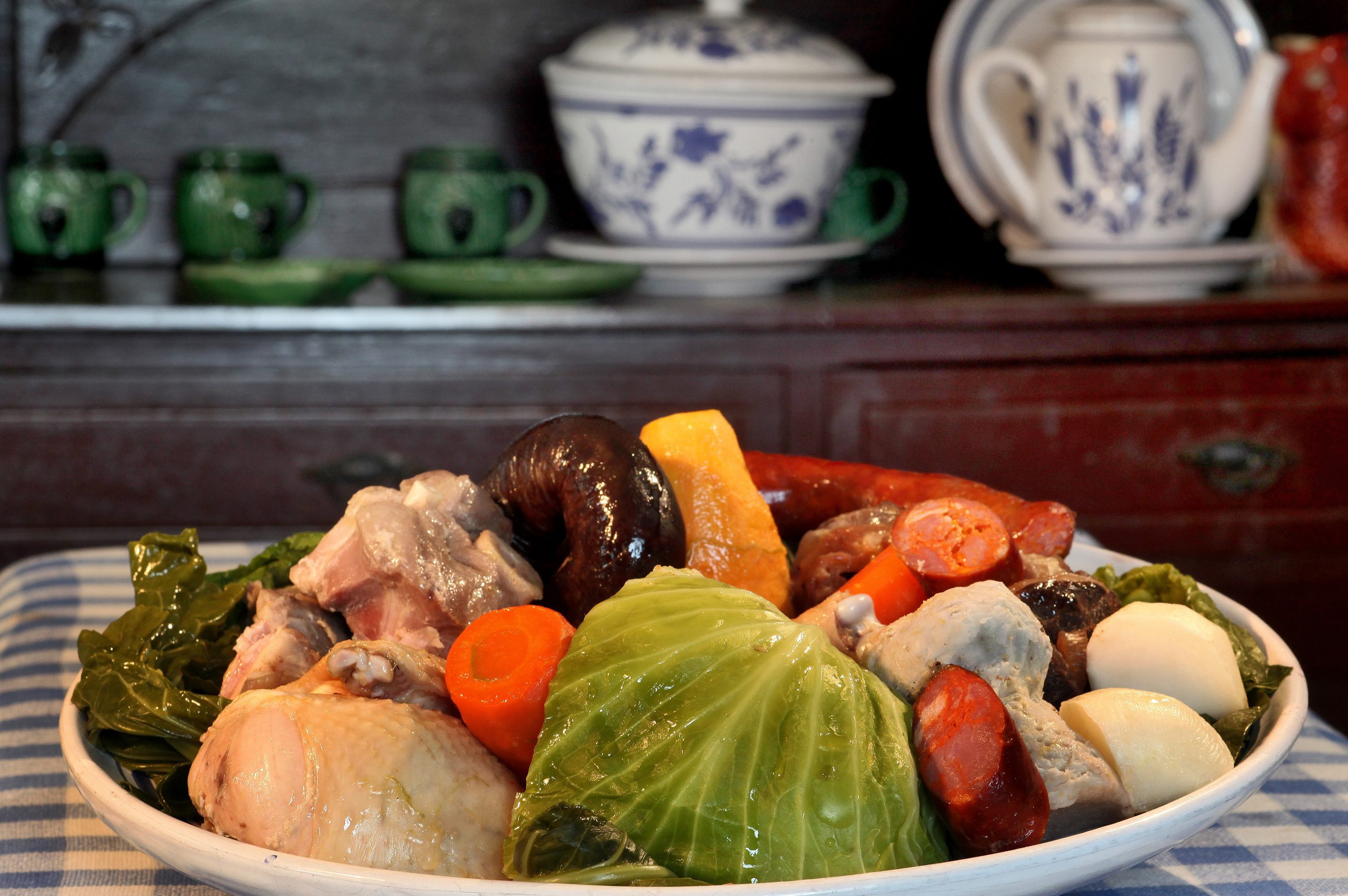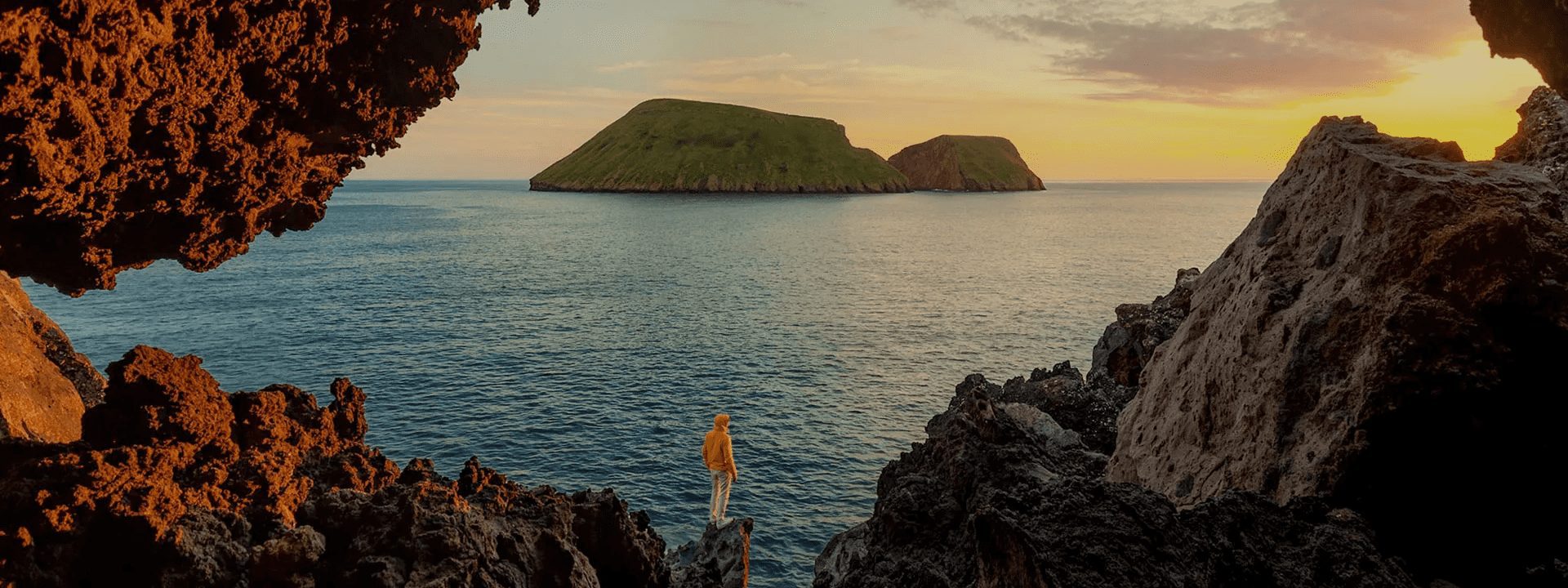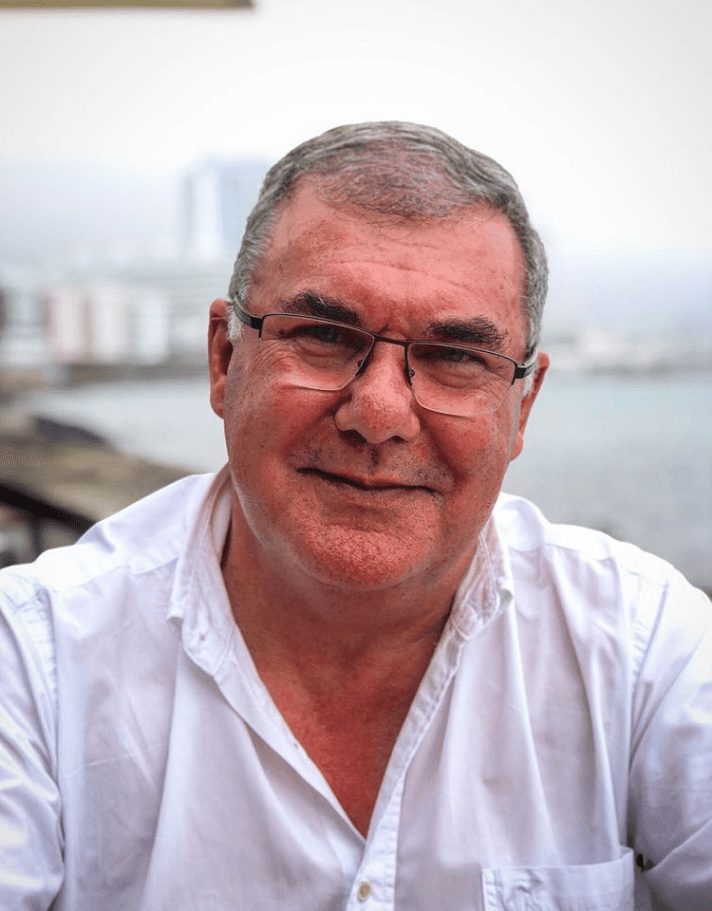The Portas da Cidade (“City Gates” if translated) is an ex-libris of the city of Ponta Delgada. They are located in the parish of São Sebastião, former Matriz, in the municipality of Ponta Delgada in São Miguel, in the Azores. They built the Portas da Cidade in the 18th century next to the extinct pier of Ponta Delgada and later transferred them to Praça Gonçalo Velho Cabral during the works on Avenida Infante Dom Henrique. The City Gates, consisting of three imposing arches delicately decorated with symbolic elements, such as the Royal Coat of Arms and the City Coat of Arms, is a historical and cultural landmark of great tourist interest.
What are Portas da Cidade

The Portas da Cidade is one of the main tourist attractions in Ponta Delgada. This imposing monument, built in the 18th century, is considered part of the archipelago’s historical and cultural heritage.
Did you know
Portas da Cidade is classified as a Property of Public Interest in Decree-Law No. 39,175 of April 17, 195.
Considered a visiting card of the city of São Miguel, the Portas da Cidade consists of three arches decorated with sculptural and ornamental elements, including symbols of the town and the archipelago. The Portas da Cidade provided access to the old city of Ponta Delgada. However, people currently use this important architectural work as a meeting point or a reference point for visitors.
History and Geography

The Portas da Cidade de Ponta Delgada is an 18th-century monument strongly inspired by baroque art. It is one of the architectural landmarks of the capital of the island of São Miguel in the Azores. They built them in 1783 next to the old pier on Avenida Infante Dom Henrique, also known as Avenida Marginal de Ponta Delgada.
Did you know
In 2006, a replica of the City Gates was donated to the city of Fall River, USA.
However, in 1952, they transferred them to their current location at Praça Gonçalo Velho Cabral. The City Gates consist of three basaltic stone arches, the largest of which is the central one. They feature baroque decorations, including symbols of the city of Ponta Delgada and the Azorean archipelago. Over the years, several personalities, republican presidents, and even kings have passed through the Portas da Cidade, making this place one of the main tourist attractions in Ponta Delgada.
Culture and Festivities

Portas da Cidade is located in a very central area of Ponta Delgada. Due to its privileged location, it is the setting and stage of many events and celebrations in the city. This architectural work of extraordinary scale captures the attention of all who see it. Therefore, it is expected that the list of events held in Ponta Delgada that have the Portas da Cidade as a backdrop is quite extensive.
- Azores Airlines Rally;
- Festivities of the Divine Holy Spirit;
- White Party of the City;
- Christmas and New Year celebrations.
What to Do at Portas da Cidade
The arches of the Portas da Cidade stand in Praça Gonçalo Velho Cabral. From this place, you can see:
- The historical center of the city of Ponta Delgada;
- The Igreja Matriz de São Sebastião, also known as Igreja Matriz;
- The statue of the navigator Gonçalo Velho Cabral;
- The Raiz Bar is a place of excellence for good moments of fun.
Enjoy the entire area surrounding the Portas da Cidade. Here, you will find several historical and cultural buildings, traditional trade establishments, markets, gardens, and souvenir shops, among other things.
Explore Gonçalo Velho Cabral Square
With great historical and cultural importance, Praça Gonçalo Velho Cabral aims to honor Gonçalo Velho Cabral, one of the first Portuguese navigators to discover and explore the islands of the Azorean archipelago.
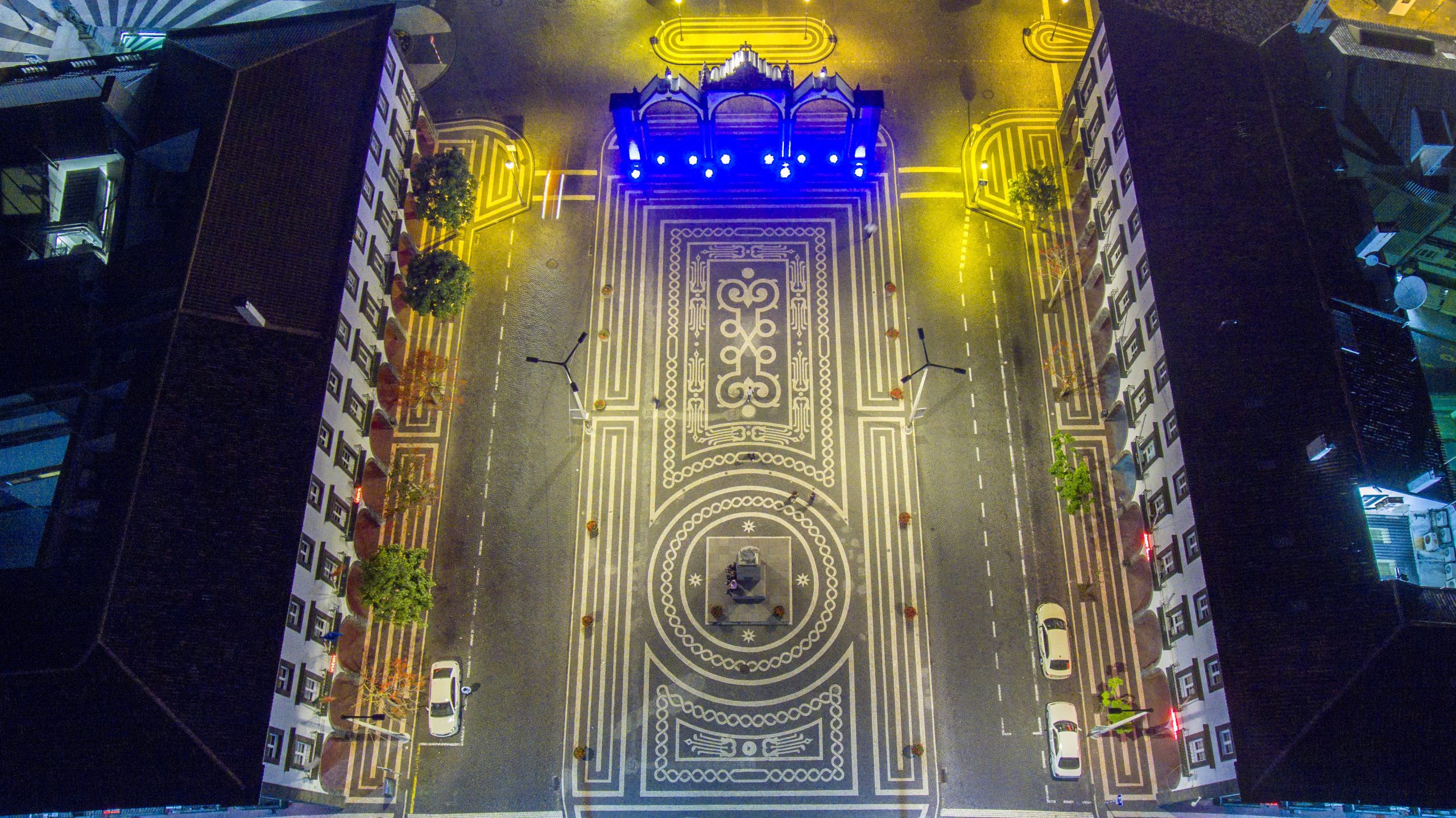
Praça Gonçalo Velho Cabral is an outdoor space with a privileged view over the sea. Monuments and sculptures make it a point of great interest and popularity among residents and tourists.
- The statue of Captain Donatário Gonçalo Velho Cabral;
- The Portas da Cidade monument, an ex-libris of Ponta Delgada;
- The Mother Church of São Sebastião.
Quick Info
Gonçalo Velho Cabral was the first Donatory Captain of the islands of São Miguel and Santa Maria, where he disembarked in 1432. He was also responsible for the settlement of these islands in the 15th century.
Discover the Igreja Matriz de São Sebastião
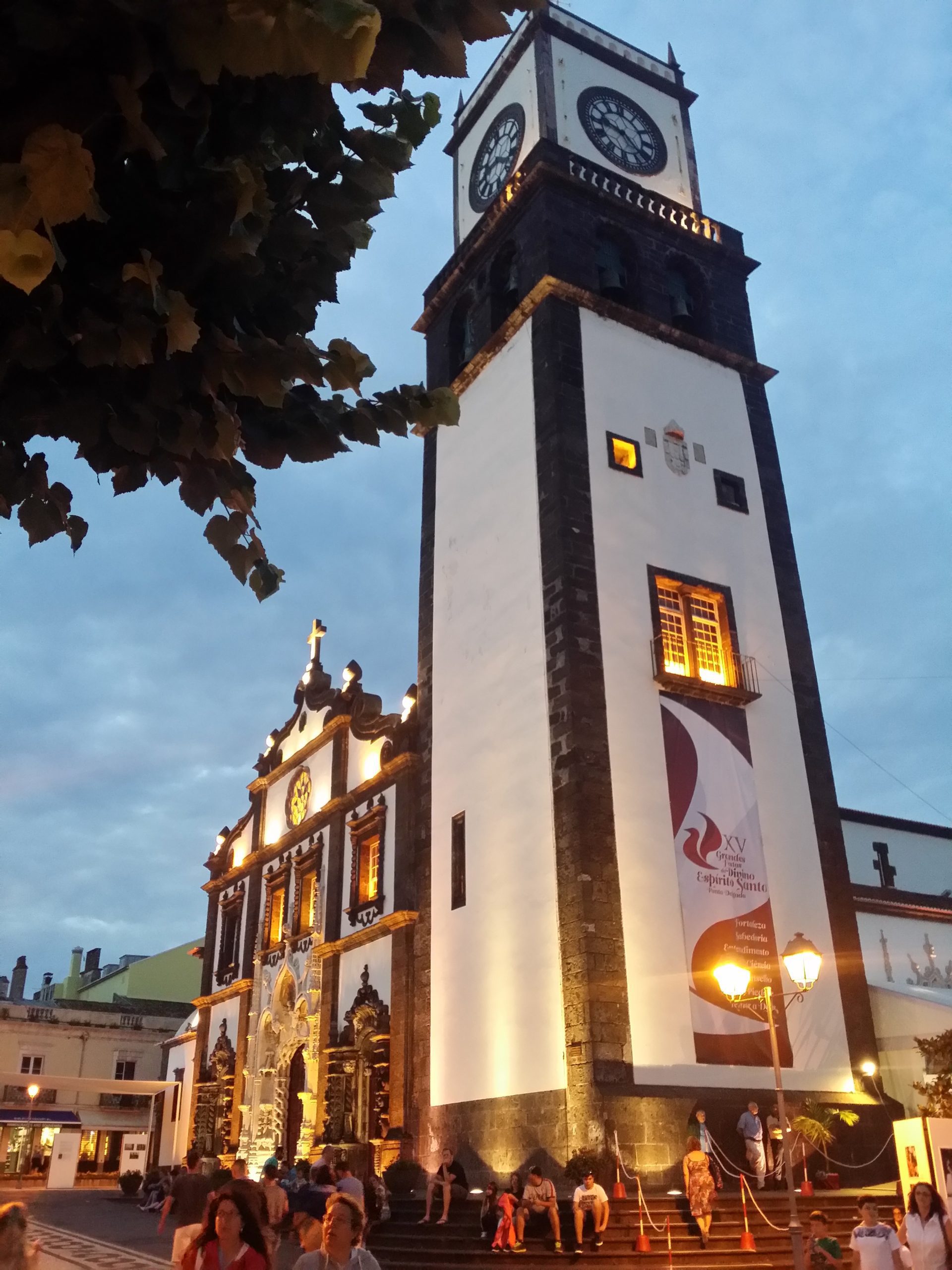
They built the Igreja Matriz de São Sebastião, also known as Igreja Matriz de Ponta Delgada, between 1531 and 1547. It has a facade in Manueline style with the presence of decorative elements from the time, such as coats of arms with royal weapons and arrows with arrows of the martyrdom of the saint.
The population built the Mother Church, appealing to the Holy Protector of the Sick for a miracle to end the plague that ravaged the city between 1523 and 1531.
This architectural work underwent some alterations throughout the 18th century, with the insertion of Baroque elements. The interior of the religious building is rich in gilded carving and high-quality local wood. Regarding furniture, this church has several jacaranda pieces from the 17th century and an extensive collection of gold-embroidered vestments.
Have Fun at Root Club
Raiz Club is located in the historic center of Ponta Delgada, with a privileged view over many monuments. It has been open to the public since 2016 and is located on the first floor of a 19th-century house. If you are looking for a pleasant space to enjoy concerts by Portuguese bands of the most varied musical styles and gatherings, Raiz Club will always be a suitable option for your Fridays and Saturdays. The ArchDaily website, a reference in the world of architecture, has already highlighted Raiz Club’s architecture and design.
Plan Your Visit to Portas da Cidade
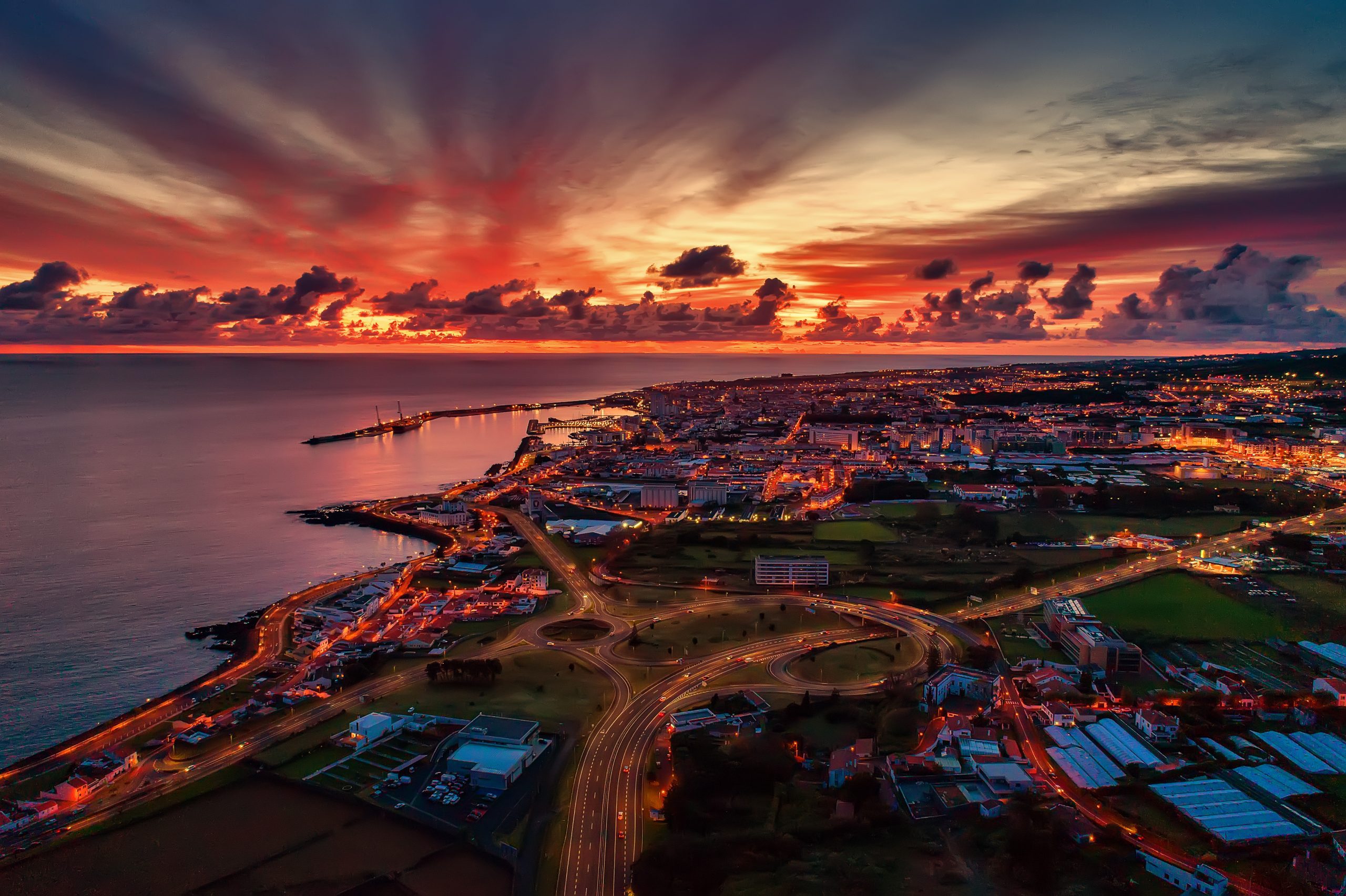
Where to Eat
If you need a place to eat near Portas da Cidade, click here. In this link, you will find the Top 10 restaurants on Tripadvisor.
Where to Stay
To make it easier for you, we already filtered the search on:
Best Time to Visit
The island of São Miguel is in the Eastern Group of the Archipelago. Here, you will notice the atypical characteristics of this climate, which result from many factors contributing to its plant exuberance and landscape value. On average, temperatures vary between:
- 16. º in spring;
- 21. º in summer;
- 18. º in autumn;
- 14. º in winter.
Thus, if you want to enjoy this island’s splendor (São Miguel) and this specific place, the best time to visit is between May and September, when the probability of rain is lower. On the other hand, if you would like to make your trip during this period, we advise you to organize and book your stay and flights as soon as possible — prices tend to go up a lot.
What to Do Around Portas da Cidade
Mercado da Graça (Farmers Market)
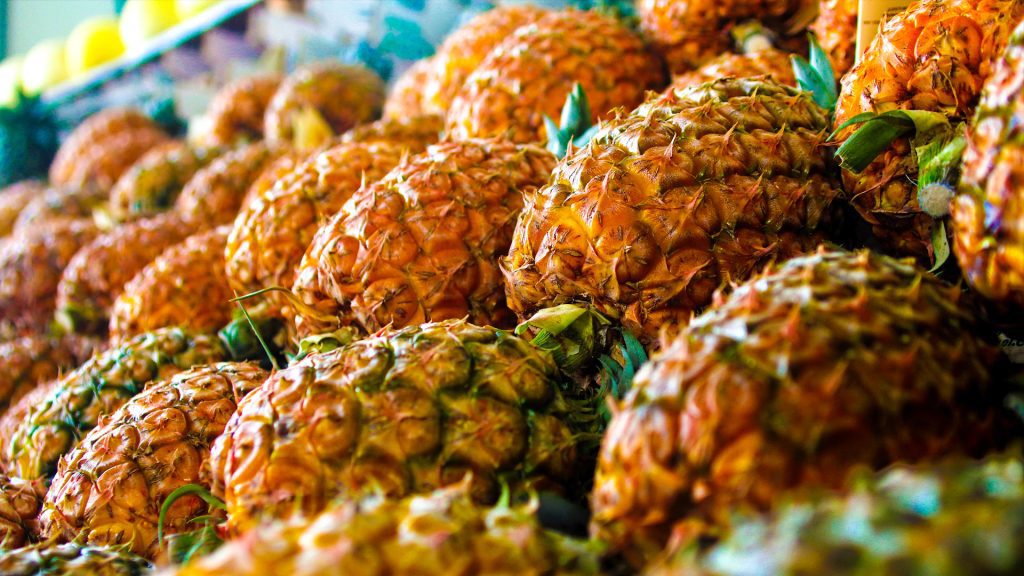
Mercado da Graça is located in the parish of São Pedro, in the city and municipality of Ponta Delgada. This market is one of the most emblematic places in the city and is located in a small and busy square. With liberalism, the need arose to build a new market suitable for merchants. The Chamber deliberated on March 16, 1847, to build the Mercado da Graça on Rua do Mercado, which was completed in 1848.
Mercado da Graça offers a wide variety of high-quality regional and fresh products, such as fruits, vegetables, and roots. In addition, there are also fishmongers, butchers, and some shops selling flowers, souvenirs, and regional handicrafts.
Did you know
Until the 19th century, there were no specific places to sell agricultural products and livestock in Ponta Delgada. Everything happened on the south side of the Matrix and in Arcadas do Cais, also known as Arcadas da Feira.
→ Related article: Mercado da Graça
Discover the Church of Santo Cristo and the Church of Colégio dos Jesuítas
The Igreja do Colégio dos Jesuítas Church, along with the Santo Cristo Church, was built in the 16th century as the Society of Jesus expanded to the Azores from 1591 onwards.
The Church of Santo Cristo, also known as the Church of Nossa Senhora da Esperança, is located in the heart of the city of Ponta Delgada and underwent some changes in the 17th and 18th centuries. Inside, you can find the house of prayer, the famous image of Senhor Santo Cristo dos Milagres, composed of a beautiful set of gold and precious stone ornaments. There are also sculptural and ornamental decorations of great richness and cultural interest.
The Igreja do Colégio dos Jesuítas church draws inspiration from the architectural style of baroque art. It meticulously decorates its volcanic stone facade with exuberant elements and features gilded carvings on the main altar and 18th-century tile panels.
Quick Info
Also known as the Church of All Saints, the Igreja do Colégio dos Jesuítas began to be erected on November 1, 1592 — All Saints’ Day.
→ Related articles: Senhor Santo Cristo dos Milagres | Public Holidays in the Azores
Public Library and Regional Archive of Ponta Delgada
The City Council founded the Ponta Delgada Public Library and Regional Archive in 1841 and opened it to the public in 1846. In 1931, it passed to the General Board of the District of Ponta Delgada, creating a district archive of the city in the annex. The Public Library and Regional Archive of Ponta Delgada are responsible for organizing and making available a repository of the Azores’ historical memory, particularly of the islands of São Miguel and Santa Maria. This library keeps documentation from notaries and conservatories dating back over 30 years and also has one of the largest and richest Camonian collections in the world.
→ Related article: Ponta Delgada
Stroll through the António Borges Botanical Garden
The António Borges Botanical Garden features romantic and picturesque surroundings that harken back to the 19th century. This ample green space in Ponta Delgada ranks among the city’s most extensive gardens and is widely regarded as one of São Miguel’s most pleasant locations. Jardim António Borges is also the “stage” for various cultural, recreational, and sporting activities. The magnificent António Borges Botanical Garden is a municipal park with an endless variety of botanical species. This property has several trees and fascinating plants that are unique to the region.
Did you know
António Borges Medeiros was an Azorean linked to politics and business who always showed great interest in botany and in the insertion of new species in São Miguel.
→ Related article: Jardim António Borges
Explore the Pineapple Plantations of the Azores
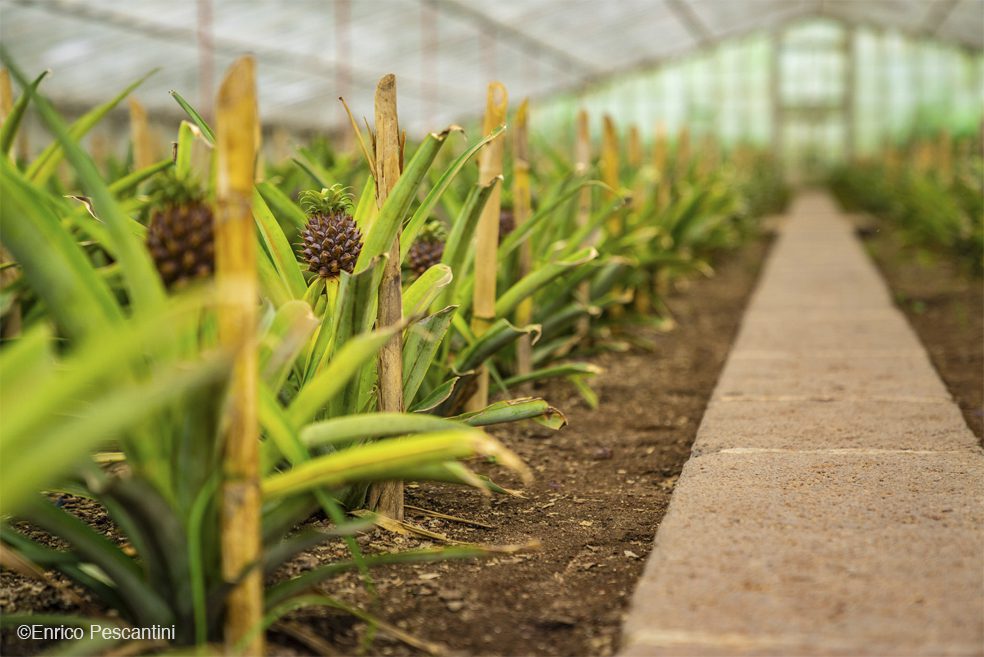
Producers grow pineapples in greenhouses in the Azores. Many producers are spread across the island of São Miguel. São Miguel is the only place in the world where pineapples are grown in greenhouses, with around 6,000 plantations across the island. These pineapples are grown in volcanic soils and watered with thermal waters, giving the fruit a unique flavor. It is one of the main tourist attractions in the region, where visitors have the opportunity to learn about the pineapple growing process, from planting to harvesting. In addition, you can also enjoy guided walks and tastings of pineapple-based products.
Complementary Information
Best Season to Visit the Azores
The Azores Archipelago boasts a unique climate that shapes its lush landscapes, making it a splendid year-round destination. With mild temperatures and minimal fluctuations, each season offers something unique. Spring averages 16 °C, summer reaches 21 °C, autumn cools to 18 °C, and winter remains mild at 14 °C.
→ For a detailed breakdown of the weather by month, check the following links 🌤️☔️: January | February | March | April | May | June | July | August | September | October | November | December
How to Get to the Azores
The Azorean Archipelago is easily accessible through numerous flight routes. Lisbon and Porto are the main entry points to the continent, with direct flights available to São Miguel (PDL), Terceira (TER), Faial (HOR), Pico (PIX), and Santa Maria (SMA). To find the best flight, use search engines like eDreams or Skyscanner. These platforms let you compare prices and schedules from multiple airlines in one convenient location.
For more details on how to get to the Azores, take a look at our complete guide. But what if you want to explore beyond your arrival island? We’ve got you covered!
- Azores airports 🛬
- Flights between islands ✈️
- Ferries between islands ⛴️
- Which island to choose? 🏝️
- What airlines fly to the Azores? 🛩️
→ Once you’ve found the perfect route, book your tickets and get ready to experience one of the world’s most stunning island groups!
Travel Essentials
Essential Information for your Azores trip: Azorean Language & Phrases 🗣️ | Currency & Banks 💵 | Credit Cards & Traveler’s Cheques 🏧 | Driving in the Azores 🚗 | Electricity 🔌 | Experiences & Tours 🗺️ | Health & Safety 🩺 | Internet & Wi-Fi Access 🛜 | Phones & Mobile Service 📞 | Post Offices & Buying Stamps ✉️ | Public Holidays 🏖️ | Shopping 🛒 | Time & Daylight 🕒 | Whale Watching Guide 🐳 | Best Island to Visit 🏞️
Useful Tools & Apps
The weather in the Azores can be variable, so it’s helpful to use some apps before visiting the islands. Spotazores provides live camera feeds from the main tourist attractions, allowing you to check the weather and plan your visit. For accurate weather predictions, use Windy or Windguru — they provide the most reliable predictions.
Video
Conclusion
Portas da Cidade de Ponta Delgada is a historical monument dating from the 18th century that attracts national and international visitors daily. Built in basaltic stone and decorated with Baroque elements and symbols of the city and the archipelago, this monument marked the main entrance to the old town of Ponta Delgada.
This emblematic place hosts many events and festivities in the city and includes all tourist routes. Due to its central location, numerous must-see places in Ponta Delgada will be found in the surrounding area of the monument. Take the opportunity to know and explore this beautiful city!
Authors’ Note
I am pleased to inform you that all the recommendations in this article are based on my personal experience and observations. As the author, I have personally visited each attraction mentioned, ensuring that every suggestion is grounded in first-hand knowledge and genuine enthusiasm.
FAQs
The Portas da Cidade is a monument composed of three arches made of basaltic stone, adorned with sculptural and ornamental elements, including symbols of the city and the Azores archipelago.
The Portas da Cidade is located in Ponta Delgada, on São Miguel Island, Azores, specifically in Praça Gonçalo Velho Cabral.
To reach the Portas da Cidade in Ponta Delgada, you can walk along Avenida Marginal or use public transportation or a taxi, as they are easily accessible on foot from the city center.
Must-see points in Ponta Delgada include the Portas da Cidade, Mercado da Graça, Jardim António Borges, and Forte de São Brás.






